ANNA PEI
The 24-year-old setting New York and Paris alight
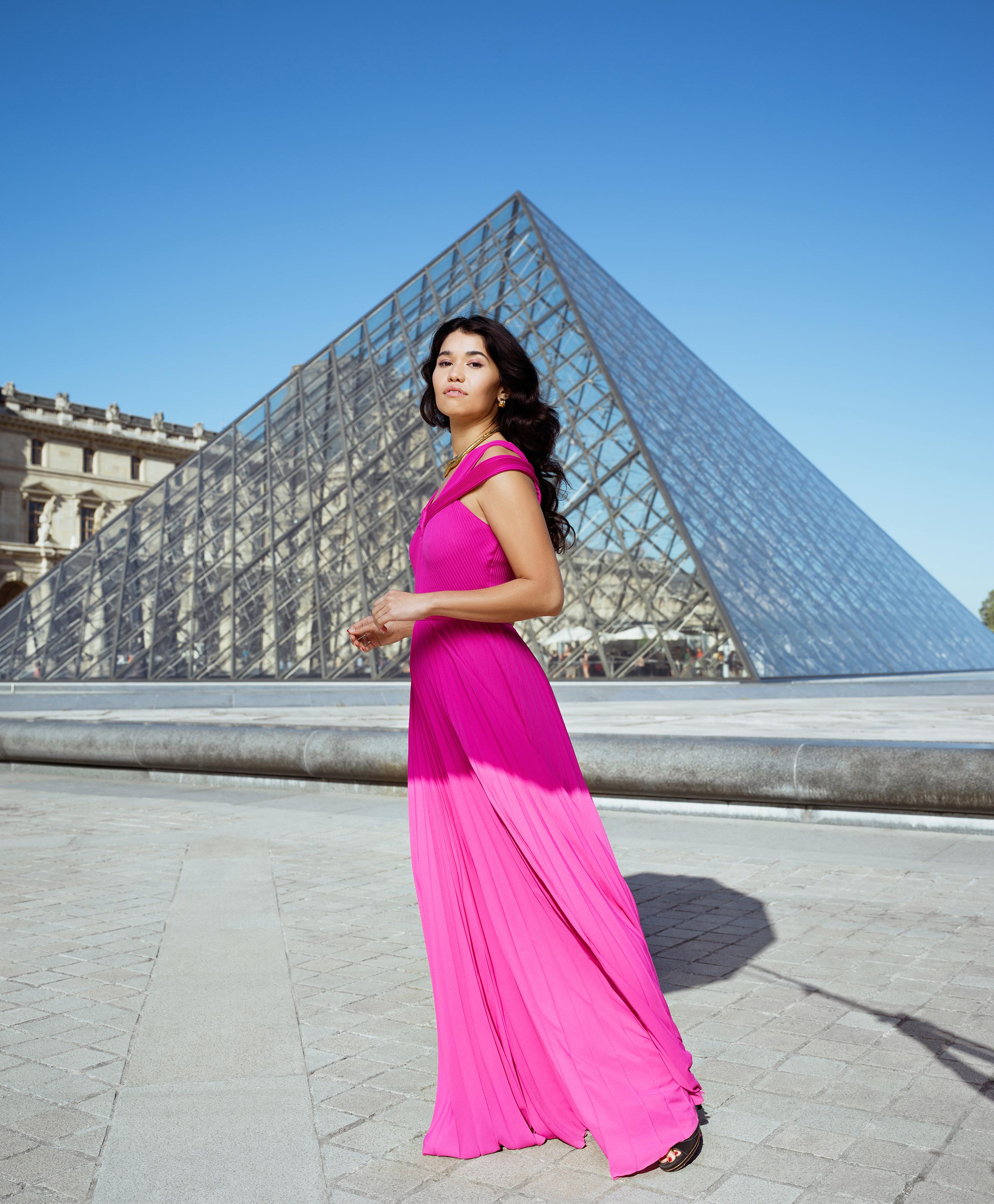

461 Park Avenue at 57th Street, New York, NY 10022 Harrods, Brompton Road, London SW1X 7X www.richard-james.com


marsaxlokk


PEI DAY Anna Pei photographed in Paris by Matthew Avignone for Avenue. All clothes by Ungaro. FEATURES 58 AN AMERICAN IN PARIS Anna Pei, the granddaughter of I.M. Pei, talks to Mike Albo about friends, family, and the importance of memories. 66 THE INNOVATORSDESIGN Avenue rounds up 50 of the most influential players in New York’s adrenaline-filled world of design. 78 STEPPING OUT Graeme Fidler, the new designer at the helm of Harrys London, reveals to Aria Darcella his vision for the well-shod modern man. CONTENTS SEPT.–OCT. 2022 VOL.45 NO.5
10 VERNISSAGE
Avenue’s insider preview of all that’s new and noteworthy: the forgotten genius of fashion designer Claire McCardell; the trend for testosterone and other anti-aging remedies; and the legend of Ferragamo
BYrevisited.HORACIO SILVA
14 BUY CURIOUS
Bright sparks that stand out this fall, and retro nouveau for a room of your own.
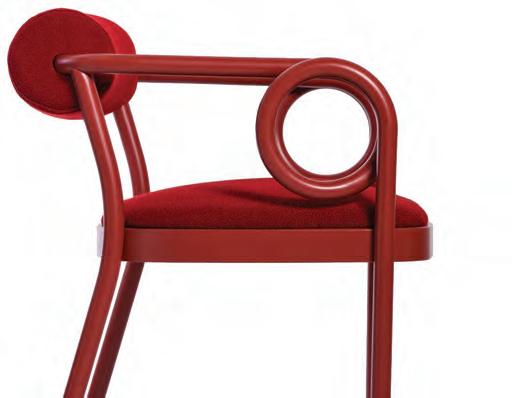
BY HORACIO SILVA
18 THE CHRONICLESD&D
An homage to New York’s hub of design creativity, the Decoration & Design Building; plus the D&D Building Directory.
38 A BLASTA FROM THE PASTA
New York restaurants where the gnocchi is perfetti and everything else is molto yummy.
BY JOSHUA DAVID STEIN
CULTURE
42 FLASHMAN
The debonair Douglas Friedman, photographerinteriorstothe stars, has a new show in town.

BY PETER DAVIS
48 THE ART PRINTMAKINGOF
Kerry James Marshall unveils an intimate aspect of his groundbreaking oeuvre.
BY ANGELA M.H. SCHUSTER
52 ALL THAT JAZZ Trailblazing photographer Kwame Brathwaite, who redefined Black beauty, steps into the spotlight.

BY ANGELA M.H. SCHUSTER
54 FIVE PIECESEASY
The must-see art shows this fall.
BY ANGELA M.H. SCHUSTER
56 BOOK REVIEWS
Beware the future and the past, and consider the present, with a crop of books this fall.
REVIEWED BY CELIA MCGEE, DANIEL KAREL, ALLISON ESCOTO, AND JOSHUA DAVID STEIN
LIVING
84 CATHY GRAHAM IN FULL
The New York hostess and floral designer finds inspiration in the most unlikely of places.
BY CELIA MCGEE
90
NOTORIOUSNEWYORKERS
John Wojtowicz and the Brooklyn bank heist that inspired the film Dog Day Afternoon
BY TODD KINGSTON PLUMMER
92 ON THE AVE. Flights of fancy across the Hamptons.
96 SOCIAL SKILLS
A pooch’s point of hue.
COVER: Illustration by Cecilia Carlstedt
BOOT UP Top: Harrys London men’s boots from the autumn/winter 2022 collection; left: Black models pose in a Harlem public school playground in this iconic image by Kwame Brathwaite, taken ca. 1966; right: a Gebrüder Thonet Vienna chair.
4 AVENUE MAGAZINE | SEPTEMBER—OCTOBER 2022
THONETGEBRUEDERCOURTESYSOCIETY;HISTORICALNEW-YORKTHECOURTESYANGELES,LOSGALLERY,MARTINPHILIPANDARTISTTHECOURTESYBRATHWAITE,KWAME©LONDON;HARRYSCOURTESYPICZO
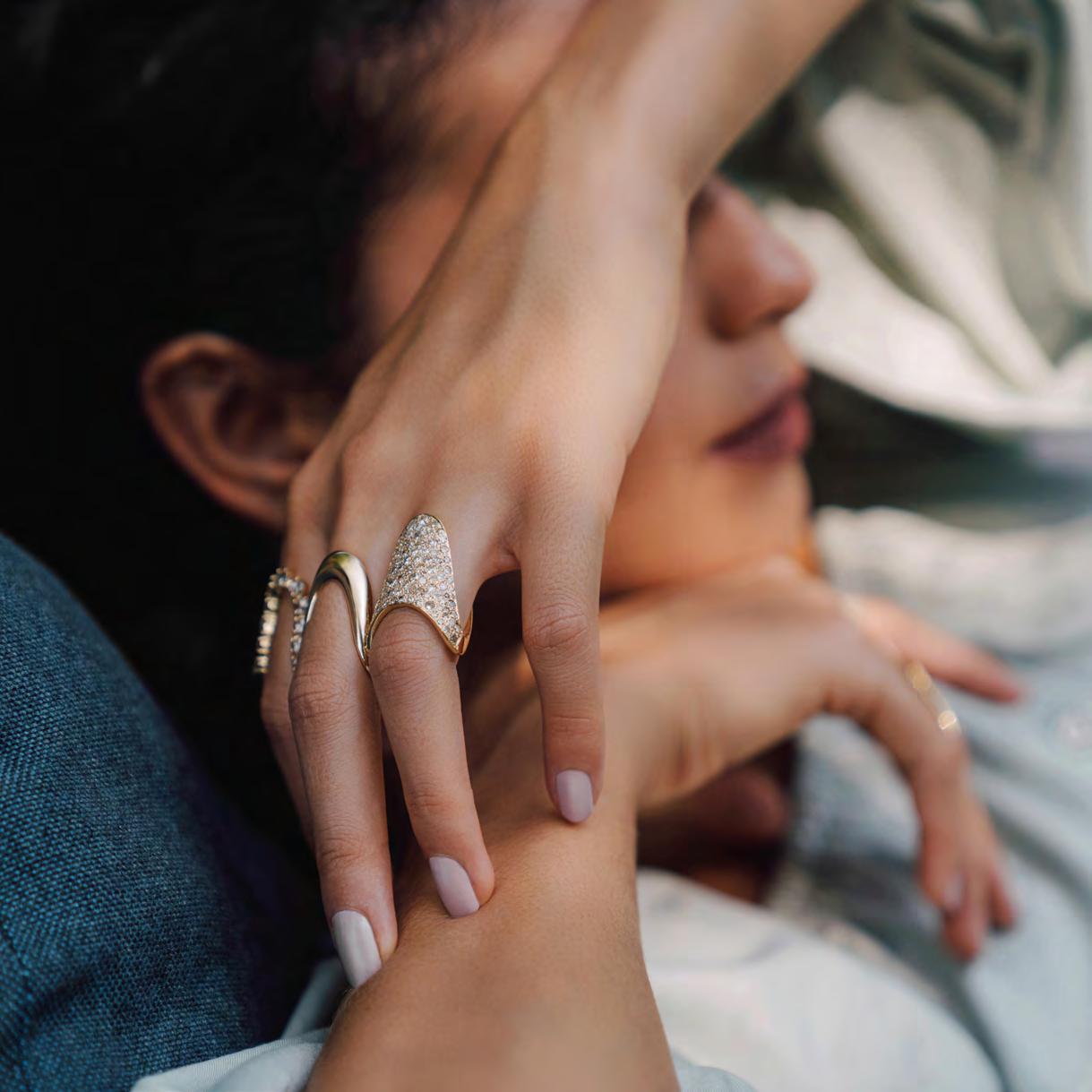
29 East 73rd Street, New York +1ivarjewelry.com(917)742 9538
Innovators
Like the great city it showcases, Avenue has always been a magazine that celebrates achievement and creativity. The blockbuster Fall Design issue is our love letter to the design community. Firstly, we are thrilled to debut the Avenue Design Innovators List, featuring 50 of the most influential players in New York’s colorful, competitive world of design. From legendary decorators to new, fresh talent, the Design Innovators List highlights the most exciting visionaries in interiors, lighting, wallpaper, furniture, and textiles.
On the eve of the D&D Fall Market this October, our design issue also pays homage to the iconic Decoration & Design Building, which has been a hub of creativity for the design world since it opened in 1968.
In this issue, you will also meet the prolific and well-connected Douglas Friedman, the interiors photographer who shoots inside the homes of everyone from Hollywood stars to finance moguls; the groundbreaking artist Kerry James Marshall; and power florist Cathy Graham. Finally, we are pleased to present Anna Pei, the granddaughter of legendary architect I.M. Pei and the founder of her own archival firm, Ode. Avenue photographed Anna in Paris, where she was radiant in Ungaro in front of her grandfather’s iconic glass pyramid at the Louvre.
With its eye-catching cover illustration and stellar content, we know you'll agree that this edition of Avenue is a keeper.
PETER DAVIS
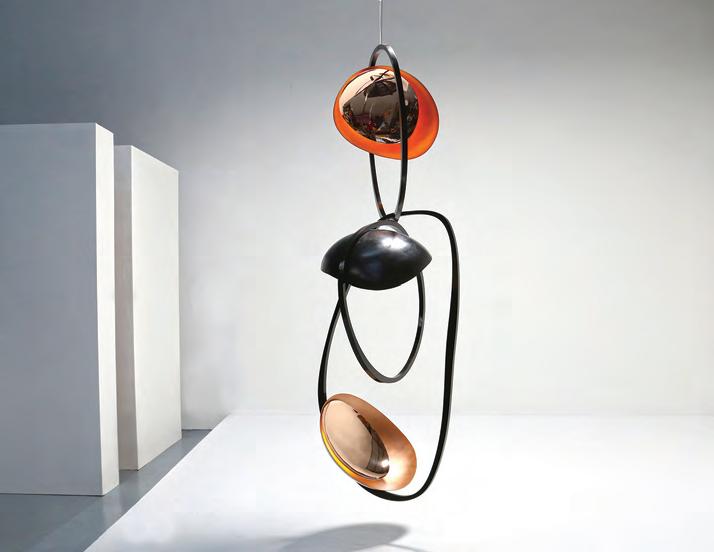
Like and follow us avenuemagazine.comweekly@AVENUEinsideratSignupforournewsletterat 6 AVENUE MAGAZINE | SEPTEMBER—OCTOBER 2022
Editor-in-Chief BARRYNIAMHCOURTESY
October 28-30
VIP Preview October 27
Javits Center New information
The IFPDA Print Fair returns to the Javits Center in New York October 27-30 for the preeminent international fair showcasing 550 years of prints and printmaking.


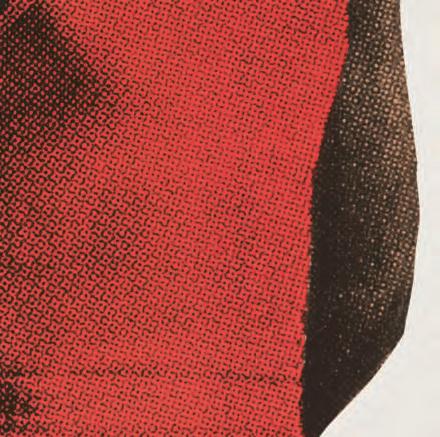
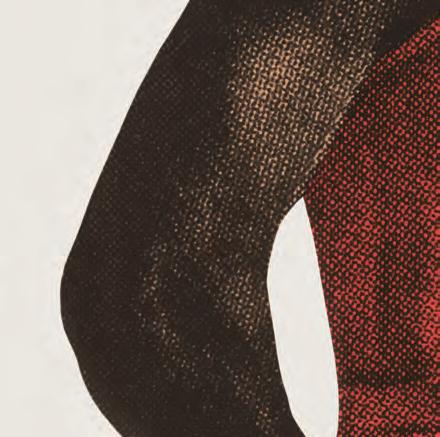

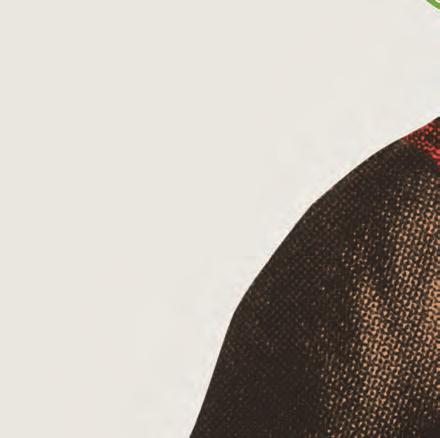


TicketsYorkand
IFPDA.org 2022.Adams,Derrick
PETER DAVIS was born and raised on the Upper East Side and began his magazine career while still at Bennington College, writing for New York’s Paper magazine. He first worked at Avenue just over a decade ago and is thrilled to rejoin as Editor-inChief. “I grew up with Avenue and I am so excited with the new direction the magazine has taken since its relaunch. It’s smart, stylish, and covers every cultural corner of New York.” Most recently the Editor-in-Chief of L’Officiel USA, Davis has written for the New York Times, Vanity Fair an the Wall Street Journal. He currently divides his time between New York City and Bedford, NY.
WENJING YANG (Vernissage, page 10), newly minted with a BFA from the School of Visual Arts, is an award-winning illustrator who has called New York home for the past four years. She lives in Midtown with a roommate and a “really pretty Abyssinian cat—I love it so much!”
EDITOR-IN-CHIEF
Peter Davis
CREATIVE DIRECTOR

Courtney Gooch
DEPUTY & MANAGING EDITOR
Angela M.H. Schuster
EDITOR-AT-LARGE
Heather Hodson
PHOTOGRAPHY DIRECTOR
Catherine G. Talese
PRODUCTION DIRECTOR Jessica Lee
STYLE EDITOR
Horacio Silva
LITERARY EDITOR
Celia McGee
DIGITAL FASHION EDITOR
Aria Darcella
DEPUTY PHOTOGRAPHY EDITOR
Daniela G. Maldonado
CONTRIBUTING WRITERS
Constance C.R. White, Tom Shone, Judd Tully, Alexis Schwartz, Mike Albo
CONTRIBUTING PHOTOGRAPHERS
MATTHEW AVIGNONE (An American in Paris, page 58),was born in Busan, South Korea, and raised in Chicago, and is now based in Paris, where he lives with his partner and child. Since earning a BA in photography from Chicago’s Columbia College, his work has been exhibited in New York, London, Pingyao, and Seoul, and been featured in the New York Times, T Magazine, and The New Yorker. Off hours, he enjoys urban fishing along the Seine and playing pool at his local pub.
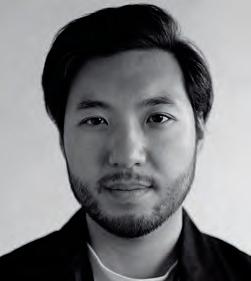
DANNY KAREL (Book Reviews, page 56) worked as a magazine writer and local newspaper reporter in Los Angeles, before moving to New York in 2020 to pursue a master’s degree in journalism at NYU. His reportage, photography, and essays have appeared in New York magazine, Vice, and Salon. For this issue, he offered his assessment of Yiyun Li’s novel The Book of Goose. “It transfixed me from the start— Li’s prose is as chiseled as her imagination is wild.” The East Village denizen tells Avenue he is soon decamping to Brooklyn.
Anders Overgaard, Richard Kern, Landon Nordeman, Rainer Hosch, Johnny Miller, Martin Vallin, Nick Mele
© 2022 by Cohen Media Publications LLC
AVENUE MAGAZINE 750 LEXINGTON AVENUE 16TH FLOOR NEW YORK, NY EDITORIAL@AVENUEMAGAZINE.COM10022
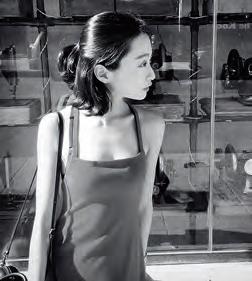
MEMBER OF ALLIANCE FOR AUDITED MEDIA PUBLISHER

Spencer Sharp
COHEN MEDIA PUBLICATIONS CHAIRMAN Charles S. Cohen

LLC
8 AVENUE MAGAZINE | SEPTEMBER—OCTOBER 2022 KARELDANNYCOURTESYCAPPELLA;ARIELLEBYAVIGNONEMATTHEWYANG;WENJINGCOURTESYROSSER;BENBYDAVISPETER
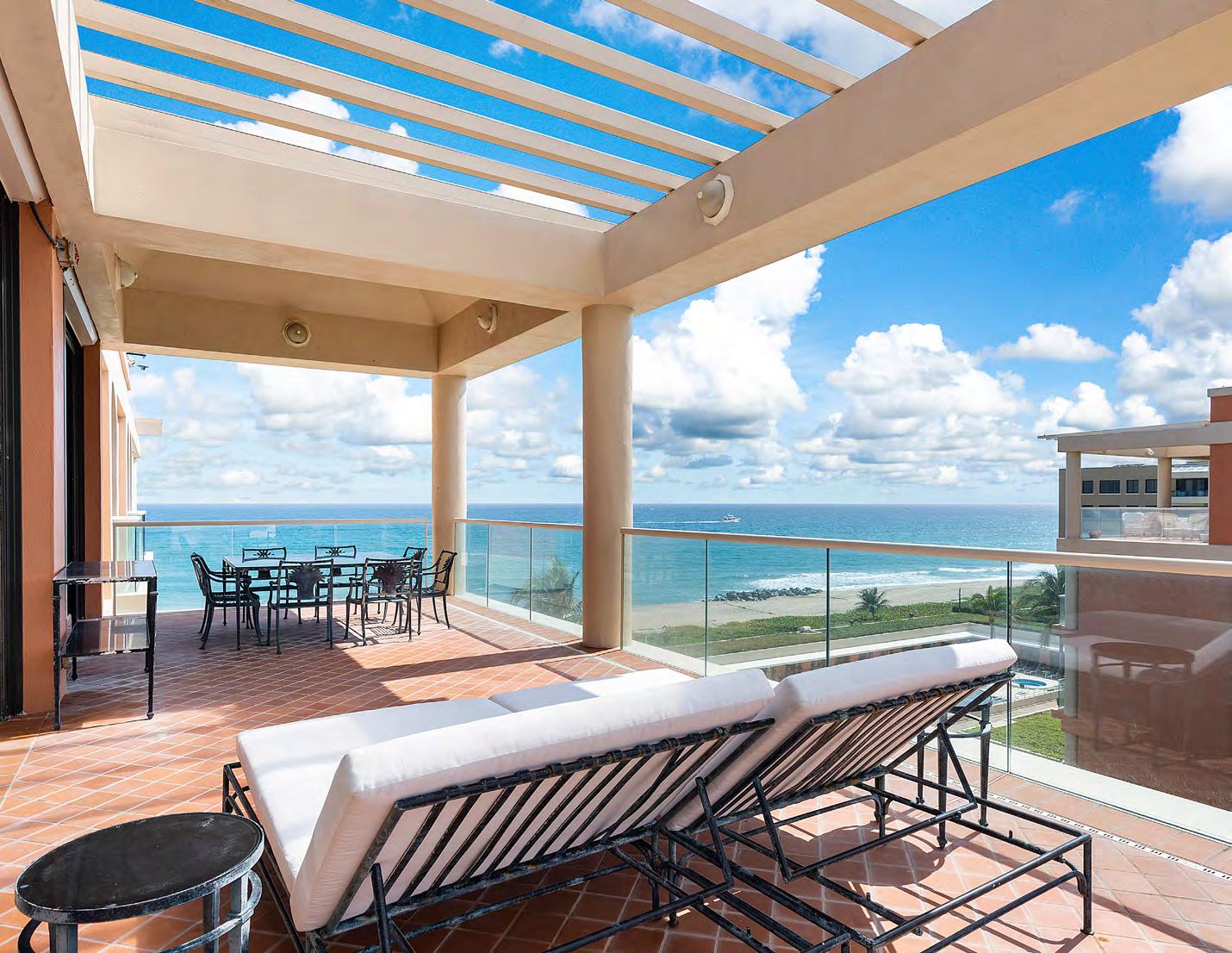

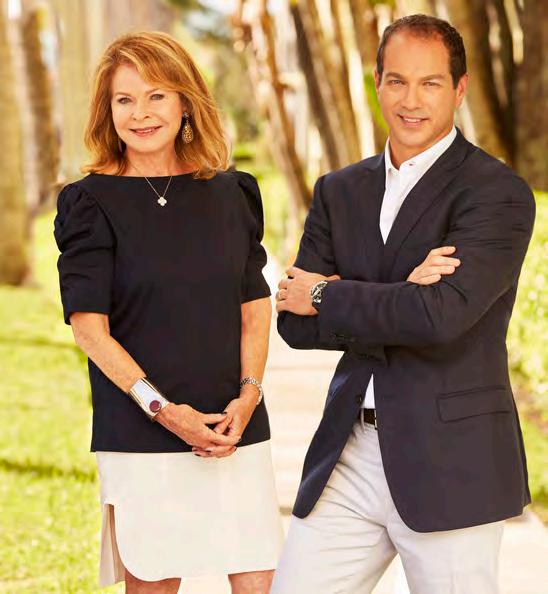
Transform your vacation destination into your own slice of paradise. Owning a home in Palm Beach has never been more valuable. Contact The Koch Team to navigate the market with the Island’s proven real estate leaders. SCAN HERE TO PURCHASE PENTHOUSEOCEANFRONTTHIS Ranked by sales volume by RealTrends as published in TheWallStreetJournal PALM BEACH3# FLORIDA6# NATIONWIDE12# Our ads turn more heads than the dolphins at Main Beach. 1 Billion$ SOLD IN 2020 - 2021 OVER EXPERIENCE THE #THEKOCHEXPERIENCEDIFFERENCE Paulette Koch Broker Associate m 561.346.8639 | paulette.koch@corcoran.com #14 Nationwide by Wall Street Journal / RealTrends 2019 Equal Housing Opportunity. All information furnished regarding property for sale or rent or regarding financing is from sources deemedreliable, but Corcoran makes no warranty or representation as to the accuracy thereof. All property information is presented subjectto errors, omissions, price changes, changed property conditions, and withdrawal of the property from the market, without notice.All dimensions provided are approximate. To obtain exact dimensions, Corcoran advises you to hire a qualified architect or engineer. @ KochTeam Follow us on Instagram, Dana Koch Sales Associate m 561.379.7718 | dana.koch@corcoran.com #12 Nationwide by Wall Street Journal / RealTrends 2022 Spectacular Breakers Row Featured Listing (above): 3BR | 3.5BA | $19.5M | WEB# 14881
VERNISSAGE
 TORY BURCH
TORY BURCH
WomenDesigning
Hi story has been stingy with Claire McCardell. A creative powerhouse of the ’40s and ’50s, whose casual separates became the wardrobe staple of independent women and the template for American sports wear, McCardell and her contributions remain criminally undersold.
“Like many women in history, Claire McCar dell’s contributions haven’t been properly cele brated or documented,” says designer Tory Burch, who first discovered McCardell as an art histo ry major at the University of Pennsylvania. “So many of her ideas”—pockets on dresses, zippers on skirts, ballet flats, spaghetti straps, mix-andmatch separates—“are taken for granted today, and she inspired every designer to the point where her innovations became a given.”
McCardell, who died of cancer in 1958 at age 52, may be relegated to being an occasional, often unwitting referent in a designer’s collection, but her original contributions are writ large in her
1956 fashion and style book What Shall I Wear? (Abrams Books), which is back in print for the first time in years.
In this breezy, heavily illustrated compendi um of fashion advice and aperçus, she emerges as a practical but no less cheeky counterpoint to Vogue’s Diana Vreeland (who came around to the designer, but once damned a McCardell dress as “pathetic”) and her grand diktats.
The reissue also includes a new color insert of photos from her collections and a foreword by Burch, whose soft belts, knit bandeaus, and waist-defining hook-and-eye closures in her spring/summer 2022 collection were nods to McCardell’s versatility and functionality.
“Claire’s contributions to fashion in the ’40s and ’50s paved the way for generations of design ers to think critically about what women want to wear,” Burch tells Avenue, “and how clothing can—and should—instill a sense of freedom and ease.”Despite the modernity of her designs and rep utation as an icebreaker, McCardell has remained preserved in an aspic of ’50s nostalgia, an unfair image of her as a Douglas Sirk–era housewife cre ated largely by the iconic Time cover she got at the height of her fame.
Some modern readers might recoil at McCardell’s retrograde tips for dieting and dress ing to please your man, but Burch says the book’s sage advice will strike a chord with young moderns.
“McCardell discarded the rules of what women should wear, instead problem-solving for the real ity of their lives,” Burch explains. “That concept absolutely resonates with young women today— they expect fashion to suit their lifestyle, not the other way around.”
Or, as McCardell herself writes in her book, “Fashion survives when it deserves to.”
horacio silva
“ LIKE MANY WOMEN IN HISTORY, CLAIRE MCCARDELL’S CONTRIBUTIONS
HAVEN’T BEEN PROPERLY CELEBR ATED OR DOCUMENTED.”
SEPTEMBER—OCTOBER 2022 | AVENUE MAGAZINE 11
Illustrations by Wenjing Yang
PerformancePeak
It’s not easy being a master of the universe. Gone are the days when an aspiring rain maker could get away with nodding con cessions to health and a trainer who all but exercises for you. Today’s type A guys are lifting their game, trying all manner of be spoke health services to gain a competitive edge over their increasingly younger rivals.
“It takes an army these days,” says Dr. Paul Jarrod Frank, a cosmetic dermatologist and au thor of The Pro-Aging Playbook (Post Hill Press),
“and making a lot of small changes is going to give you big results. Life is a chronic disease, it’s all going downhill, so what can we do long term from the inside out that is going to make us stronger and live more vital lives?”
Frank’s two New York practices, one uptown near the Guggenheim and the other on Perry Street in the West Village, are cheerier than his world-weary summation might suggest, and are among the slick new holistic one-stop shops for guys looking for an extra pep in their step.
Across the city, guys are turning to high-touch point clinics like Frank’s for advice on everything from naturopathic diet supplements and drips designed to aid cognitive function to preventa tive medicines to improve performance in the bedroom and boardroom. They are going beyond testosterone, and taking growth hormones in low

doses to look younger and have more energy, as well as engaging in stem cell therapy and its less controversial cousin—exosome therapy—to fix a list of “Testosteronecomplaints.alone is awesome,” says derma tologist Dr. Jessie Cheung, who sees captains of industry and high achievers in her clinics in New York and Chicago, “but the next step beyond testosterone for antiaging is peptide hormone therapy, which includes human growth hormone and growth hormone secretagogues. Think of Hollywood celebrities—they are probably on some type of growth hormone or exosome thera py to look younger and have the energy to sustain their grueling lifestyles.”
Some experts, like Dr. Jake Deutsch, are charging monthly retainers running to $10,000 a month to be on call for their demanding charges.
“ THINK OF HOLLYWOOD CELEBRITIES— THEY ARE PROBABLY ON SOME TYPE OF GR OWTH HORMONE OR EXOSOME THERAPY TO LOOK YOUNGER AND HAVE THE ENERGY T O SUSTAIN THEIR GRUELING LIFESTYLES.”
DR. JESSIE CHEUNG
12 AVENUE MAGAZINE | SEPTEMBER—OCTOBER 2022
Deutsch, who compares his high-end suite of offerings and white-glove service at his New York practice (complete with Damien Hirsts in the handsome lobby) to a “Net-a-Porter of health,” inspires a cultlike veneration among his patients.
“It’s not about the puzzle, it’s about who sees the puzzle, and Jake is brilliant,” says Noah Neiman, 38. “I literally trust him with my life.” Neiman, an investor who started Rumble Boxing strength-training gyms, turned to the good doc tor after feeling sluggish and noticing a downturn in his training for a charity run. A comprehen sive blood test revealed spiked levels of estrogen and cortisol and worryingly low testosterone. Deutsch put him on a regimen of his own nutra ceuticals and a pharmaceutical to help his body to naturally produce testosterone. “Within three weeks,” Neiman says, his training improved, he began to put on muscle again, and generally felt “less angry with my friends and better.”
M.J. Bas, an entrepreneur and investor who initially went to see Deutsch to help with alert ness and energy throughout the day and now returns for monthly nicotinamide adenine dinu cleotide (NAD) drips, says having medical and mental health practitioners and advisors in your corner is invaluable. “I’m no elite athlete,” says Bas, 38, “but there is a reason LeBron James spends more than a million a year on various ex perts for himself to make sure his body and mind are at their peak performance. It’s a small price to pay for the massive impact that it can have on your life.”—hs
Heel Eternityto
The Salvatore Ferragamo story is well-worn. Shoe-obsessed kid from provincial Italy makes his first pair for sister’s holy com munion at age 9, moves to Naples at 12 to learn his craft, and even tually to the budding capital of dreams that was California in the early 20th cen tury, becoming as famous as his clients.

Salvatore Ferragamo: Shoemaker of Dreams, a new documentary about the designer directed by
Luca Guadagnino (Call Me By Your Name, I Am Love) and based on the 1955 autobiography of the same, certainly covers familiar ground—the pas sage to America, the birth of Hollywood, his latenight spaghetti feasts with Hollywood stars Greta Garbo and Rudolph Valentino, and his eventual return to Italy to establish headquarters in Flor ence. In interviews with talking heads, including Manolo Blahnik, Christian Louboutin, and Mar tin Scorsese, and drawing on rare archival foot age, Guadagnino manages to shine new light on a familiar if uncompromising fashion trailblazer.
“Salvatore was a visionaire, someone ahead of his time who somehow exuded a sense of in dividuality and uniqueness,” says Guadagnino. “Ferragamo’s work might not necessarily fall into what is perceived as fashion nowadays, but he was an artisan who understood how to make some thing essential while at the same time create an object that stood out as beautiful and provocative.
“Salvatore contributed so strongly to the birth of Hollywood—he was integral to it,” he contin ues. “He was part of that process of creating that dream, of creating the image of the stars. And
beyond the actual creation of the shoes for them, he was alongside them for the birth of that dream.”
Not that Guadagnino misses an opportuni ty to linger on the scene-stealing creations. The many loving close-ups of Ferragamos, particu larly in the Busby Berkeley–esque short film by stop-motion animator PES at the documentary’s end, sometimes bring to mind the 12,000 sandals he created for Cecil B. DeMille’s 1923 production of The Ten Commandments, or an elevated brand video (no surprise, since Guadagnino created arty short films for luxury house Fendi before becom ing an international art house darling.)
And while Shoemaker of Dreams is no The Last Emperor, the Matt Tyrnauer–directed documen tary that revealed an endearingly human side to designer Valentino, the focus here is not on the brittle façade of success but on the unrivaled craftsmanship of the master who created dreams for himself and others from the ground up.
As Cecil B. DeMille said of the cowboy boots that Ferragamo made for studio westerns, “The West would have been conquered earlier if we’d had boots like these.”—hs
“
SALVATORE FERRAGAMO WAS A VISIONAIRE, SOMEONE AHEAD OF HIS TIME WHO SOMEHOW EXUDED A SENSE OF INDIVIDUALITY AND UNIQUENESS.”
LUC A GUADAGNINO
SEPTEMBER—OCTOBER 2022 | AVENUE MAGAZINE 13


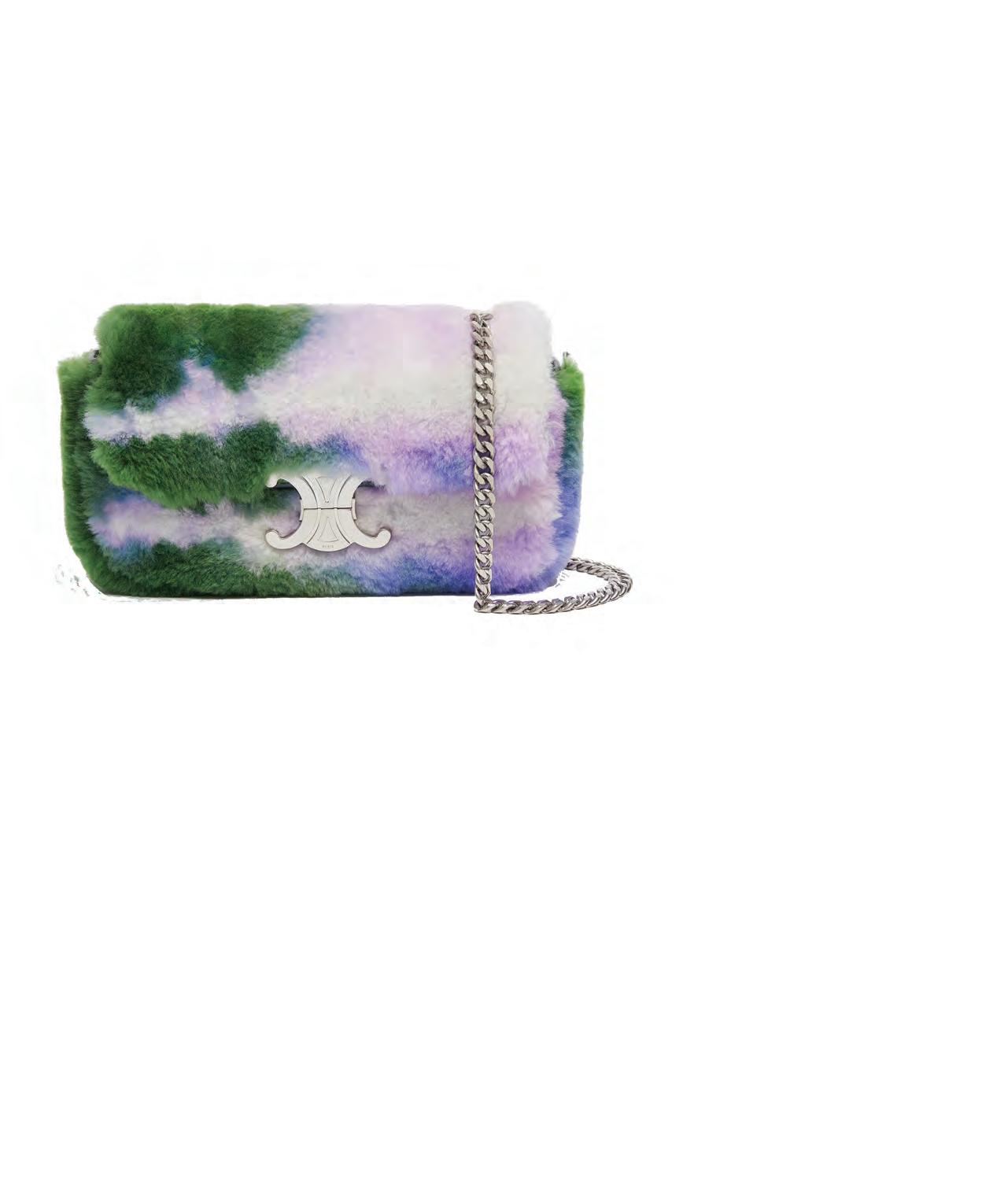
 aquamarine, tourmaline and diamond. Price on request;
aquamarine, tourmaline and diamond. Price on request;
14 AVENUE MAGAZINE | SEPTEMBER—OCTOBER 2022
824 Madison Avenue
Valentino pink wool overcoat. valentino.com$6,900;
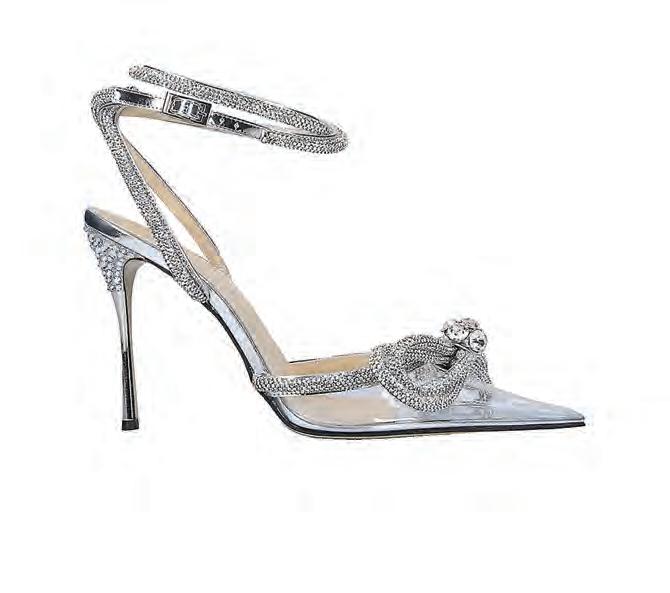




SEPTEMBER—OCTOBER 2022 | AVENUE MAGAZINE 15
Retro Nouveau
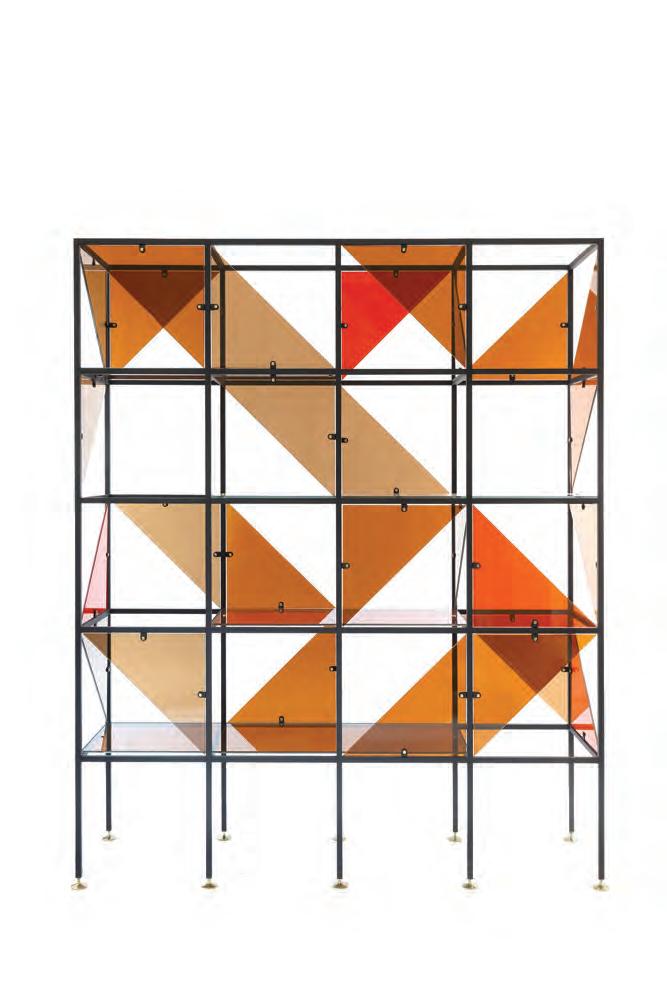

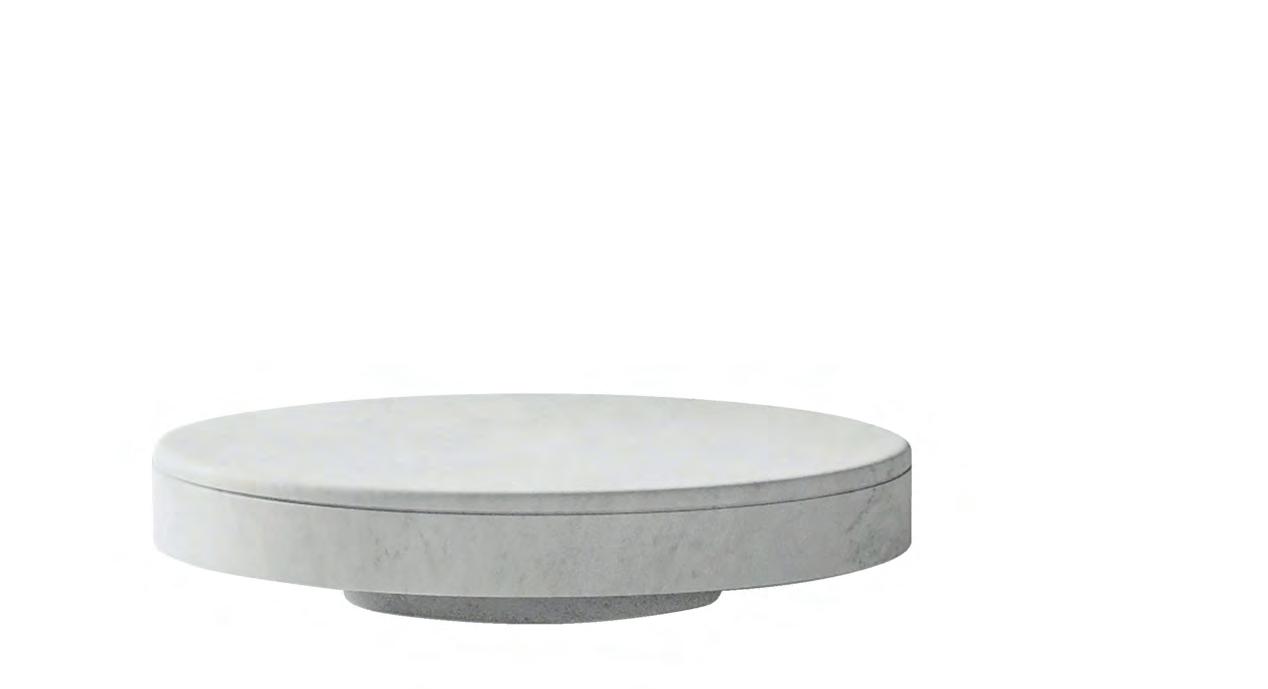
Nostalgia ain’t what it used to be
John Pawson for Salvatori “Omphalos” coffee table. salvatoriofficial.com$27,975;
Faye Toogood for Bitossi Ceramiche chalk centerpiece. Price on bitossiceramiche.itrequest;
Fendi Casa
16 AVENUE MAGAZINE | SEPTEMBER—OCTOBER 2022 BUY CURIOUS
x fendi.comPrice“Matrice”Dimorestudiobookshelf.onrequest;

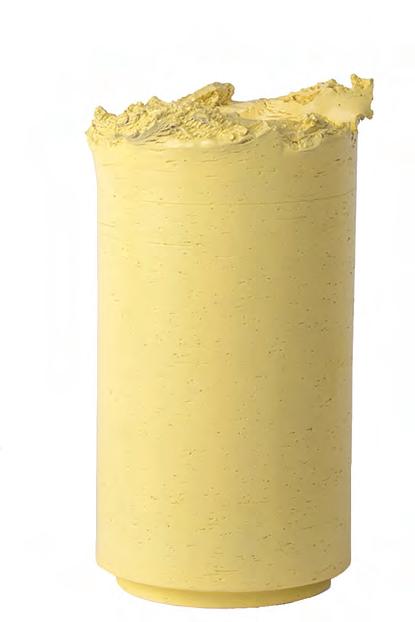

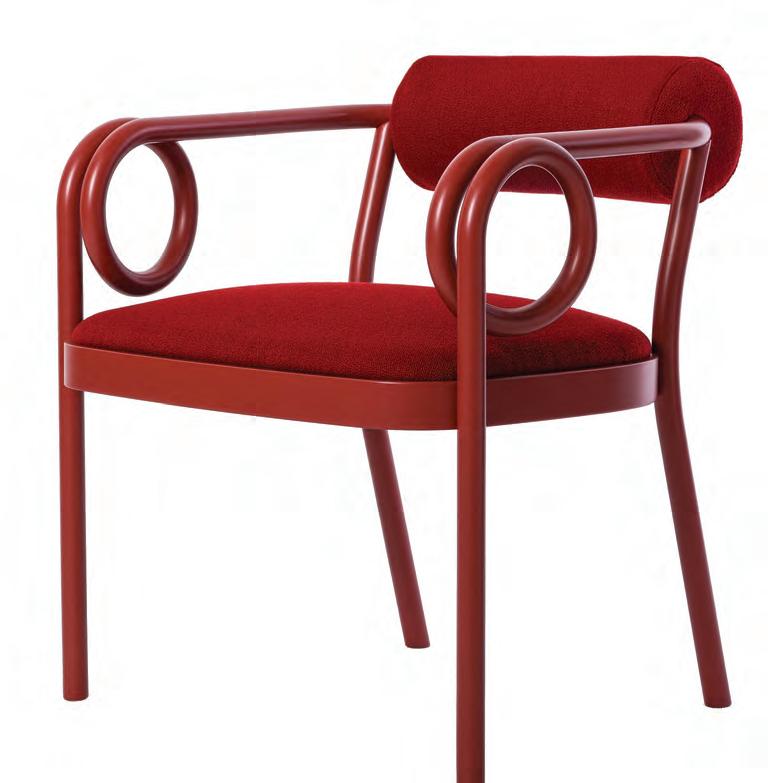 GamFratesi “Mos Cabinet” sideboard. $6,830; artemest.com
India Mahdavi for Gebrüder Thonet Vienna “Loop” chair. Price on gebruederthonetvienna.comrequest,
GamFratesi “Mos Cabinet” sideboard. $6,830; artemest.com
India Mahdavi for Gebrüder Thonet Vienna “Loop” chair. Price on gebruederthonetvienna.comrequest,
SEPTEMBER—OCTOBER 2022 | AVENUE MAGAZINE 17
Formafantasma for Bitossi Ceramiche clay jar. bitossiceramiche.it$620;
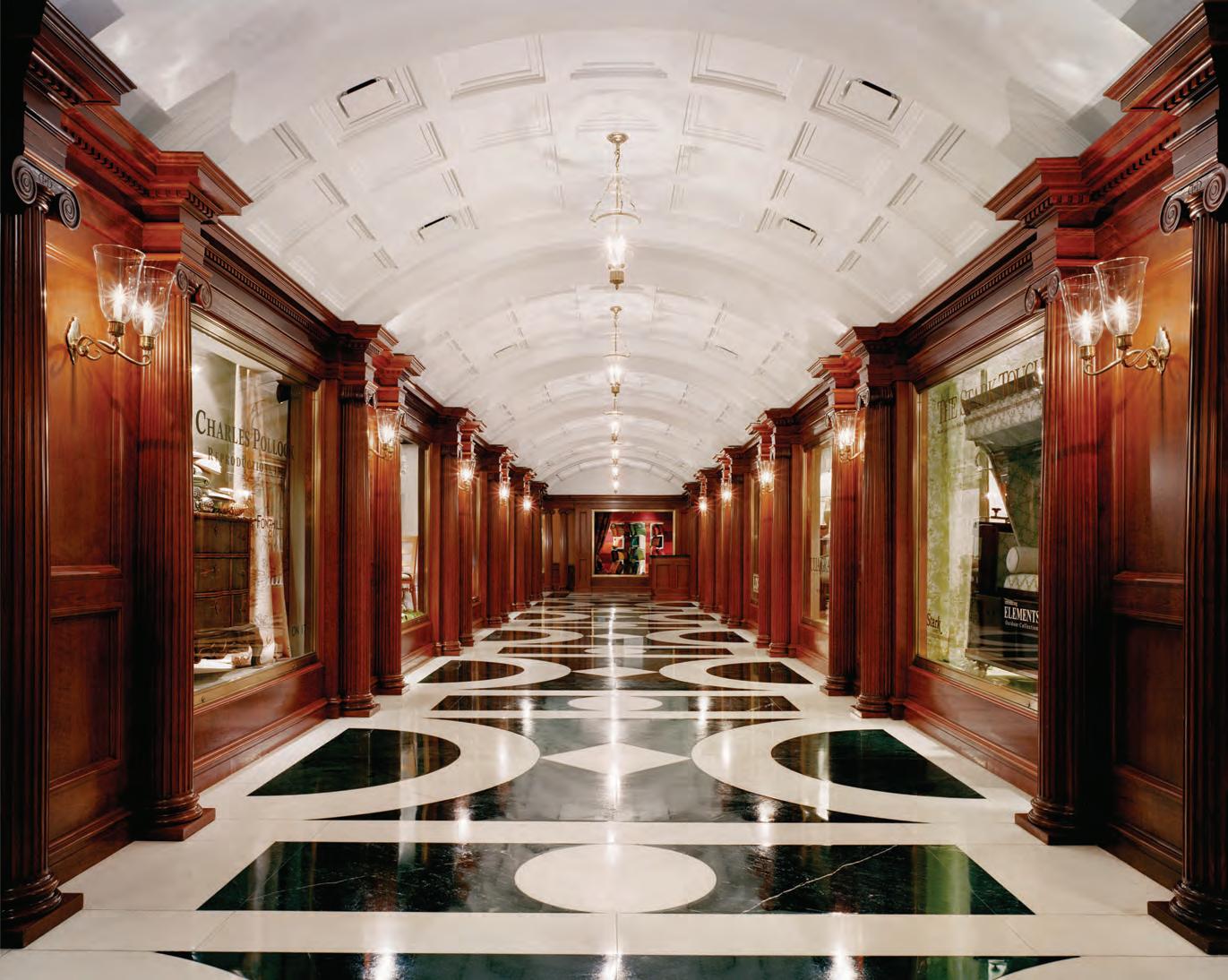
18 AVENUE MAGAZINE | SEPTEMBER—OCTOBER 2022 VERNISSAGE
FoundationsStrong
For more than 50 years, the D&D Building has been a one-stop shop for interior designers. Here, a brief history of how the storied design center came to be.
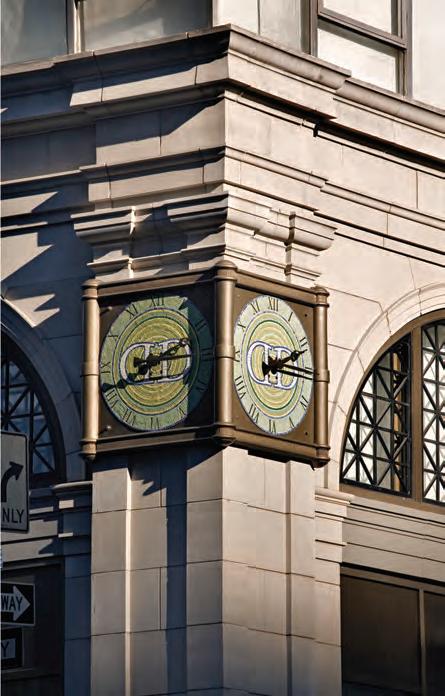
New York’s interior design scene is as vast and varied as the city itself. The array of talent, as well as the breadth of vendors in Manhattan alone, is as impressive as it is in timidating. But for many, finding creative resources is efficient, a breeze. They simply head to the Design & DecorationSituatedBuilding.at979
Third Avenue, the D&D Building has been a hub for interior designers working on both private and commercial proj ects for more than 50 years. With over 100 show rooms spanning furniture, lighting, wallpaper, and more, the space has everything one needs to complete a design project under one roof. Given the prevalence of design centers today, it doesn’t seem out of place for New York to have such a collection of showrooms. But the story of the D&D is one of pure chance.
In the mid-1960s, a developer named Aaron Diamond singled out the location between 58th and 59th Streets as a prime location for a new apartment building. Unfortunately, his timing could not have been worse. No sooner had he razed the tenement buildings that formerly occupied the block and began construction did the real estate world shift. The city was in disar ray, the housing market was in the gutter. This was not the time to launch a new living complex.
Fortunately his partner, Abner Rosen—whose father worked in the textile industry—came to the rescue with an ingenious plan: invite a variety of interior design labels to rent the spaces as showrooms for sample sales, thus giving them the previously unheld advantage of bringing customers together under one roof. The D&D officially opened in 1968, and it didn’t take long before the building was rented to nearly fullIncapacity.1996the building was purchased by Charles S. Cohen, who quickly updated its interior, and added amenities such as its signature restaurant, thus adding a social element to the D&D experi ence. In 2003, he expanded the building to include an annex, with its own entrance at 222 East 59thToday,Street.the building continues to be the heart of the New York design community. With a diverse selection of aesthetics, and a passion for supporting its showrooms, the D&D building remains unrivaled in scope.

SEPTEMBER—OCTOBER 2022 | AVENUE MAGAZINE 19
NYCBUILDINGDESIGN&DECORATIONCOURTESY
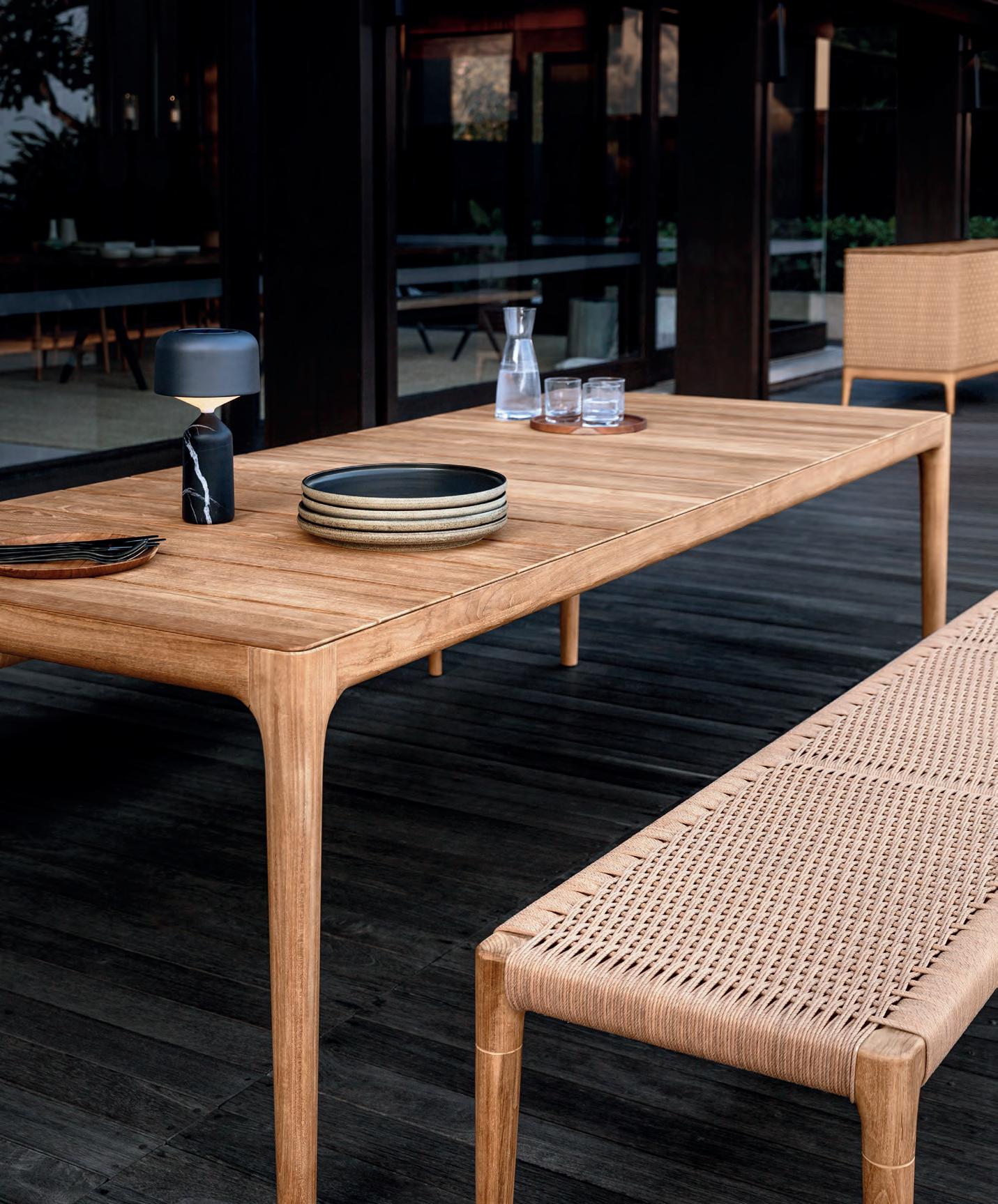

LIMA COLLECTION BY HENRIK PEDERSEN LOS ANGELES · CHICAGO · DANIA BEACH VIRGINIA · NEW YORK FLAGSHIP | D&D SPACE 1601 | 212-380-1493 WWW.GLOSTER.COM
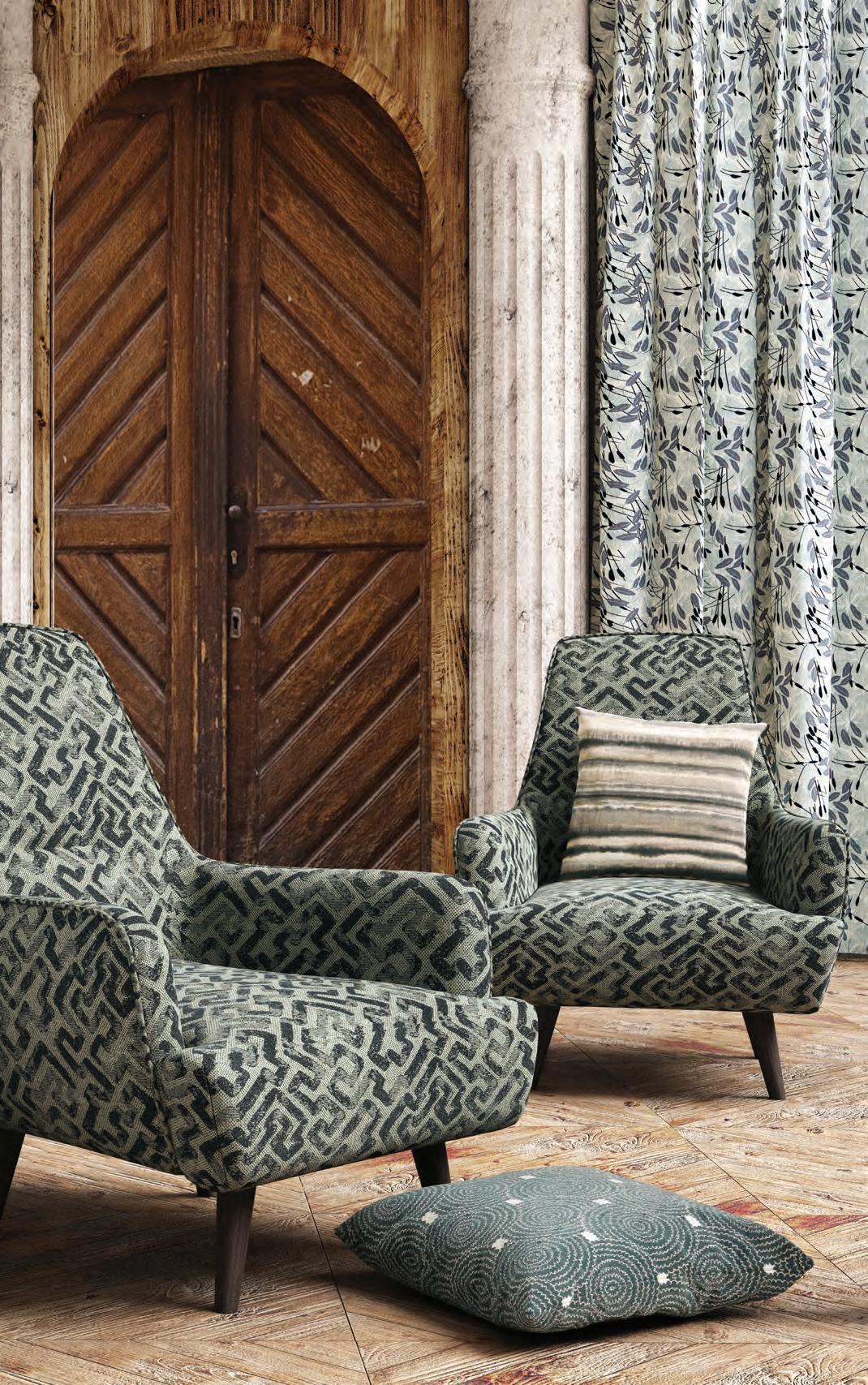
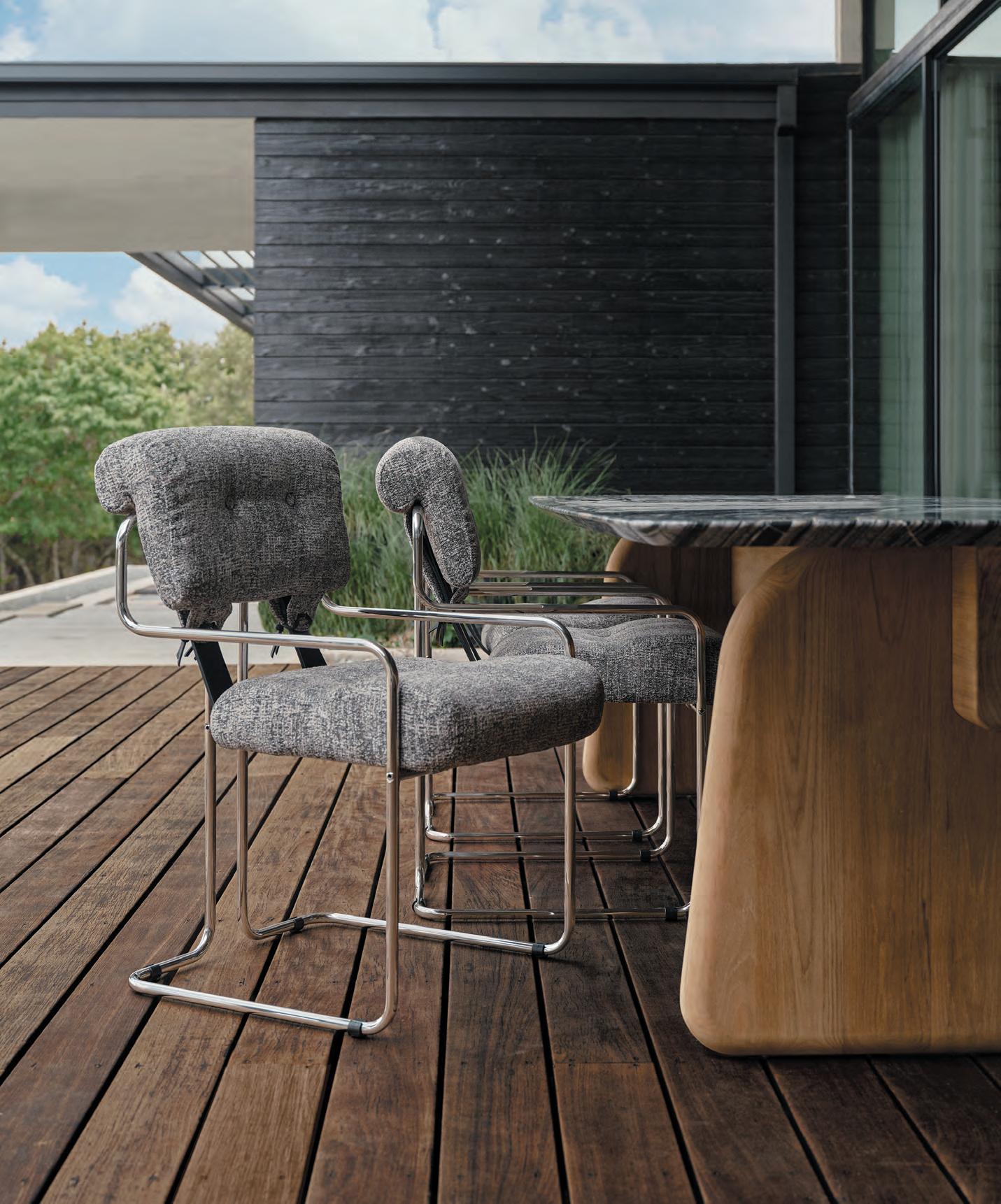 Introducing the Tucroma 316 Dining Chair I Upholstered in Perennials fabric at David Sutherland Showroom I Suite 401 I perennialsandsutherland.com
Introducing the Tucroma 316 Dining Chair I Upholstered in Perennials fabric at David Sutherland Showroom I Suite 401 I perennialsandsutherland.com
Available
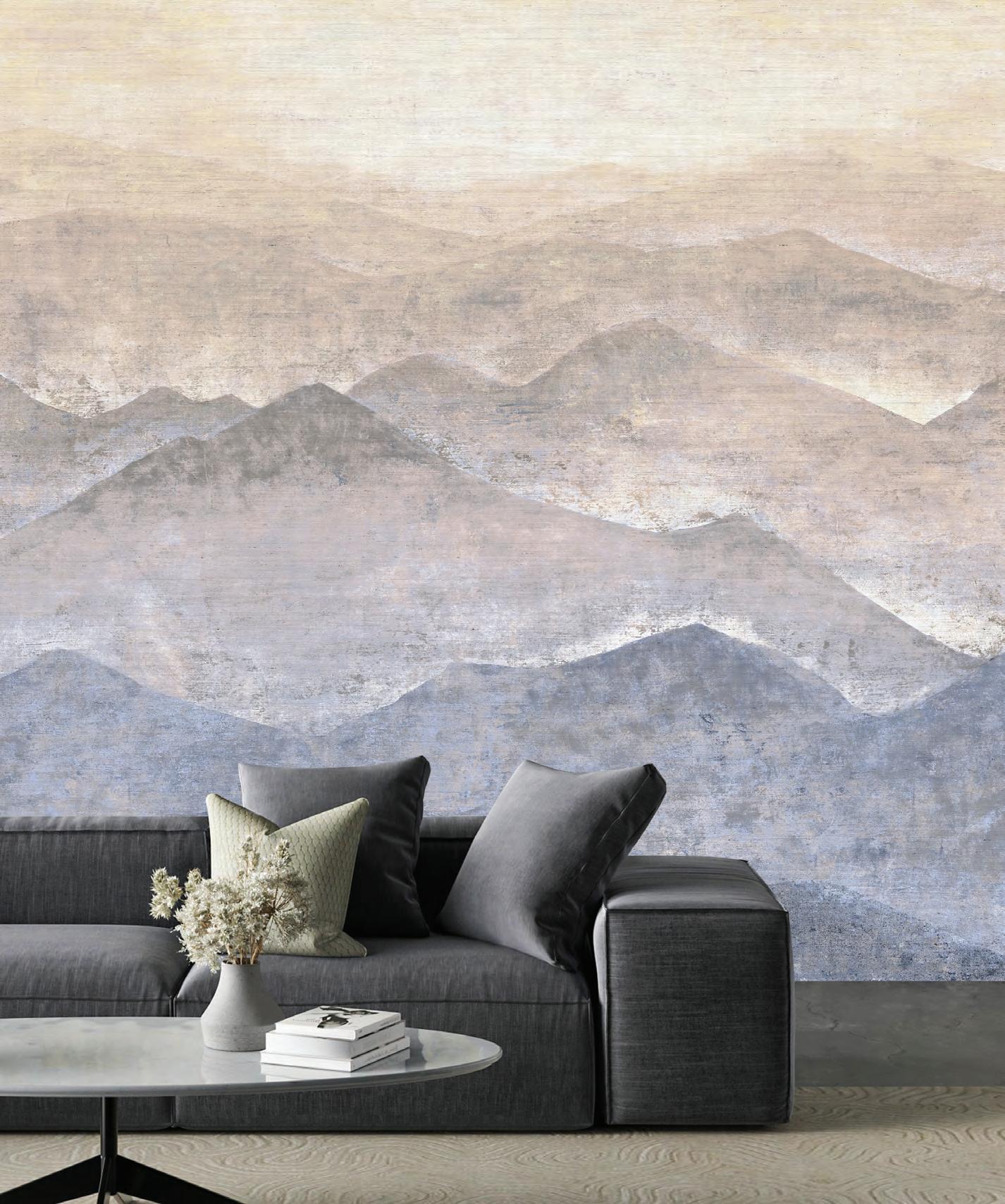


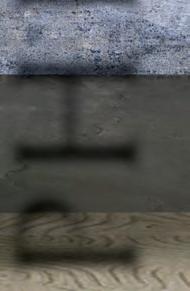


DAYBREAKDigitalMuralWallcoveringPHILLIPJEFFRIESNEWYORKDECORATION&DESIGNBUILDING • SUITE 1115 PHILLIPJEFFRIES.COM
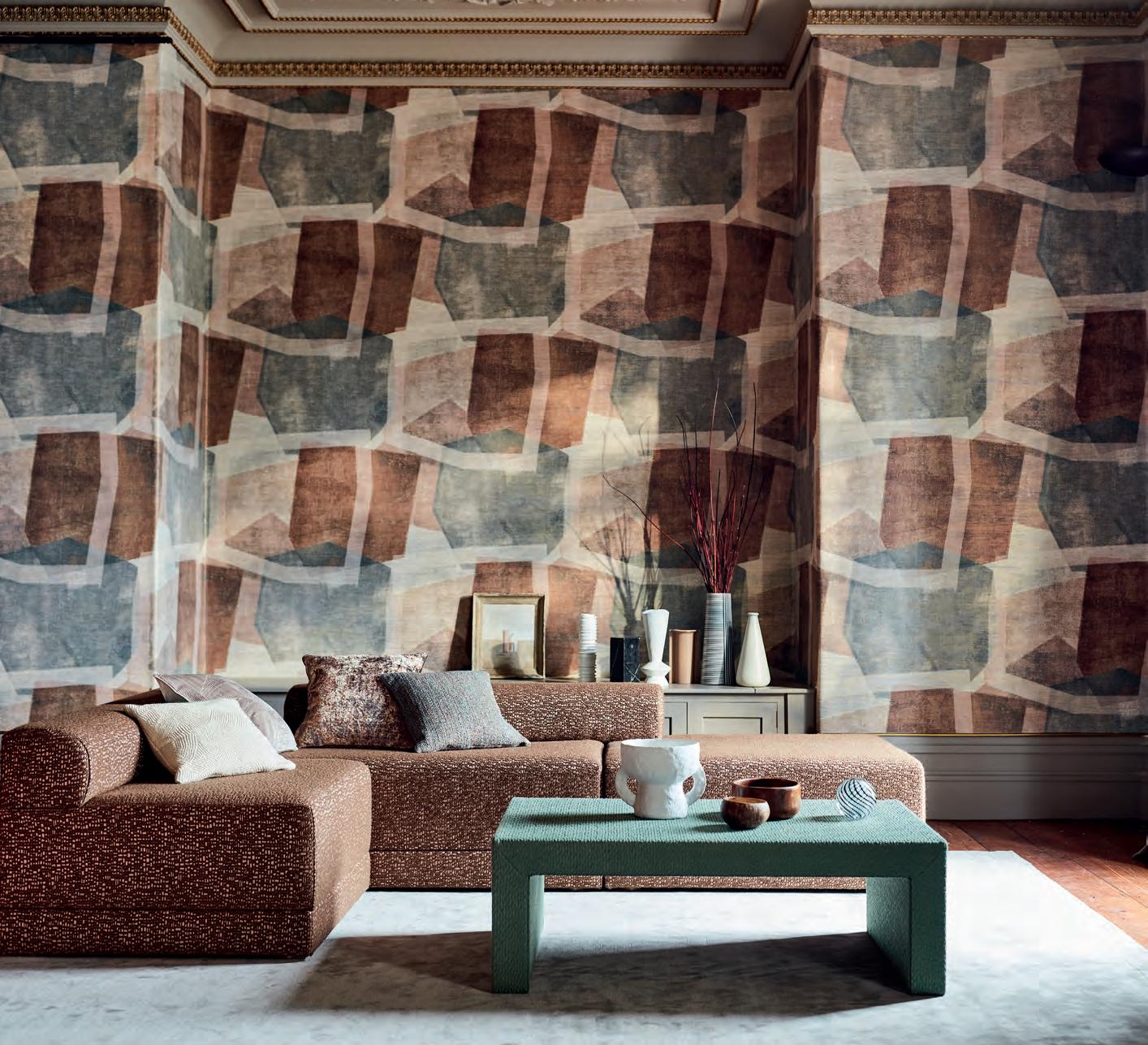
979 THIRD AVENUE, SUITE 808, NEW YORK, NY 10022 • (212) 319-7666 • BLACKEDITION.COM • @BLACKEDITION_BYROMO















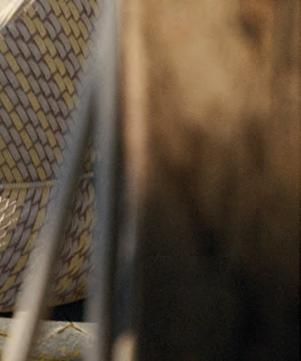
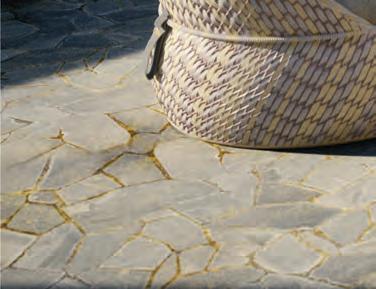
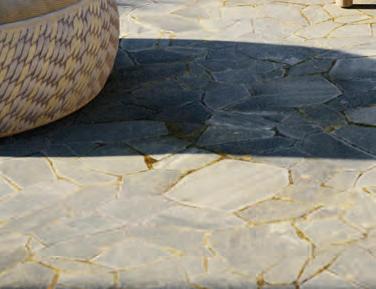
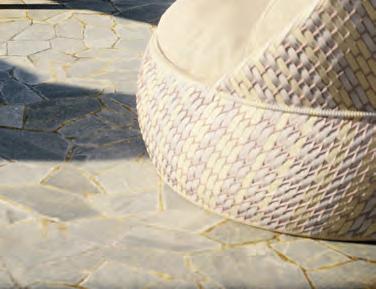
www.dedon.us DEDON Showroom D & D Building 979 3rd Avenue Suite 720 New York, NY 10022, 212-334-3345 newyork@dedon.us Available at:
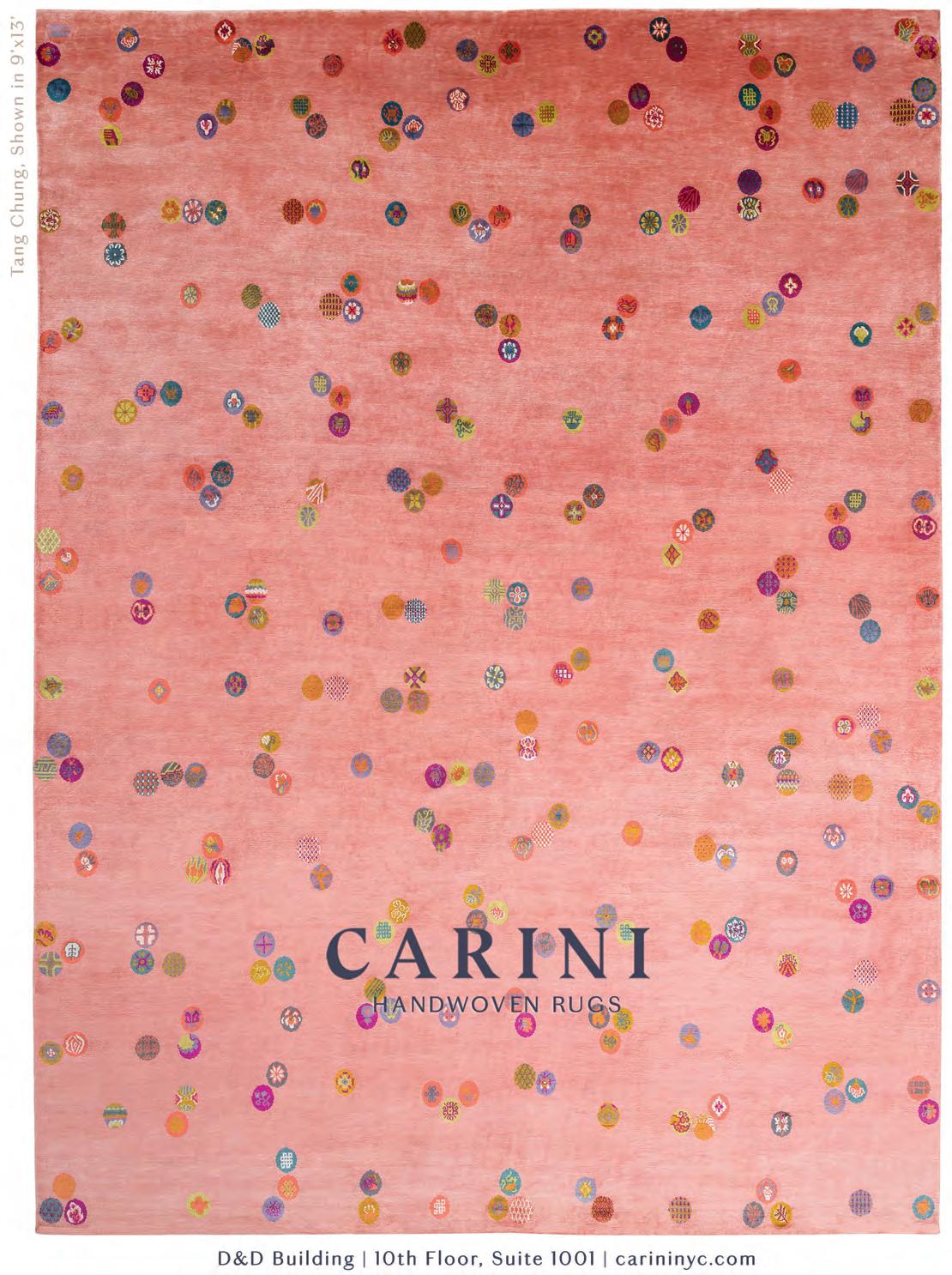
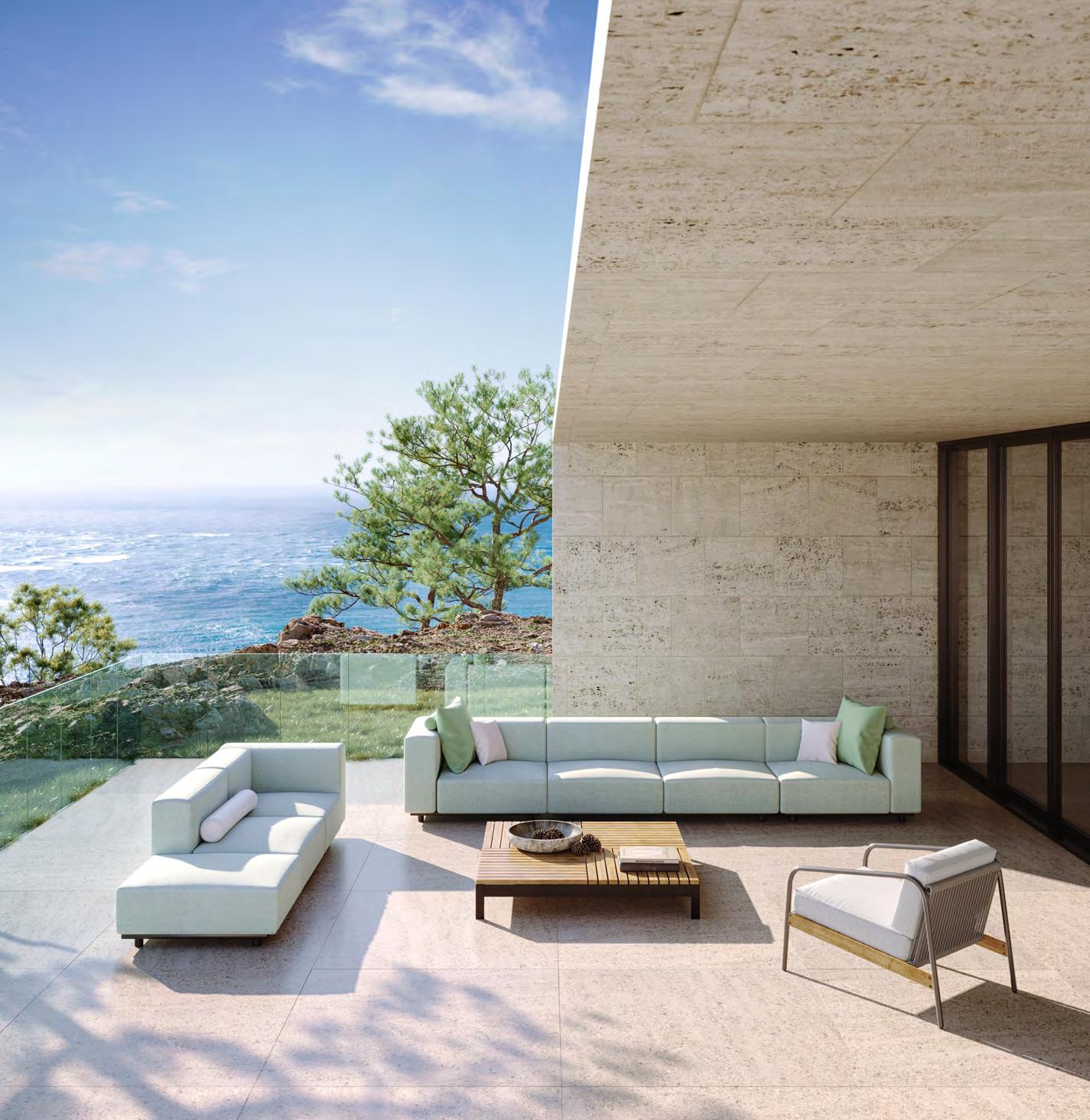
walterswicker.com/cape | info@walterswicker.com Cape Collection.
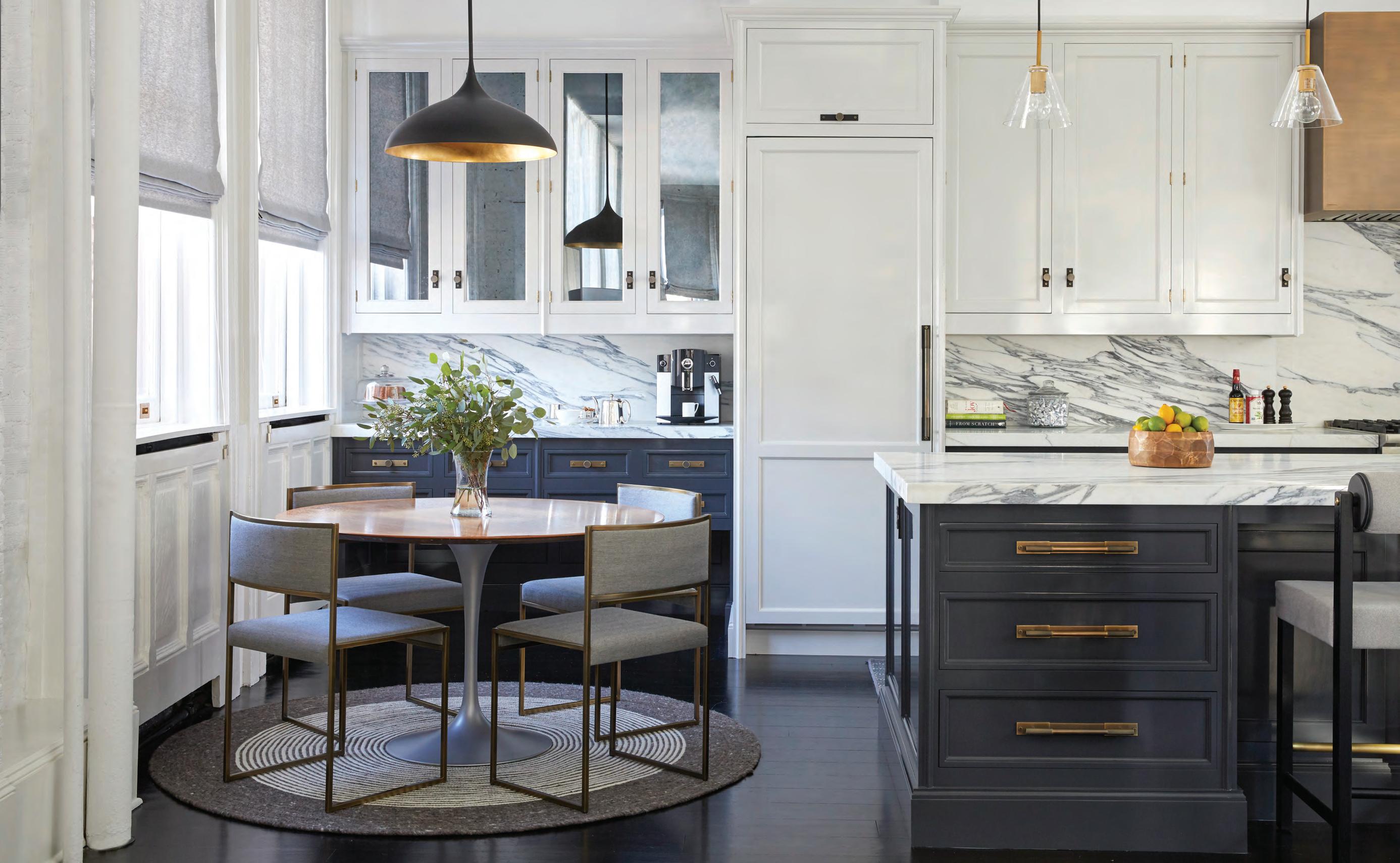

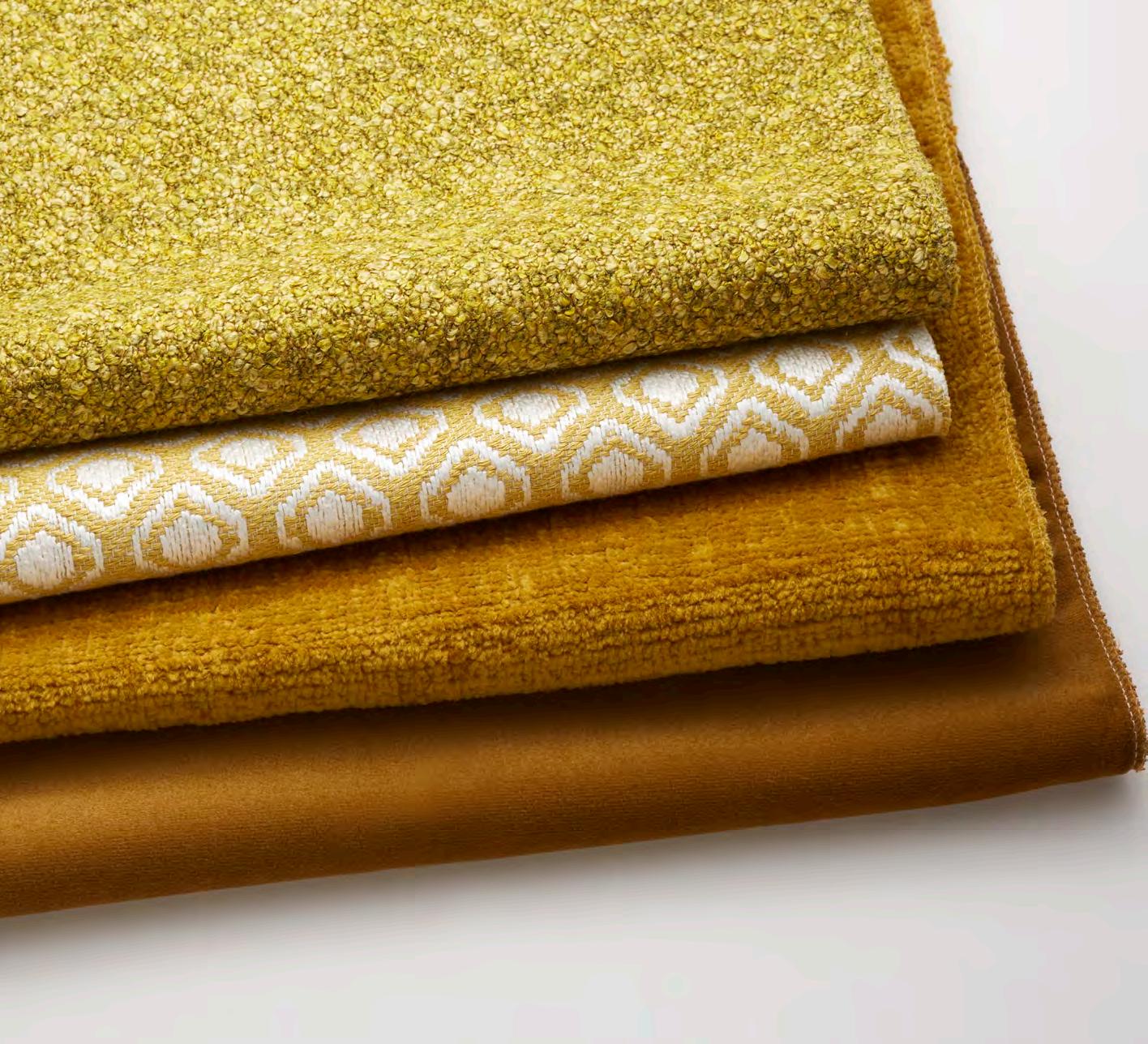 Photo by: Erin Derby
Photo by: Erin Derby
979 THIRD AVENUE, SUITE 1819, NEW YORK, NY 10022 • (212) 473-2669 • SAVELINC.COM • @SAVELFABRICS
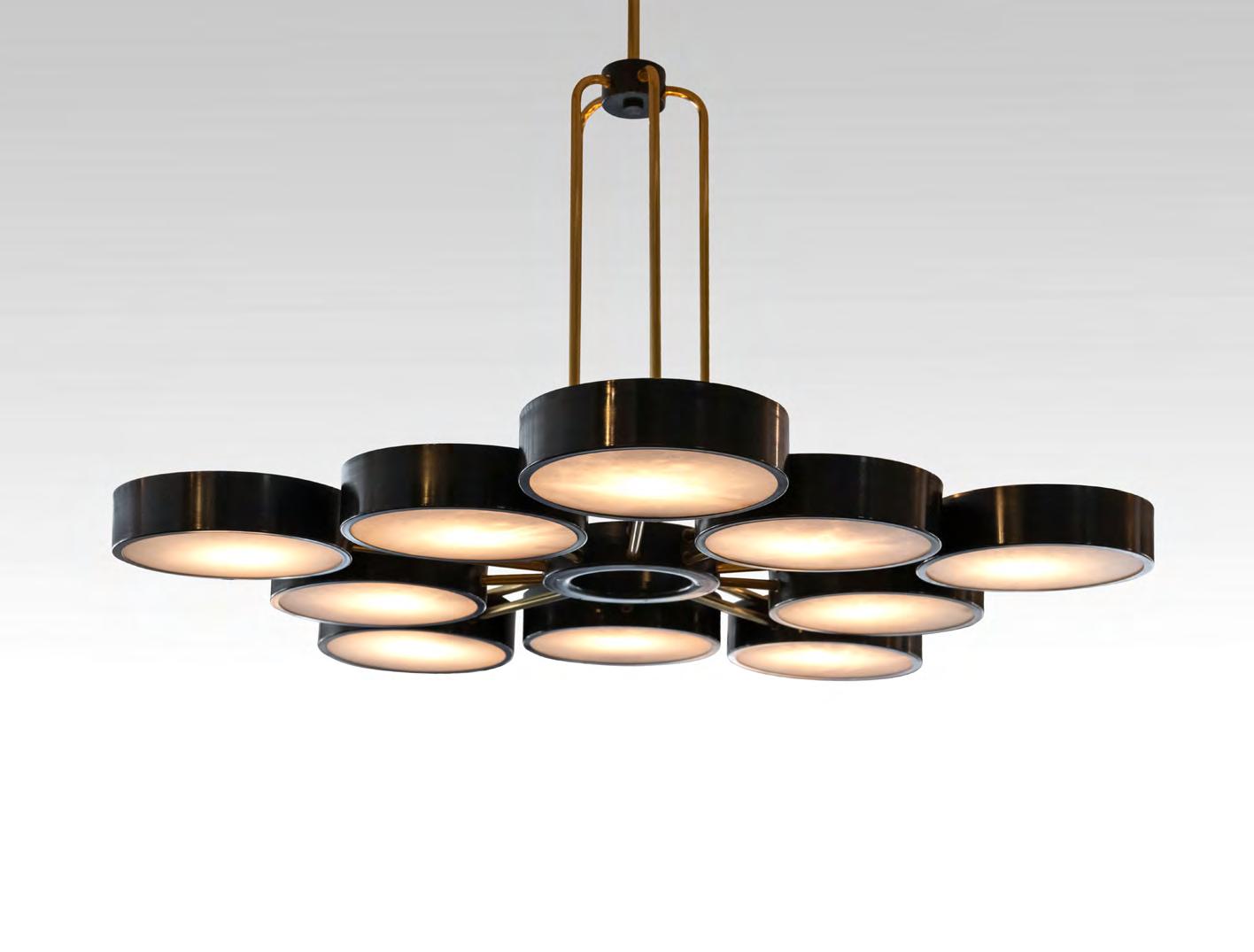
979 THIRD AVENUE, SUITE 1510, NEW YORK, NY 10022 • (212) 644-3535 • STUDIOVANDENAKKER.COM • @STUDIOVANDENAKKER


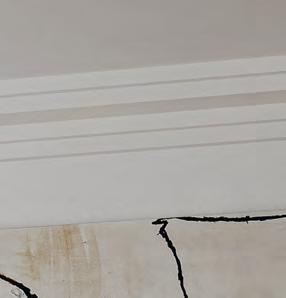
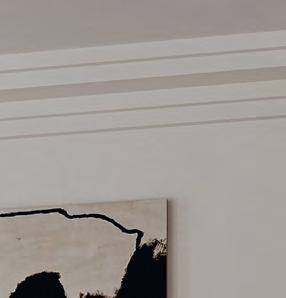
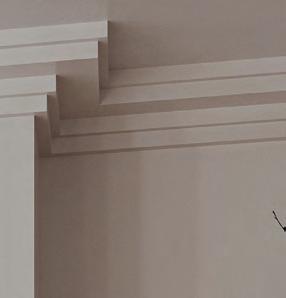


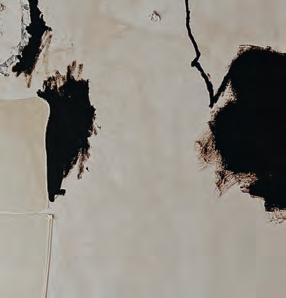
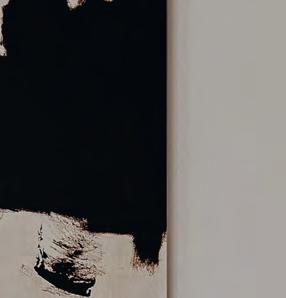

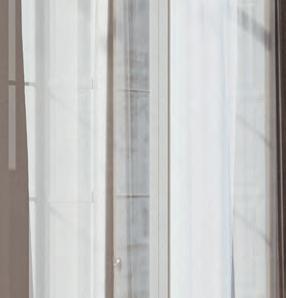
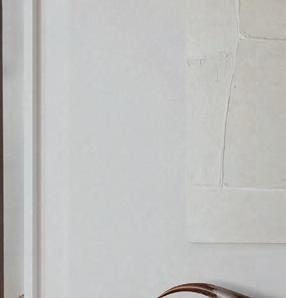


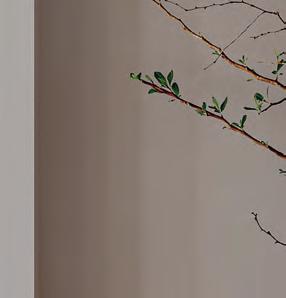

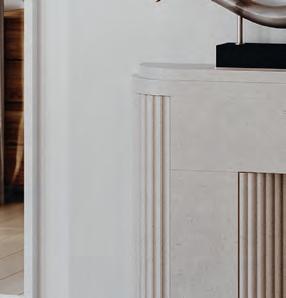



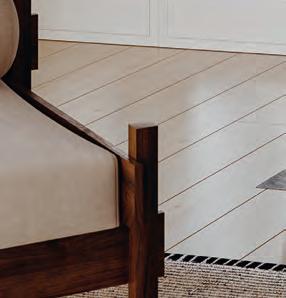

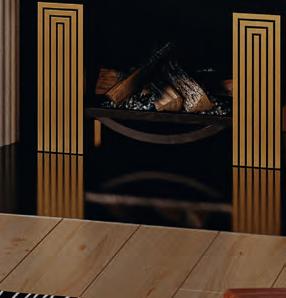
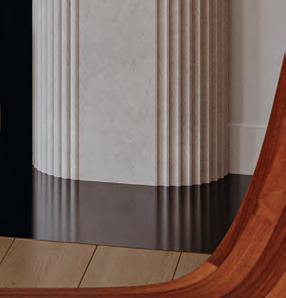

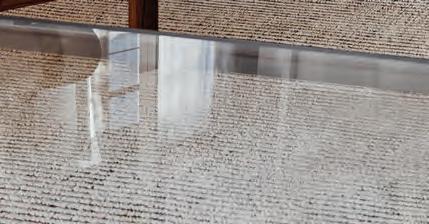

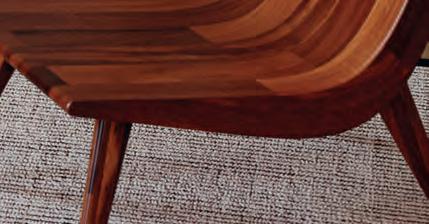

 Rick Lewis, Carousel II, 2021
London • New York
Rick Lewis, Carousel II, 2021
London • New York
CHESNEYS

the factory collection by Ramón Esteve
VONDOM.COM
AN UNCOMPROMISING COMMITMENT TO THE CRAFT
We’re committed to the highest standards, both in the way we make our leather products and in the way we deliver on your unique needs.
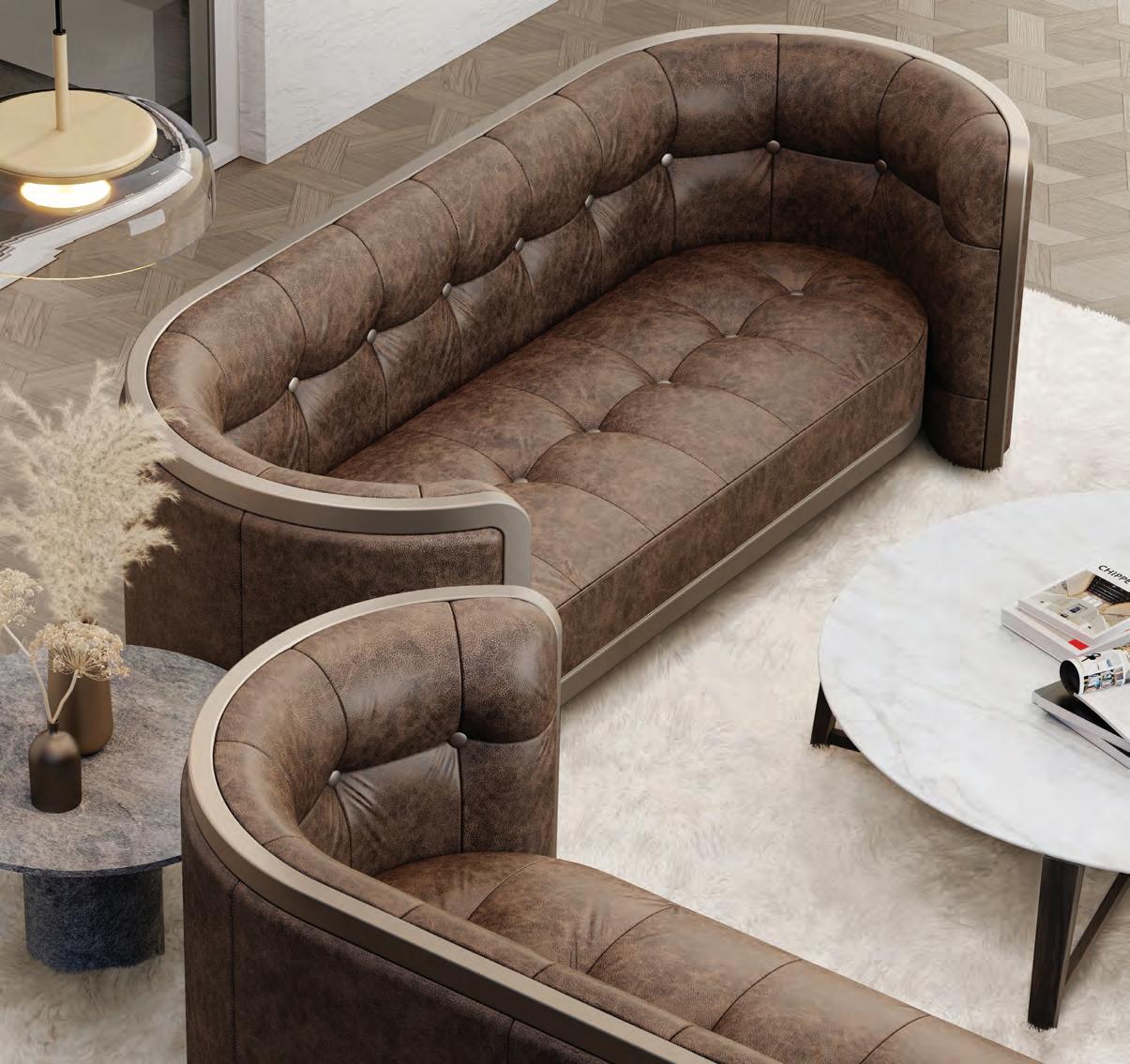
garrettleather.com l suite 1107
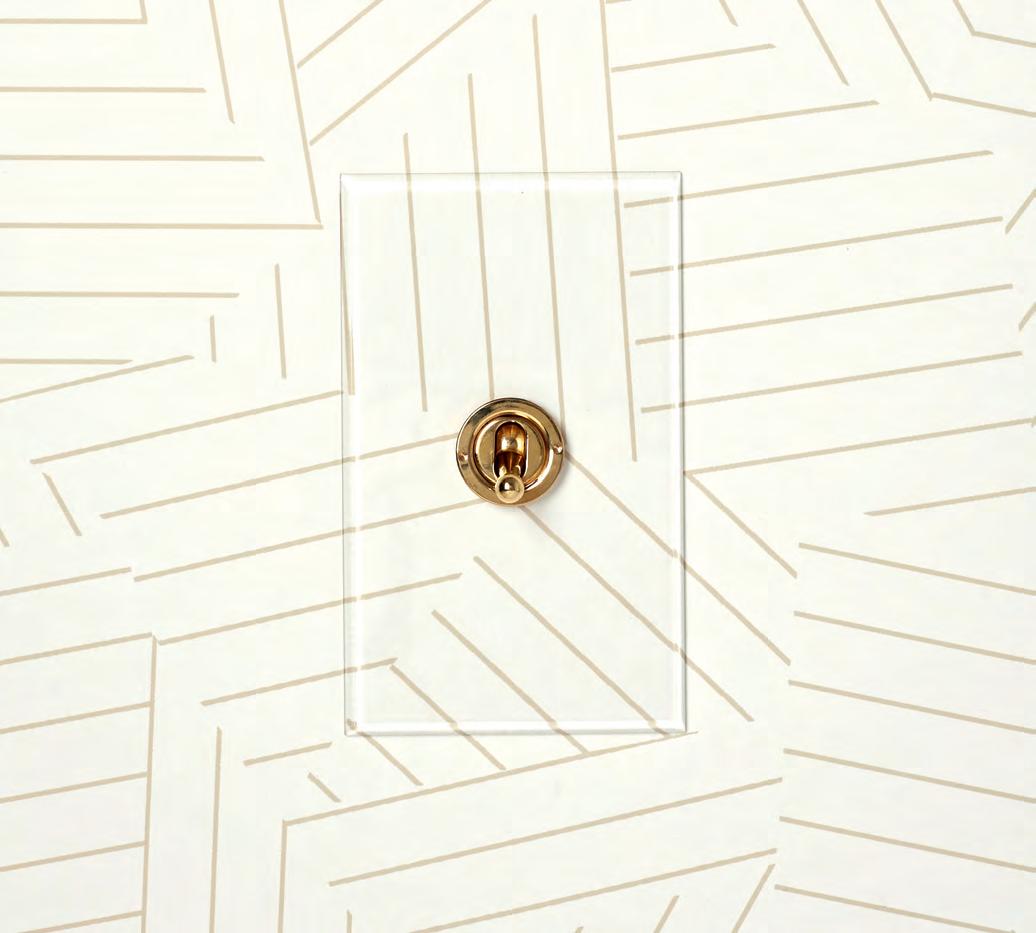
THE INVISIBLE LIGHTSWITCH ® Specialists in decorative light switches and outlets since 1988 www.forbesandlomax.com
BuildingD&DDirectory
BENJAMIN MOORE B421enjaminmoore.com
BESPOKE BY LUIGI GENTILE B1205espokebylg.com
BRUNSCHWIG & FILS K234ravet.com/brunschwig-fils
CARINI CARPET J1001osephcarinicarpets.com
CASTEL C715astelmaison.com
CHARLES H. BECKLEY C1521hbeckley.com
CHESNEYS C1119hesneys.com
CHRISTOPHER HYLAND C1710hristopherhyland.com
CHRISTOPHER PEACOCK Annex 5th FL Peacockhome.com
CLAREMONT FURNISHING FABRICS CO. C1405laremontfurnishing.com
CLARENCE HOUSE C205larencehouse.com
EDELMAN LEATHER E207delmanleather.com
ÉLITIS E611litis.fr
FABRICUT / S. HARRIS F915abricut.com
FARROW & BALL F1519arrow-ball.com
FORBES & LOMAX F1502orbesandlomax.com
FORTUNY F1632ortuny.com
GARRETT LEATHER G1107arrettleather.com
GLOSTER FURNITURE G1601loster.com
GRACIE G1411raciestudio.com
HOLLAND & SHERRY I1402nteriors.hollandandsherry.com
HOLLY HUNT NEW YORK 503 & 605 Hollyhunt.com
KETTAL 333/Annex 222 Kettal.com
KINGSHAVEN K402ingshaven.com KNOLL K1523noll.com
KNOLL LUXE K1702noll.com/shop-textiles
KOROSEAL K842oroseal.com
KRAVET K1202ravet.com
LEE JOFA K234ravet.com/lee-jofa LLADRÓ L1805ladro.com
LORO PIANA L820oropiana.com/interiors/ LUTRON L319utron.com
M. ALEXANDER M313alexanderlighting.com
NELLA VETRINA N805ellavetrina.com
NOBILIS N508obilis.fr O’LAMPIA O300lampia.com
OCHRE O1109chre.net
OSBORNE & LITTLE O520sborneandlittle.com
PATTERSON FLYNN P632attersonflynn.com
PAUL FERRANTE P717aulferrante.com
PHILLIP JEFFRIES P1115hillipjeffries.com
PID FLOORS P323idfloors.com
PIERRE FREY P1611ierrefrey.com
QUADRILLE | OOMPH Q1415uadrillefabrics.com
SCALAMANDRÉ S1002calamandre.com
SCHUMACHER F832schumacher.com
SCOTT GROUP STUDIO S411cottgroupstudio.com
SHELLY TILE I819nstagram.com/shellytilenyc STARK S1102tarkcarpet.com
STUDIO VAN DEN AKKER S1510tudiovandenakker.com
STUDIO WALLCOVERINGSZEN
S1818tudiozenwallcoverings.com
THG PARIS T1206hg-paris.com
THIBAUT T909hibautdesign.com
VAUGHAN V1511aughandesigns.com
A. RUDIN
A1201rudin.com
ANCIENT & MODERN
A1522ncientandmodern.us
ARMANI / CASA
A1424rmani.com
ARNITEX
A1207rnitex.com
ARTESANO IRON WORKS
A1200rtesanoironworks.com
ASSOULINE BOOKS AND GIFTS
A101ssouline.com
ATELIER PREMIERE
A1600telier-premiere.com
BAUMANN DEKOR
B518aumanndekorusa.com
COWTAN & TOUT C1022owtan.com
DAKOTA JACKSON D501akotajackson.com
DANI LEATHER G214ruppodani.com
DAVID INTERIORSMICHAEL D1700avidmichaelinteriors.com
DAVID SUTHERLAND P401erennialsandsutherland.com
DE LE CUONA D914elecuona.com
DEDAR MILANO D1009edar.com
DEDON D720edon.de
HOULÈS H919oules.com
I.J. PEISER’S SONS FINE
WOOD FLOORS
Concourse 1 Ijpeiser.com
INNOVATIONS I1717nnovationsusa.com
JAB ANSTOETZ
J102ab.de
JEAN DE MERRY J815eandemerry.com
JIM THOMPSON J1640imthompsonfabrics.com
JOHN BOONE, INC. J711ohnbooneinc.com
JOHN ROSSELLI & ASSOCIATES J1800ohnrosselli.com
MADE GOODS M325adegoods.com
MAHARAM M1701aharam.com
MARC DECORATIVEPHILLIPSRUGS
M211arcphillipsrugs.com
MARTIN PATRICK EVAN M507artinpatrickevan.com
MAYA ROMANOFF M922ayaromanoff.com
MCKINNON & HARRIS Annex 111 Mckinnonharris.com
MICHAEL DAWKINS HOME M707ichaeldawkins.com
MICHAEL TAYLOR M1640ichaeltaylordesigns.com
RESSOURCE HOUSE OF PAINTS
R1507essource-peintures.com
ROGERS & GOFFIGON LTD. R1718ogersandgoffigon.com
ROMO R808omo.com
ROSE TARLOW MELROSE HOUSE R1616osetarlow.com
RUG ART INTERNATIONAL R1518ugart.nyc
SAINT-LOUIS S816aint-louis.com
SAMPSON MILLS LTD. S1540ampsonmills.com
SAVEL S1819avelinc.com
VONDOM V1532ondom.com
WALTERS W538altersnyc.com
WARP & WEFT W1203arpandweft.com
WINDOW TECH, INC. 500
WIRED CUSTOM LIGHTING W105ired-designs.com
WOLF-GORDON W413olfgordon.com
WORLDS AWAY W414orlds-away.com
ZIMMER + ROHDE
Z813immer-rohde.com/en
ZOFFANY S409andersondesigngroup.com
36 AVENUE MAGAZINE | SEPTEMBER—OCTOBER 2022 VERNISSAGE

A Blasta from the Pasta
For outstanding Italian, look no further than New York City. Joshua David Stein finds his gnocchi perfetti, his mafaldine squisete, and everything else molto yummy
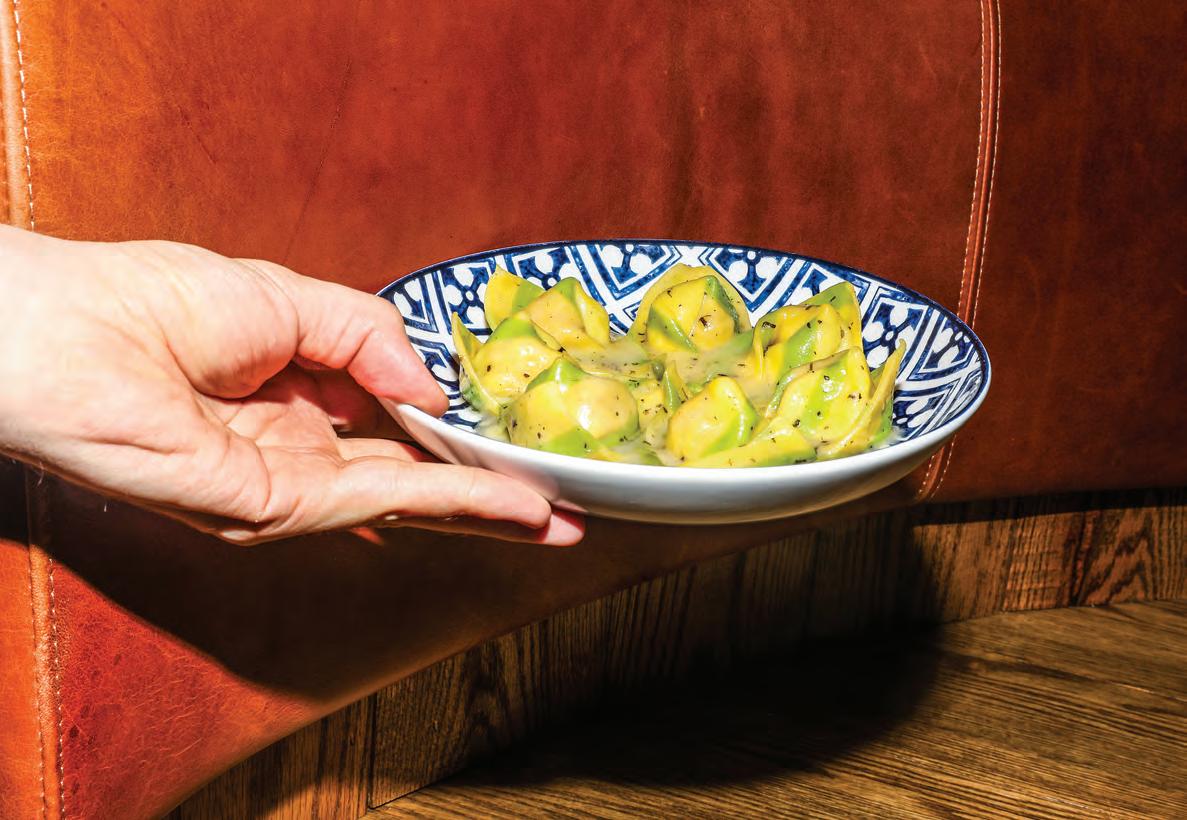
Could it be that New York City, almost 4,286 miles west of Rome and 4,402 from Naples, has the highest concentration of truly extraordinary pasta in the world? At first blush, pish-posh. We are a city of ba gels and pizza by the slice, taco trucks and the avant-garde. Upon reflection—and a visit to three outstanding Italian restaurants where pasta plays a starring role—forse.
What do we have here? An insatiable appetite.
PASTA, PRESENT, AND FUTURE Above: Doppio tortelli, two-toned pasta stuffed with prosciutto and parmigiano fonduta, served at Rezdôra. Facing page, from top: the Al Coro dining room and antipasti served at the place.
An unsaturatable market. A mania for restaurants. A more particular mania for regional restaurants. A real hard-on for obscurity. Deep pockets and empty bellies. There are eight million stories in the naked city, and most of them have a break for pasta in them. So to New York flock Italian chefs bringing with them the shapes of the prov inces. And in New York flourish chefs who, like Joseph Conrad did to English, have become mas ters from the outside with the zeal of a convert. And we, the pasta-huffing chubbies, rejoice with mafaldine, fideo, cavatappi, and anelli.
38 AVENUE MAGAZINE | SEPTEMBER—OCTOBER 2022 SCHLUETERKRISTA VERNISSAGE
Al Coro has been a long time coming, rising from the ashes of what was Del Posto before that august Italian restaurant burned in the immolation of Mario Batali’s #MeToo scandal. In some sort of divine justice, the chef Melissa Rodriguez had worked under Batali as the chef at Del Posto from 2017 to its closure in 2021, but now the whole shebang is hers. (Rodriguez, with her business partner Jeff Katz, also run Mel’s, a casual pizzeria in the adjoining space.) Al Coro is big and I’d call it brassy, but the space is a sym phony of muted colors. The first thing you notice when you walk in is a music loft where, on the night I had dinner, a jazz quartet was covering “Angel from Montgomery” by John Prine. It was, well, angelic. Spiritually, at least, Al Coro is brassy. It’s celebration food, unapologetically elevat ed, wearing its tablecloths not in the traditional white but in the somehow even more daring dark brown. The better, I suppose, for the plates to pop off from.Popoff they do. There’s no choice in the mat ter. Al Coro, like Del Posto before it, offers only tasting menus. Five courses for $195; seven for $245. The seven-course dinner starts with an en masse arrival of fantastical aperitivi. Each uses an Italian classic much as Kanye West does an Otis Redding song. Rodriguez finds the hook and

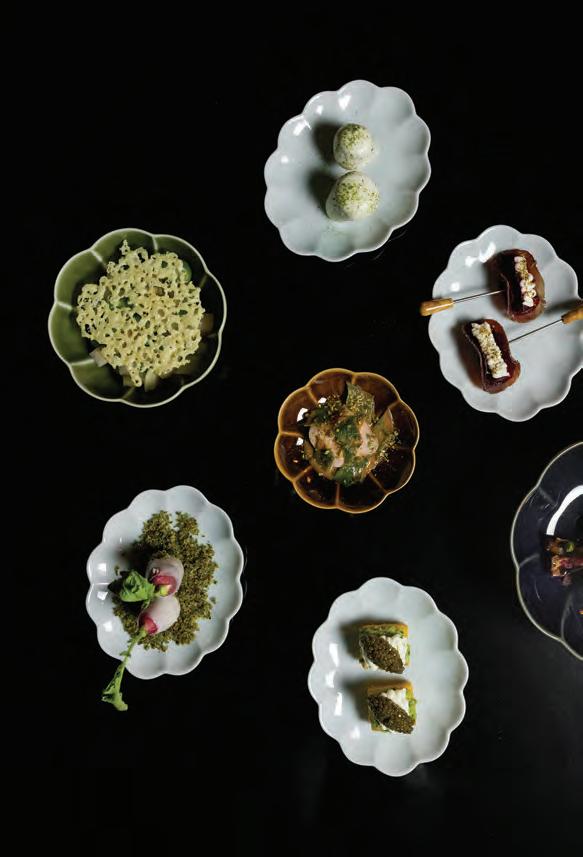
builds her own hit around it. A pair of radishes arrive, tops bright green and perky, round red bottoms dipped into buffalo butter flecked with anchovy and nori. There is no better combination of flavors than radishes, butter, and anchovies on the planet. Panelle, a chickpea fritter from the Sicilian streets, is topped with a quenelle of cavi ar and ceci gremolata. (Two chickpeas; one app.) Thinly sliced beets are wrapped around bresaola like miniature tacos, with mascarpone playing cotija and fennel pollen just doing itself.
But I was here for the primi. There are many different types of Italian and Italianate restau rants. Not all of them need to have a primi course, of course. But when pasta is on the menu, it will be the measure by which that restaurant is men tioned. Fair or not fair, it’s the truth. Some writers can allow tension to build. They are masters of the slow unveiling of information until the read er, well tantalized, is practically slobbering over him or herself awaiting the final reveal. Me? I’m too impatient for that. All I’ll say about the primi piatti at Al Coro is that there are many terrible things happening in the world. But that there is one man—his name is Carlos Perdomo—in the kitchen of a restaurant on the West Side of Manhattan who is painstakingly plaiting and then forming pasta dough into rings called anelletti that warms my heart immensely. Because these annelletti—usually such a humble shape—are small works of art, dripping with pork cheek ragù, and promise. They are glistening proposals for us to enjoy our senses. The meal progressed. More obscure pastas appeared, including a dumpling from Ogliastro in Sardinia called culurgiònes, as close to a classy cheese pierogi as I’ve ever seen come from an Italian kitchen. This one was shim mering with caviar butter sauce and razor clams. There was more too, but my mind and heart was wedded to those anelletti, for I was betrothed to not just what they were but what they stood for.
When pasta is on the menu, it will be the measure by which that restaurant is mentioned.
SEPTEMBER—OCTOBER 2022 | AVENUE MAGAZINE 39
COROALGAUT/COURTESYADRIANROOM:DININGBLACK;NATALIEANTIPASTI:
In terms of absolute fidelity to the fine art of pasta, La Devozione is unrivaled.
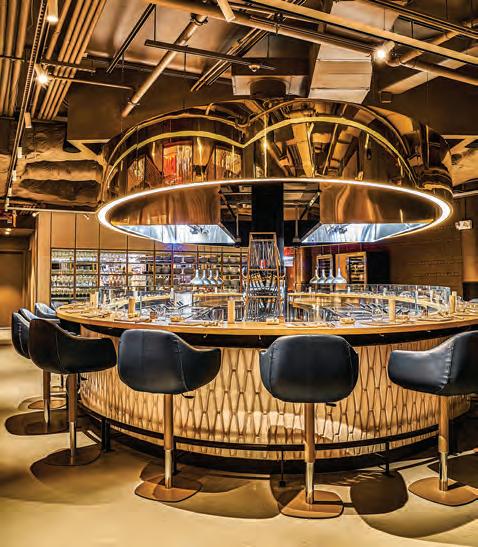

In terms of absolute fidelity to the fine art of pasta, La Devozione is unrivaled. Having suffered somewhat from being located within Chelsea Market, where it could easily be dismissed as a workaday lunch option, the restaurant, which opened in 2021, serves as a showcase for the Pastificio San Martino, a century-old pasta com pany based in Gragnano, a speck of a town on the Amalfi Coast near Naples. In the back of the restaurant, called A Tavola, is a 30-seat chef’s counter called The Oval. It is an oval, ovulously. Like Al Coro, The Oval offers a seven-course tast ing menu for $165. Every course, except the des sert, contains pasta. Mamma Mia, that’s a lotta pasta. Though conceived by Michelin-starred chef Peppe Guida, the chef manning the pots and pans—750 pans to be exact—is a young tattooed Campanian named Alessio Rossetti. On the night I visited The Oval, there were but two other souls at the tasting counter and only a handful of others at the more casual A Tavola. Such are the perils of a nighttime restaurant in a daytime market.
But the pans were gleaming and the pots already boiling. The question has been asked: why submit oneself to seven courses of pasta? It seems like a stunt at best and a gut bomb di saster at worst. In portions, at least, The Oval is restrained. One eats about 150 grams of pasta, which means each course is just a few bites. In terms, however, of audacity, this is pasta at its mostPastafar-out.has
always been a vehicle for sauce. At The Oval, the symbiotic relationship between pasta and its payload is inverted, explored, détourned, and exploited. Four big ol’ paccheri, cooked in fish broth and water, form pontoons on top of which silky slices of smoked sword fish carpaccio are placed along with fennel pol len, fennel, and Calabrian chili. In a later course, spirals of eliche giganti are placed in a wineglass and swirl table side with beetroot cream and goat cheese until the two commingle. In Marco Polo, a dish inspired by that Italian’s travels, linguine is cooked in oolong tea, topped with garlic foam, and finished with ossetra caviar.
I must admit that, to me, often the inventive ness outstripped the flavor. This is an advanced pasta play from restless minds, and perhaps it flew over my head. The best single bite of the meal was a simple elegant bite of spaghetti, pretwirled on a golden fork, cloaked in sweet tomato sauce made from Lampadina tomatoes and fin ished with a single leaf of basil. It is called simply: “La Devozione.” Vibrant, masterful, and surpris ing, precisely because it seems so staid, one could taste the durum of the spaghetti, the sweetness of the tomato, and, finally, the fruit of 110 years of pasta obsession.
SPAGHETTI JUNCTION
Right: The Oval, a 30-seat pasta bar at La Devozione. Below: the namesake signature dish at the restaurant.
40 AVENUE MAGAZINE | SEPTEMBER—OCTOBER 2022 VERNISSAGE DEVOZIONELAPAOLONI/COURTESYGIADA
As a 40-year-old man still trying to look good naked—for I have yet to come to terms with my own mortality and the fact that my body will soon enough sag and decay, and instead of trying to grasp on to youth and tautness, perhaps I should embrace vulnerability and impermanence, stop dating younger women, and find an actual life partner—I was ready to be over with my pasta walkabout. But there was one place that kept popping up when speaking with pasta people: Rezdôra.
Like La Devozione, Rezdôra offers an all-pasta tasting menu. Unlike La Devozione, Rezdôra has its own charming building on East 20th Street, a Michelin star, and a packed dining room. There are but five courses in the pasta tasting menu, which at $90 feels like a steal. (There is also an a la carte menu.) The Dallas-born chef, Stefano Secchi, is an Emilia-Romagna obsessive and has dived deep into that region’s pasta traditions. The tasting menu starts off with tortelli in brodo, the ur-Emilian celebratory dish. Here the tortelli
PASS THE PASTA, PER FAVORE Left: Anolini di Parma, meat-stuffed pasta in Parmesan cream served at Rezdôra. Below: the interior of Rezdôra.
are jewel-size, and stuffed with a mixture of ham, mortadella, veal, and Parmesan. The brodo (broth) is intensely flavorful chicken stock made of older chickens. See, age makes us tastier.

In fact, there might be no better place than Rezdôra to appreciate aging. There were at least three birthdays in the small restaurant the night I ate there. The depth of flavor imbued by time was evident everywhere. In the aged prosciutto di Parma that comes atop pillowy fried gnocco. In the aged balsamic vinegar that is drizzled atop the anolini di Parma, the final pasta. Those ar rive, looking like six little meat-stuffed parson’s hats, shimmering in Parmesan cream. Secchi, a tall and handsome man, arrives with a cruet of aged balsamic, which he ceremoniously presents above the pasta as a priest might a censer. The viscous liquid forms a dark sweet stream, cut ting through the air and then, the richness of the cheese and pasta. And then the dish is ready, the work has been done, and there is nothing left to do but to enjoy.
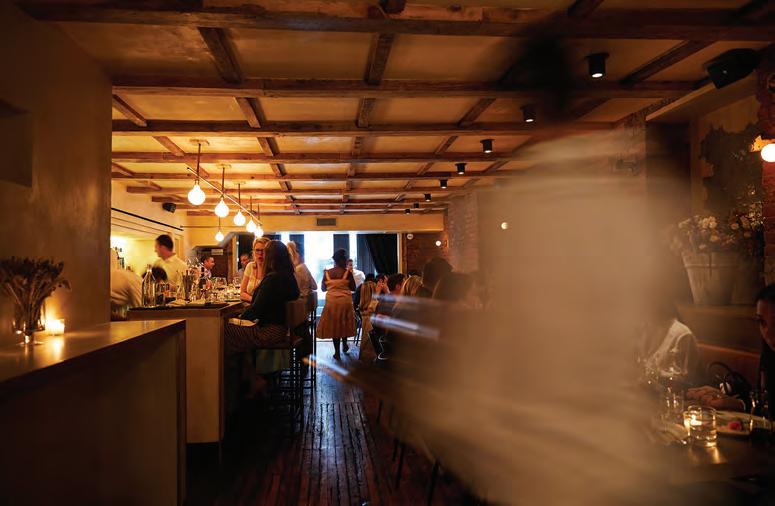
SEPTEMBER—OCTOBER 2022 | AVENUE MAGAZINE 41
REZDÔRACLARK/COURTESYCOLIN


The debonair Douglas Friedman, interiors photographer to the stars, talks to Peter Davis about his fall show in New York Flashman OF THE
Easily recognizable—with heavily tattooed arms and his signature ’70s mustache—Douglas Friedman has quickly become the It Boy of the design world. An Instagram star with a fanatical A-list following of people such as his close pal Martha Stewart, the interiors and architecture photogra pher has become famous in his own right, fitting right in with the celebrities he shoots at home for magazines such as Architectural Digest and Elle Decor. Oozing style and boyish charm, Friedman is also a social force, gliding between Hollywood movie premieres and society soirees on the Upper East Side, his high-profile friendships making him an easy choice for bold-faced names to open their doors and let him shoot their homes, among them Cher, Ashton Kutcher and Mila Kunis, Naomi Watts, and Justin Theroux. “I’ve known Douglas for well over a decade,” says interior designer Ken Fulk. “He’s fiercely funny, with a childlike sense of wonder about the world. It’s quite contagious when you’re in his presence. He’s an immense talent and a trueButartist.”successful interiors shoots aren’t all about a charming photographer and perfect lighting. “There is a lot to navigate in a home shoot,” Friedman explains, who splits his time between New York, LA, Brookhaven, where he owns a home, and his main residence in Marfa, Texas. “The most challenging is not freaking out the

SEPTEMBER—OCTOBER 2022 | AVENUE MAGAZINE 43
FRIEDMANDOUGLAS©PHOTOGRAPHSALL SELF-PORTRAIT
ARTIST AS A YOUNG MAN Left: fromdream-likeAboveFriedman’sDouglasself-portrait.right:anuntitled,interiorsshotthe HyperOpia series. thethroughoutPhotographsarealsofrom HyperOpia series.
homeowner when they see the amount of fur niture that gets moved around.” So how does Friedman get his subjects to relax as their house is turned upside down? “I get them really drunk,” he cracks, adding: “That’s my secret sauce.”

When not capturing Kylie Jenner in her candy-colored Hidden Hills home for the cover of AD or posting to his Instagram account images of juicy steak dinners or ominous Marfa landscapes, Friedman is committed to exploring more person al, less commercial work. His latest and most cre ative project is HyperOpia, a limited edition pho tography series of 15 pieces that is decidedly not editorial. HyperOpia—which is a medical term for farsightedness—came to be when Friedman’s pal, the Los Angeles–based designer Ben Soleimani, asked him if he would mount a show for his new, massive flagship showroom on Madison Avenue. One catch: Friedman had to create the new body of work in under two months. “I had no idea what it was going to be,” he recalls. “I just knew it had to be a show about how to see something familiar in a fresh way. I didn’t want to show beautiful in teriors or landscapes. That would be too obvious and, well, Friedmanboring.”began to experiment with the con cept of focus. When he shoots an interior for a magazine, he strives for as sharp a focus as possi ble, so “you can see a crumb on a kitchen counter.” For HyperOpia, he wanted to show interiors in a way that was more thoughtful and would engage the viewer for longer. After a couple of weeks
spent poring over his own body of work, he de vised a formula he describes as a “very specific recipe for manipulating images in postproduc tion.” He looked at hundreds of photographs in his archives for interior shots that were as “beautiful in focus as they would be out of focus.” The ma nipulated images were then printed using largescale industrial printing machines at a facility in east Los Angeles. “It wasn’t a sterile environment, like a fine art printing press,” he explains. “It was a brutal, aggressive way to print that produced beautiful results. The paper was soft and matte and we let the inks bleed. I wanted these to look like paintings when you’re up close. Then when you step away, you can see a room come into fo cus. That’s when the magic happens.”
The large-scale (40x50-inch and 60x70-inch) pieces in HyperOpia resemble lush, colorful ab stract paintings, recalling the seminal work of German artist Gerhard Richter and his “blurred” photo-paintings, as well as conceptual photogra pher Uta Barth’s plays on perception and vision. The dream-like HyperOpia photographs feel both oddly familiar and yet like an optical illusion of a non-place. “Douglas is always pushing the boundaries,” says Martha Stewart. “These recent photographs arouse the senses while bringing an intensely beautiful implication of a room into a framed photo. The out-of-focus images cause speculation and question the viewer’s understand ing of space and color.” Soleimani was so taken with the 15 pieces in the exhibit that he asked
44 AVENUE MAGAZINE | SEPTEMBER—OCTOBER 2022 CULTURE

“Douglas is always pushing the boundaries. These recent photographs arouse the senses.”
Martha Stewart
SEPTEMBER—OCTOBER 2022 | AVENUE MAGAZINE 45
Friedman to mount another show, which is cur rently in the works. “Douglas’s talent is limitless” Soleimani says. “What he created was something I could never have imagined—so rich in mood and tone and very cinematic.”

A native New Yorker, Friedman graduated from Occidental College in Los Angeles and start ed his career as an assistant to director David Fincher, working on films such as Fight Club and The Game. But after a few years on movie sets, “I realized I was not going to be a film director,” he confesses. Friedman packed a backpack and a camera, left Hollywood, and bought a one-way ticket to Indonesia, shooting everything he saw, from the sherpas at the foot of Mount Everest to sharks 100 feet below the Sulawesi Sea. He re turned to New York in the late ’90s, just before his 30th birthday. “I had no idea what I would be when I grew up,” he admits. “But I did need a job. I needed to pay the rent.” A friend got him a parttime gig as a photographer’s assistant and soon he was shooting editorials for Glenda Bailey at Harper’s Bazaar
Since then, Douglas has barely put his camera down. “Once I experienced photography as a pay ing job, I knew it was for me—I just didn’t know how hard it would be,” he laughs. “I’m actually glad I didn’t know how hard it would be, because I would have done something else.”
Douglas Friedman’s HyperOpia series is on view at the Ben Soleimani Flagship store, 601 Madison Avenue at 57th Street throughout the fall.
How does Friedman get his subjects to relax as their house is turned upside down? “I get them really drunk.”
46 AVENUE MAGAZINE | SEPTEMBER—OCTOBER 2022 CULTURE

SEPTEMBER—OCTOBER 2022 | AVENUE MAGAZINE 47
The Art of Printmaking
erry James Marshall, who has redefined Blackness as both a visual device and a cultural property, is widely acknowl edged as one of the most im portant painters of our time, yet few are aware of his print making practice, which he has largely engaged in for personal pleasure,” says art historian, writer, and critic Susan Tallman. Yet, as she explains, the Birmingham-born, Chicago-based Marshall, now 66, has been engaged in the medium for decades. Printmaking is a facet of his work that has run deep in his practice, ever since he introduced his “Rythm Mastr” comic book series at the Carnegie International in 1999—two years
after he was awarded a MacArthur Fellowship. The epic narrative that unfolds in “Rythm Mastr” is set in the community surrounding the artist’s Chicago studio and features Black super heroes inspired by a pantheon of gods in Yoruba spiritual tradition. (Known as the Seven African Powers, these potent deities are often represented in the West African sculptural canon.) Marshall launched the series in response to the lack of Black superheroes in the Marvel comics of his youth— The X-Men, The Fantastic Four, The Avengers, Thor, The Mighty Hulk, Spider-Man. As the artist has not ed on several occasions, “There weren’t any Black characters in the pantheon of Marvel superheroes until the Black Panther entered the scene in The Fantastic Four, Issue 52, in 1965.”
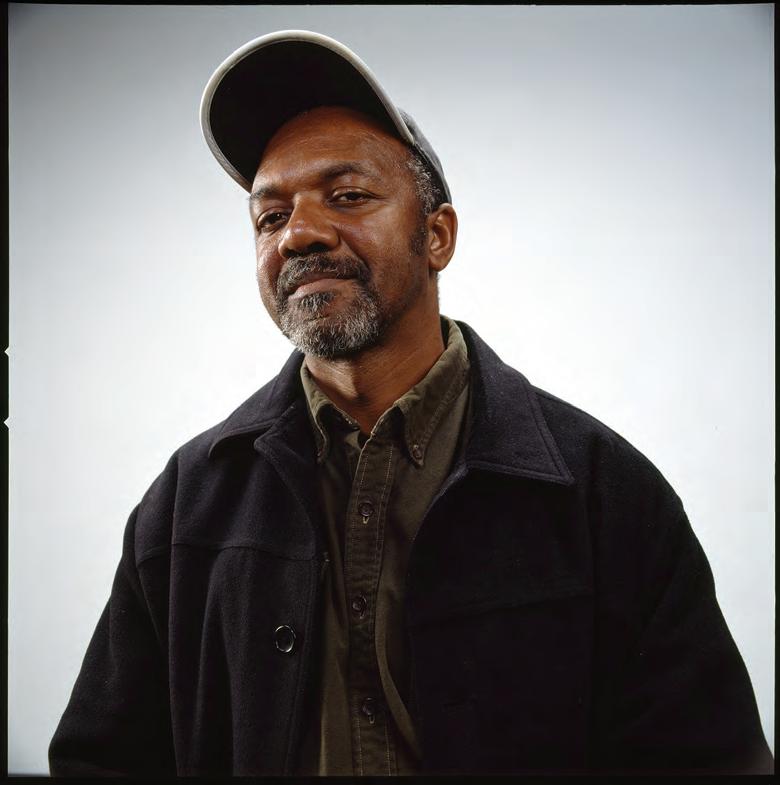 Kerry James Marshall
Kerry James Marshall
unveils an intimate aspect of his groundbreaking oeuvre in New York this fall, writes Angela M.H. Schuster
PRESS TIME Right: The MacArthurhonored Kerry James Marshall.
Facing page: the artist's 2017 woodcut, Untitled (Man), published by Peter Ruyffelaere in Brussels.
48 AVENUE MAGAZINE | SEPTEMBER—OCTOBER 2022 CENTERARTWALKERWITTIG/COURTESYCAMERON“K
CULTURE

(MAN)UNTITLED PUBLISHERSLUDIONCOURTESYMARSHALL,JAMESKERRY©2017,
Susan Tallman
As for Marshall’s more personal engage ment in the art of printmaking, says Tallman, it really took root during his high school years in Los Angeles. At that time, he began studying figurative drawing under the tutelage of African American artist Charles White, an apprenticeship that would continue well into Marshall’s time at the Otis College of Art and Design. “Upon grad uation, the artist acquired a tiny tabletop press, of a type commonly used for sign making as its press bed is but 14 inches,” Tallman explains, add ing that, throughout ’80s and ’90s, he continued making prints—mainly woodcuts—in his studio, largely as a process, a way of thinking things through. In recent years, however, that personal pursuit has evolved into a more formal practice with Marshall embarking on several notable col laborations with printmakers, namely Paulson Fontaine in Berkeley, with whom he created five etchings in 2010, and Brussels-based publisher Peter Ruyffelaere of Ludion, who has issued two of the artist’s woodcuts—Satisfied Man in 2015 and Untitled (Man) in 2017.
This aspect of Marshall’s oeuvre is soon to be lesser-known no more as it takes center stage in a special exhibition curated by Tallman at this year’s International Fine Print Dealers Association (IFPDA) fair, which runs October 27–30 at the Javits Center. On view, she says, will be a range of the works, from early pocket-size woodcuts made from found lumber to frames from his magnum opus “Rythm Mastr,” along with a host of images that depict the daily lives of Black Americans. The latter will include standalone “portraits,” which, as Tallman explains, are not portraits at all, but character studies, and figures the artist has positioned within larger landscapes and interiors, within the context of significant historical events.

The 29th edition of the fair boasts a roster of 76 exhibitors, who will be tendering works spanning 550 years of printmaking. fineartprintfair.org
 MARSHALL ARTS This spread, from left: When Frustration Threatens Desire, an acrylic and collage on canvas executed in 1990, and two of the artists prints—a 2015 woodcut, Satisfied Man, and Untitled (Handsome Young Man), an etching and aquatint on Somerset paper from 2010.
MARSHALL ARTS This spread, from left: When Frustration Threatens Desire, an acrylic and collage on canvas executed in 1990, and two of the artists prints—a 2015 woodcut, Satisfied Man, and Untitled (Handsome Young Man), an etching and aquatint on Somerset paper from 2010.
“Marshall has continued making prints—mainly woodcuts—in his studio, largely as a process, a way of thinking things through.”
50 AVENUE MAGAZINE | SEPTEMBER—OCTOBER 2022 DESIRETHREATENSFRUSTRATIONWHEN YORK;NEWGALLERY,SHAINMANJACKANDARTISTTHECOURTESYMARSHALL,JAMESKERRY©1990 MANSATISFIED PUBLISHERSLUDIONCOURTESYMARSHALL,JAMESKERRY©(2015), CULTURE

SEPTEMBER—OCTOBER 2022 | AVENUE MAGAZINE 51 MANYOUNG(HANDSOMEUNTITLED PRESSFONTAINEPAULSONANDARTISTTHEOFCOURTESYMARSHALL,JAMESKERRY©2010,),
ThatAllJazz
Trailblazing photographer Kwame Brathwaite, who redefined Black beauty, steps into the spotlight
Considered a pivotal figure in launching the “Black is Beautiful” movement of the late 1950s and ’60s, Kwame Brathwaite is credited with ushering in a “Second Harlem Renaissance,” us ing his art form to affirm notions of Black physical beauty, to celebrate African American identity, and to showcase Harlem’s vibrant jazz scene during a politically charged time in America.
“My father sought to address how white con ceptions of beauty and body image affected Black women, not only through his writings and imag es, but also the activities of two organizations he cofounded—an artist collective known as the African Jazz-Art Society & Studios, in 1956, and the Grandassa Models, in 1962,” the artist’s son, Kwame S. Brathwaite, tells Avenue from his home in LA. The latter, he explains, was a group of eight female “ambassadors” who epitomized notions of Black beauty, women who took pride in their nat ural hair and more generous curves. “My father believed that you should be your natural self and be proud of who you are, rather than obligated to accept another person’s standard of beauty. This was quite revolutionary, given that, at the time,
it was unacceptable for Black people—women in particular—to sport an Afro.”
By the 1970s, the photographer had become one of the era’s most prominent image makers, helping shape the visual narratives around such notables as Bob Marley, James Brown, Stevie Wonder, Nina Simone, and Muhammad Ali. Brathwaite also chronicled in his words and im ages such momentous events as the famed 1974 Foreman-Ali fight, the so-called Rumble in the Jungle, and the inauguration of South African president Nelson Mandela in 1994. In more recent years, he has also been a lensman of choice for su permodels, including Iman and Beverly Johnson.

Now, the artist, 84, is being celebrated in a landmark exhibition at the New-York Historical Society. The 40 large-scale black-and-white and color images on view, taken over the course of more than six decades, evince a powerful inter section of music, fashion, activism, and art. (For those interested in acquiring editioned images, Brathwaite is represented by the Philip Martin Gallery in LA and works with LGDR in New York.)
“Black Is Beautiful: The Photography of Kwame Brathwaite,” organized by the Aperture Foundation, runs through January 15, 2023. A reception and panel discussion with the artist is scheduled for October 19. nyhistory.org AMHS
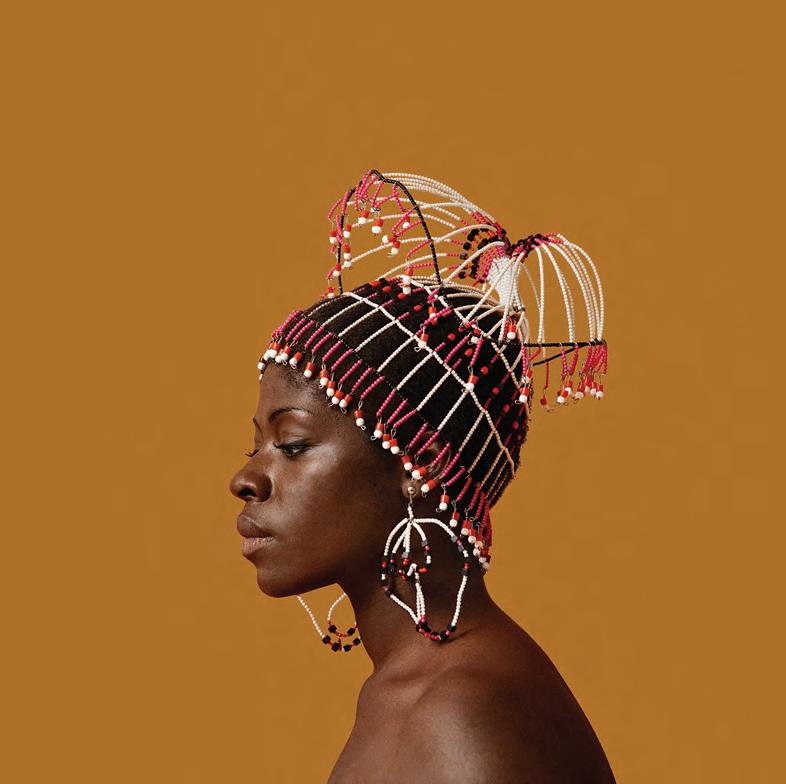
BEAUTIFUL INDEED Above, Kwame Brathwaite's wife, Sikolo, wears a headpiece designed by Carolee Prince in this image taken at the African Jazz-Art Society & Studios in Harlem, ca. 1968.
Opposite: the Grandassa Models at the Merton Simpson Gallery in New York, ca. 1967.
52 AVENUE MAGAZINE | SEPTEMBER—OCTOBER 2022 CULTURE
SOCIETYHISTORICALNEW-YORKTHECOURTESYANGELES,LOSGALLERY,MARTINPHILIPANDARTISTTHECOURTESYBRATHWAITE,KWAME©

JASON MARTIN
September 8–October 15 Lisson Gallery 504 West 24th Street
Five Shows Not to Miss This Fall
→ “In his first exhibition in New York since 2018, the British artist’s monochromatic oil works explore their own materiality, sculptural presence, and transmutative nature,” says gallerist Alex Logsdail, adding that, “the artist’s finished surfaces blur the boundary between painting and sculpture.” Notable works on view include his oil on aluminum Untitled (Viridian light/Scheveningen green deep), 2022. Working in pigment, acrylic, oil paint, graphite, and cast metal, Martin interrogates the fundamentals of painting, and channels a minimalist approach through an expansive yet controlled use of color, brush, and medium. lissongallery.com
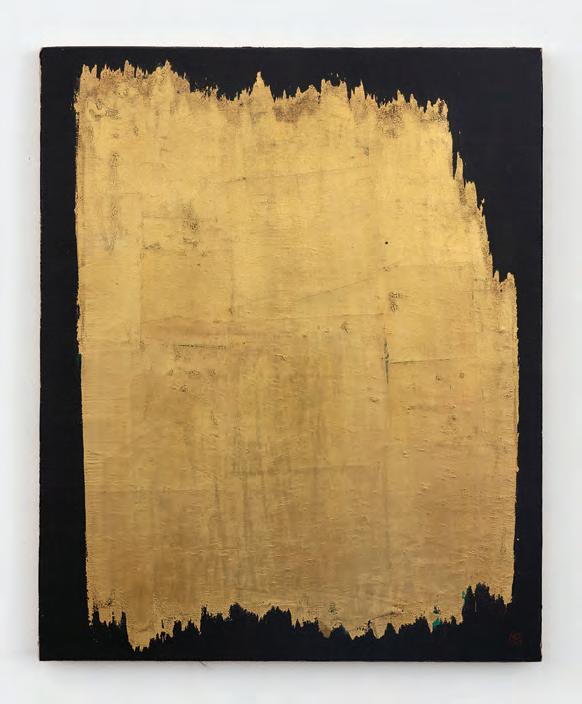
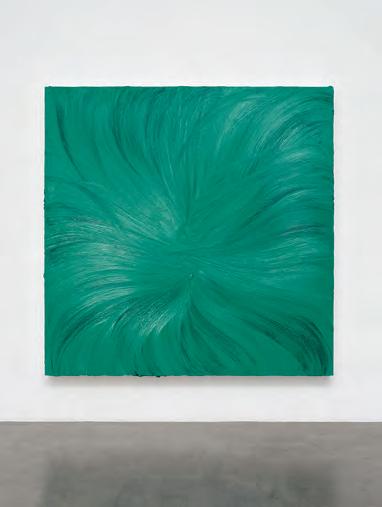
ANNA-EVA BERGMAN: REVELATION
September 7–October 22 Perrotin Gallery 130 Orchard Street
← “I am excited to showcase the work of Scandinavian artist Anna-Eva Bergman, who emerged from the trauma of World War II with a single-minded devotion to painting the sublime,” says Emmanuel Perrotin. The gallerist is presenting a survey of 50 works, along with a new monograph on the artist, an important figure in European postwar abstraction whose work has been long overshadowed by that of her husband, Hans Hartung. “Inspired by the severe modernism of the Norwegian coastline,” Perrotin explains, “Bergman created a foundational vocabulary based on the abstraction of landscape into reduced forms, using metallic leafing to reflect the beautiful Scandinavian light and a deep inner spirituality.” Among the highlighted works on view is N°59-1962 Petit feu or sur noir (Small golden fire on black, 1962), a luminous tempera and sheet metal on canvas. perrotin.com
54 AVENUE MAGAZINE | SEPTEMBER—OCTOBER 2022 GALLERYLISSONCOURTESYMARTIN,JASON©DORN;PERROTIN/CLAIRE&HARTUNG-BERGMANFONDATIONCOURTESY2022,YORKNEWARS,&PARISBERGMAN/ADAGP,ANNA-EVA©
CULTURE
CHRISTINA QUARLES:
IN 24 DAYS THA SUN’LL
SET AT 7PM
September 8–October 29
Hauser & Wirth 542 West 22nd Street
↓ “Following a presentation of her work at this year’s Venice Biennale, and ahead of her inclusion in the Biennale de Lyon, we are delighted to present the first major solo exhibition of new paintings by Los Angeles artist Christina Quarles,” says gallerist Marc Payot. Among them: Caught Up, an acrylic on canvas from 2021. In explaining her practice, the artist—a selfdescribed queer cis-woman, born to a black father and a white mother— says, “There are perspectival planes that both situate and fragment the bodies they bisect—location becomes dislocation as I engage with the world from a position that is multiply situated.” Many of the works in the show were created during the artist’s 2022 residency at the gallery’s Somerset location and draw inspiration from the local culture and surrounding landscape of the English countryside, expanding upon her instinctual approach to figuration and richly layered visual vocabulary. hauserwirth.com
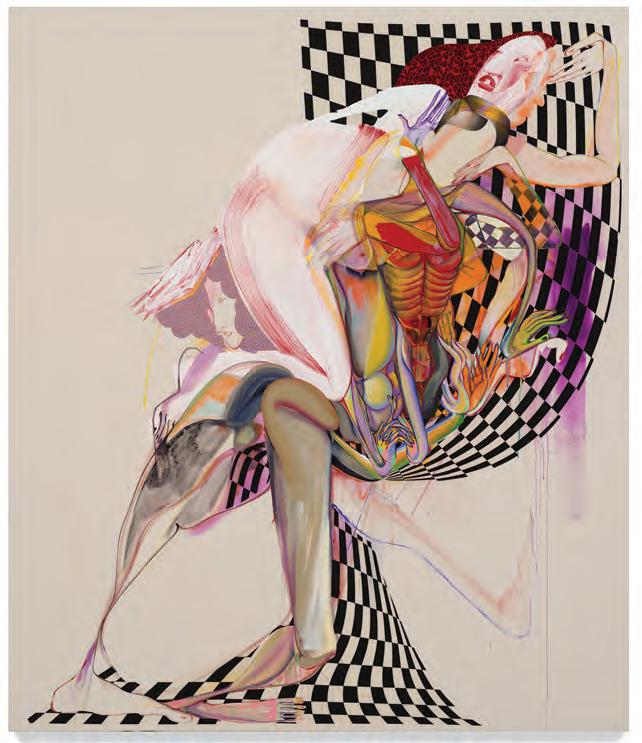
THOMAS RUFF: D.O.PE.

September 15–October 22
David Zwirner 533 West 19th Street
← For this 12th exhibition with the gallery, David Zwirner is presenting new works by the German artist from his d.o.pe. series, its title a reference to Aldous Huxley’s 1954 autobiographical volume, The Doors of Perception. Using a specialized software program, the artist creates fractal patterns that are then printed onto industrial carpets. “Channeling the beauty of mathematics to challenge human perception, Ruff has produced digital imagery that appears at once natural and artificial,” says the gallerist. “In many ways, it recalls the highly detailed and exuberant Northern Renaissance style of artists such as Hieronymus Bosch and Matthias Grünewald.” A case in point: Ruff’s d.o.pe.01 (2022). davidzwirner.com
DO HO SUH

September 8–October 29
Lehmann Maupin
501 West 24th Street
↑ Do Ho Suh makes his long-awaited return to New York in his 11th solo show since joining the gallery’s roster more than two decades ago. Best known for his multidisciplinary practice, the Korean sculptor and installation artist questions notions of home, memory, marginality, and the correlation between psychic and physical space through the creation of architectural volumes and quotidian objects, many rendered in ethereal multicolored mesh such as his multipart Jet Lag (detail), 2022. The exhibition includes a group of his celebrated “Specimens,” autobiographical sculptures that represent disparate elements— fixtures and objects—found in his past residences and studios. lehmannmaupin.com
SEPTEMBER—OCTOBER 2022 | AVENUE MAGAZINE 55 WIRTH,&HAUSERQUARLES:CHRISTINA©ZWIRNER;DAVIDANDARTISTTHECOURTESYGERMANY,BILD-KUNST,YORK/VGNEW(ARS),SOCIETYRIGHTSRUFF/ARTISTSTHOMAS© LONDONANDSEOUL,KONG,HONGYORK,NEWMAUPIN,LEHMANNANDARTISTTHECOURTESYSUH,HODO©NILSEN;LONDON/FREDRIKCORRIAS,PILARAND
Beware the future in Celeste Ng's new novel, the past in Yiyun Li's and Maggie O'Farrell's, and consider the present in light of a chronicle of the powerful Sassoons
stumbling out of bars for who knows what. Their reification is owed to the dark and voluminous imagination of Fabienne, a teenage girl raised in the rough and destitute French countryside in the years following the Second World War. Reliably by her side is her best friend, the impressionable Agnès—also her cruel plaything, and faithful scribe to her stories. Agnès’s loyalty borders on zealotry. But here’s the thing: Fabienne is dead,Composedtoo… in Li’s crystalline, unhurried prose, this worldsweeping tale—which has the texture and atmosphere of a fable—begins in, of all possible places, Lancaster, Pennsylvania. Now in her 20s, Agnès is drifting through a barren marriage to a kind if unremarkable husband. “Perhaps it is not his fault that I cannot get pregnant,” she writes to herself. “The secrets inside me have not left much space for a fetus to grow.”
at Princeton and winner of the PEN/Hemingway Award and a MacArthur grant—has again transfigured her personal tragedies into a piercing work of art. And while her characters, like the rest of us, can only poke around the edges of these unanswerable questions, there are, as in life, occasional moments of grace and clarity, when the fog vanishes and the answers appear. In one such instance, Li offers a description of happiness that might be called definitive: “to spend every day without craning one’s neck to look forward to tomorrow, next month, next year, and without holding out one’s hands to stop every day from becoming yesterday.”
—Daniel Karel
insidious program of separating the children of alleged dissidents from their “undesirable” families, who often proceed to disappear under enigmatic and frightening circumstances.Justreplay the January 6 hearings, and you’ll know what I mean, and what Ng meticulously, eloquently, and devastatingly gets at in Our Missing Hearts
by Yiyun Li (Farrar, Straus and Giroux)
There are no literal ghosts in Yiyun Li’s beguiling new novel, The Book of Goose, but the dead possess freakish agency. They haunt creek beds and lance eels with bayonets. They weave snares from willow branches. They pick up drunks

An unexpected letter arrives from her estranged mother, still living in France, offhandedly relaying Fabienne’s death during childbirth. As if possessed, Agnès begins a chronicle of their peculiar girlhood relationship, which launched her as an upstart young author from their village to the publishing houses of Paris, and on to a boutique English boarding school, riding a starburst of literary fame. “I never made up stories,” she writes of her books, “but I was good at listening to Fabienne.” Published under Agnes’s nom de plume, Agnès Moreau, the books were composed by both of them.Inexcavating the past, Agnès runs up against some questions so moss-covered that to even raise them here feels trite. But they have an urgent contemporary relevance, so here goes: Who has the right to tell a story? Can a narrative have a definite endpoint? How can we find happiness in difficult times? In response to the last, Fabienne offers a workaround: “I have an idea,” she tells Agnès. “We grow your happiness as beet and mine as potato. If one crop fails, we still have the other.” They are also relevant to Li’s own backstory as the survivor of a dark time of persecution in Tiananmen-era China, and the self-portraying chronicler of a series of suicide attempts.With
The Book of Goose, Li— now a creative writing professor
OUR MISSING HEARTS by Celeste Ng (Penguin Press)
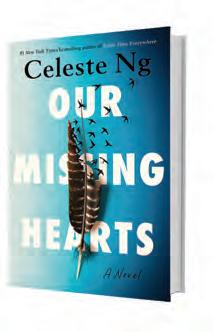
The thing is, you never know your world is going to end until it happens—that disaster will strike or be inflicted; that the unimaginable will creep up so slowly it goes unnoticed; that dysfunction will blossom into deadliness; or that peace, quiet, and country club calmness will shatter into a million little pieces—as happened in Celeste Ng’s literary blockbuster Little Fires Everywhere. In her new novel, Our Missing Hearts, it’s millions of lives progressively compromised, crushed, and stealthily snuffed out in a not-so-distant future as China perpetually hovers on the verge of a planet-annihilating war with the rest of the globe. In this dystopian narrative, that standoff has steered the United States into devoting much of its national and cultural defense mechanisms at home to anti-Asian propaganda. By sowing discrimination, public humiliation, and personal destruction, the government implicitly condones violence against anyone of Asian descent and embarks on an
Take Ng’s 12-year-old, half Chinese-American Noah Gardner, nickname “Bird,” living under the omnipresent PACT, or Preserving American Culture and Traditions Act, which insists that everything is hunky-dory, and the nationalistic fearmongering it spreads is just a sunny-side up way of keeping everyone happy and safe. Bird picked his nickname when he was younger, and his family was happy and intact. After his poet mother, Margaret Chu, abandons her husband, a brilliant former linguistics professor who now files books in a university library in Cambridge, Massachusetts, his father refuses to call him that anymore. Missing his mother terribly, Noah revives his nickname, both out of defiance and out of a young boy’s propulsive sense of hurt.Like others who seemingly go missing, Bird’s mother’s departure was more like a forced vanishing, since she was associated with a resistance that still simmers underground and whose members venerate her poetry, especially the powerful, stabbing clutch of words “our missing hearts.”
Growing signs of dissent have started to appear in the form of banners or writing in chalk, many containing those three potent words, which Noah takes as a sign that his missing mother is somehow trying to communicate with him. He also witnesses a strange set of coincidences at his father’s library, which most decidedly does not stock her books. There, Bird glimpses people leaving tiny bits of folded paper inside books within the stacks, while a young librarian helps him find a book of Japanese fairy tales with stories that his mother used to tell him. These events give Bird the courage to leave home for New York to track his mother down.
Bird arrives in a New York you know and don’t know. Chinatown resembles an abandoned war zone, while the Upper East Side “looks
56 AVENUE MAGAZINE | SEPTEMBER—OCTOBER 2022
CULTURE
like a fairyland,” with a beautiful Asian woman walking a small dog until “a tall white man” and his fist come “out of nowhere… The woman crumpling, turned to rubble.” He experiences a Park Avenue lined more with fortresses than the expensively impregnable apartment buildings they really are. But Bird has a slip of paper with the word “Duchess” written on it and an address, and he’s the kind of young man who won’t take no for an answer, not from a totalitarian regime’s powers that be who believe they know what they have in store for him, not from a doorman. The “Duchess” turns out to be Dodo, his mother’s friend and flatmate from when they were young and led an arduous but happy and creative downtown existence. Dodo and Bird’s mother are still close, so close that Dodo gets him to a mysterious hideaway where Margaret is engaged in activities that will sweep Bird into a mysterious world where nothing is what it seems—that is, until dark corridors and hidden liberation plots give up their ghosts and those seeking to avenge them. Bird sees and retrieves there what he needs in order to move forward, so that even when Margaret disappears once more, he knows what to do.
Celeste Ng has written another wonder of family lost and found, and about the force of words and art that connect and set free.
c E li A mcg
(O’Farrell makes her 15) to a far older d’Este in need of an heir. In the deceptively domestic opening scene, the couple make stilting, excessively proper conversation over dinner even as Lucrezia quietly, devastatingly realizes that her life is in danger at the hands of a moody, mercurial husband. Seated across from Alfonso II d’Este, Duke of Ferrara, Modena, and Reggio, she understands with a “peculiar clarity, as if some colored glass has been put in front of her eyes, or perhaps removed from them, that he intends to kill her.”
Lucrezia’s story leading up to this is recounted in alternating time lines: her childhood in Florence as part of a large, powerful aristocratic family and her life as a terrified newlywed, torn from her roots and at the mercy of a man who is an unpredictable mystery to her. Her new existence brings her ominous sisters-in-laws and the task of navigating the complicated history of a tumultuous extended dynasty with treacherous politics. The titular marriage portrait, commissioned by Alfonso, is the device through which O’Farrell allows us a glimpse into Lucrezia’s growing powers of perception and burgeoning emotional maturity.
genuine humanity and gives life to a person whose brief existence could have easily been lost to obscurity.
Allison Escoto
the other Joseph Sassoon did just that, and thus began a research project that has culminated in this strangely bloodless but nevertheless intriguing, if not a little infuriating, account of centuries of Sassoons.
THE MARRIAGE PORTRAIT by Maggie O’Farrell (Knopf)

The brief, introspective life of a young woman during the Renaissance in Italy is explored in Maggie O’Farrell’s remarkable latest novel. From the very outset, in a historical note, we are told the sad fate of the achingly real Lucrezia de’ Medici, born in 1545 into a long line of Florentine nobility and married off at 13
Though the story’s players are based on real figures, the time and distance that stretch between then and now are more of a barrier here for O’Farrell than it was in her previous, astonishing work, Hamnet, which won the 2020 National Book Critics Circle Award. But she still manages to infuse the novel with strikingly vivid detail—minute aspects of life in a Renaissance court captured with a delicate attention to every one of the senses. Lucrezia’s rich inner life, her budding creativity as a painter, and an insightfulness that belies her age are treated to O’Farrell’s elegant, transporting prose. Lucrezia passes the time when no one else is around painting scenes from her imagination, only to paint over them to hide her true passion from prying eyes charged with surveilling her, and forms an instant connection with an apprentice portrait painter who speaks in the same provincial dialect as the cherished nursemaid who raised her and whom only she can understand. Granting us access to these small, significant moments, O’Farrell endows Lucrezia with a
THE SASSOONS: THE GREAT GLOBAL MERCHANTS AND THE MAKING OF AN EMPIRE by Joseph Sassoon (Pantheon)
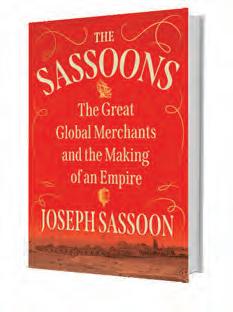
What, I wonder, does it say about our modern times that we live in an era of dynastic nostalgia? We can’t get enough of the Gettys. We call for the Carnegies, vamp for Vanderbilts, murmur for Mellons, and run to the Rothschilds and Rockefellers. We regard the rise of each with awe and tend to their intrafamilial turmoil with delight. There are literally Carnegie Library bookshelves filled with tomes devoted to these families and, of course, plenty of prestige television too. To add to this cast of generational plutocrats, here come the Sassoons.
Markedly different from other dynasties in a number of ways, the original Sassoons were Baghdadi Jews, from the Middle East, whose wealth derived from the 19th-century opium and cotton trade in China and India before being leached away by succeeding generations who turned away from industry and embraced, instead, both Englishness and dissolution.
Also of note and differentiation, they, like Percy Bysshe Shelley’s vast and trunkless legs of stone, had been remanded to the obliviating sands of time. That is, until one Joseph Sassoon, hitherto a professor of history and politics at Georgetown University and best known for such page turners as Anatomy of Authoritarianism in the Arab Republics, received a letter from another Joseph Sassoon, this one of Kirkcudbright, Scotland, who “declared himself a descendant of Sheikh Sassoon ben Saleh Sassoon and believed I might be also and therefore hoped to hear from me.” Hearing from Joseph Sassoon,
Some of the arc will be familiar to followers of the wealthy but, due to the global nature of the Sassoon enterprise and their carefully preserved Sephardic Judaism, there is novelty still. The aforementioned Sheikh Sassoon ben Saleh Sassoon, for instance, was the financial advisor to Dawud, the mercurial pasha of Baghdad in the 1820s. When Dawud fell from favor with the Ottoman rulers, Sassoon and his sons, David and Joseph, were forced to flee. David eventually made his way to Bombay—then run by the East India Company—and through a mixture of assiduous research, canny business acumen, and hard work, founded what would become Sassoon & Co. (This will be for many the familiar part.)
As an actual Sassoon—as opposed to hair care titan Vidal, who, for the record, is not—Joseph Sassoon chronicles in meticulous detail how David, though he began in textiles, made his first fortune in trading opium between India and China. From this core business grew others, including shipping and insurance, but opium remained, until it was outlawed in the early 20th century, the furnace for the Sassoons’Sassoonwealth.devotes a great deal of space to the piousness of his forebearers. They are learned in the Talmud and—before assuming arch Englishness—observant. But time and time again, throughout the relatively short but astonishingly eventful reign of Sassoon & Co., he sees world events solely through the lens of profit made or lost. The First Opium War in China, for instance: good, since it mercilessly pried open that country to the lucrative trade. The American Civil War: also good, because the cotton shortage drove up prices from Sassoon’s holdings in India. In this the Sassoons, here including both the family and the author, seem totally indifferent to any moral consideration. And absent that moral compass, another dynastic family can’t help but spring to mind: the cutthroat modern day opioid traders, the Sacklers, whose own vast sums were accumulated off the suffering of others, and, for that matter, far closer to home.
joshuA dAvid st E in
SEPTEMBER—OCTOBER 2022 | AVENUE MAGAZINE 57
EE
A N AM E R I CA N I N P A RIS AT JUST 24, ANNA PEI, THE GRANDDAUGHTER OF FORMATTHEWPHOTOGRAPHYOFANDARCHIVALFOUNDINGABOUTSHEBLAZINGI.M.ARCHITECTLEGENDARYPEI,ISATRAIL-ENTREPRENEUR.TALKSTOMIKE ALBOFRIENDS,FAMILY,HEROWNSERVICE,THEIMPORTANCEMEMORIES.BYAVIGNONE AVENUE
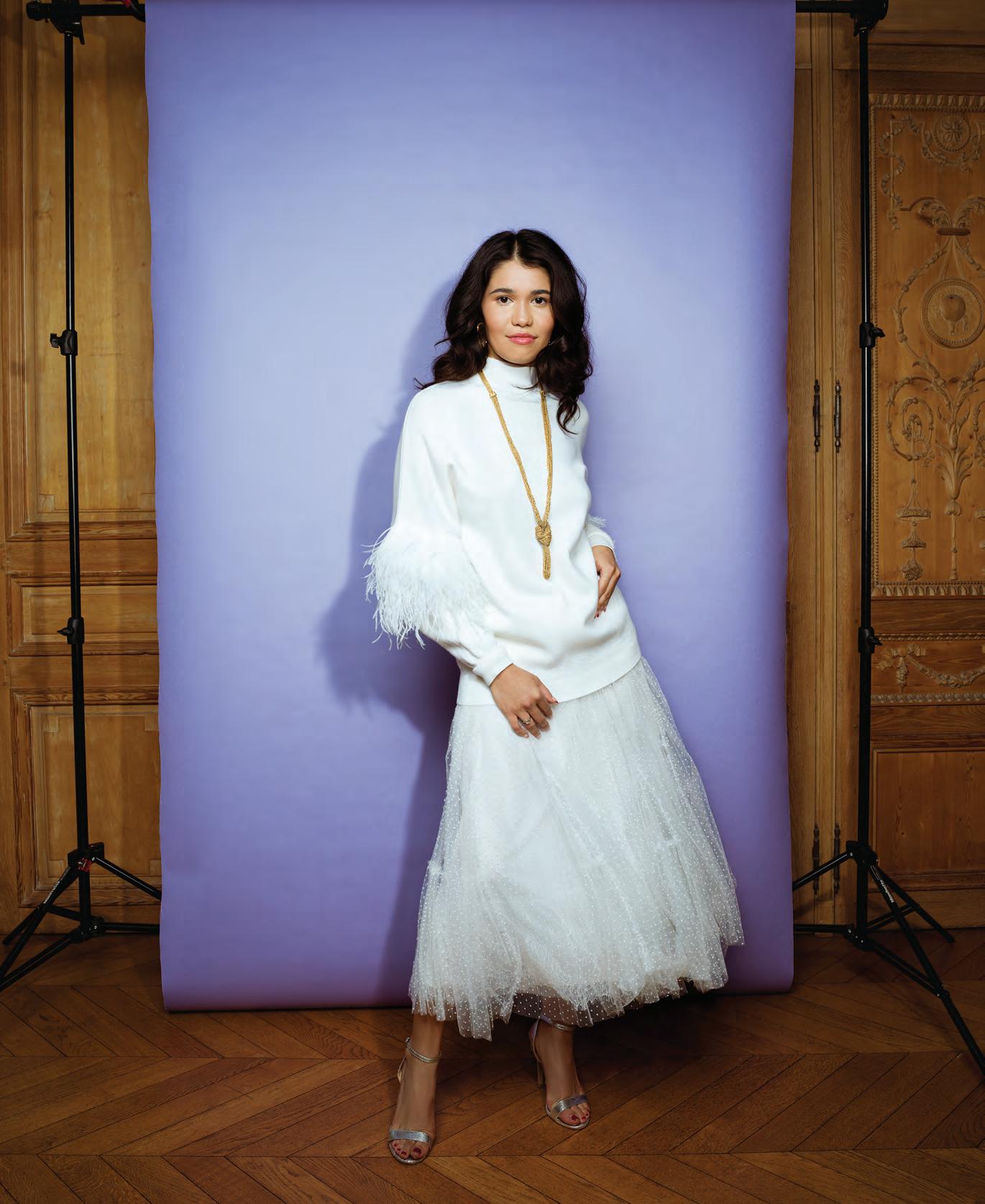

60 AVENUE MAGAZINE | SEPTEMBER—OCTOBER 2022
Pei held her laptop like a camera (that way we’ve all learned by now) and gave me a tour of her office near Madison Square Park. It was a clear morning in late June, and she was wearing a black turtleneck with an egg-shaped jeweled pendant (a gift from her mom), her long hair brushed back over her “Thisshoulders.isgoingto be kind of messy because we are in the middle of an intake,” Anna said, show ing me around the brightly lit, not-messy-at-all office. Behind her were stacks of blue archival boxes. Young people waved hello from tables as she introduced them. “We’ve got two interns and two part-time staff members now. This is where we work! My grandfather’s old office.”
Anna’s business is Ode, an exclusive archival service she started two years ago soon after grad uating from Barnard. And that grandfather she is referring to would be the late I.M. Pei, the lion of modern architecture, creator of masterpieces such as the Louvre Pyramid, the JFK Presidential Library and Museum, and the Miho Museum in Japan (one of Anna’s favorites).
She opened a door to a sleek, light-filled wait ing room. “And that is my dad’s office right over here,” she said, pointing to the immensely suc cessful Pei Architects, where her father, Sandi, and her uncle, Didi, follow their father’s footsteps. “It’s really awesome being able to be in the space with them and the same assistants who used to be
my babysitters when I was a little girl and told me to not run with scissors.” They kindly gave Anna the office space, but her family doesn’t underwrite the business. “It’s completely bootstrapped. We have been just cycling what we make back into the business, and I don’t really pay myself.”
This was the one time we could find to chat— soon she was headed abroad with her boyfriend Dobrin Mitev: England (Bath, Exeter, Cornwall), then France (Paris, Lyon, Aigues-Mortes), then up to the Swiss border, and then to Mitev’s home land, Bulgaria. (They met on the dating app Hinge about 8 months ago; it’s getting serious.)
They look amazing together. On her Instagram there’s a photo of the couple embracing, both in white pants, the pockets of which are decorated by Anna’s best friend Serena Nickson (daughter of the painter Graham Nickson and Dita Amory, the curator in charge of the Robert Lehman Col lection at the Metropolitan Museum of Art) as part of her collection of vintage, hand-painted clothing. There are other photos of the pair look ing gorgeous in Mexico, also of Anna and Serena looking gorgeous in red swimwear in Miami.
Growing up on the Upper East Side in a sto ried international family, attending Brearley and Barnard, having friends from other well-con nected families, “coming out” at the 24th annual Le Bal in Paris wearing Ungaro alongside other debutantes, including True Whitaker (father,
SHE’S THE ONE Anna Pei lights up the room in a Lizzy Jacquard jacket and a Jane Jacquard pant and Nina silk blouse by Ungaro, and gold-plated Katt earrings in ivory-colored bakelite by Aurélie Bidermann. Previous page: Anna wears a Daniella sweater with ostrich feathers and Kendall polka dot mesh skirt by Ungaro, and a Miki long necklace by Aurélie Bidermann. Clothes throughout from Ungaro’s Fall 2022 collection.
SEPTEMBER—OCTOBER 2022 | AVENUE MAGAZINE 61
ANNA
Forest) and Baroness Ludmilla von Oppenheim of Germany, Anna Pei could live her life as just another pedigreed young New Yorker. But she has much more on her mind than moving in rarefied social circles, including the cultural importance of everyday objects.
“You know, that’s what Baudelaire was talking about, the mundanity of life and how it’s beauti ful. That’s something that we’re trying to emulate at Ode—making a museum from your memories.”
Still a fledgling business, Ode has about seven clients and growing. Anna and Ode’s cofounder, Marley Lopez, are careful to keep their clients’ identities under wraps (just know they are the kind of legacy names you may hear in an episode of The Gilded Age). “We are experiencing clients with multiple properties that need management across these properties…people who have lived extravagant lives. They need help with collating and curating for future generations. I really think of this as a form of archaeology. We are digging into people’s lives,” Anna says resolutely, sound ing, at just 24 years old, like a seasoned CEO.
“Anna is extremely extroverted,” says Lopez. “She lights up a room. We have employees whom she met at the dog park. She’s able to convey Ode so easily as a mission to tell people’s stories.” Lopez and Pei met through a mutual friend (Pei’s former roommate), who thought they should con nect since they were both interested in archival work. A graduate of Parsons in strategic design and management, Lopez was back home in Portland, Oregon, for the pandemic. Pei called, and then “two weeks later I was back in New York City.”
Anna’s inspiration for Ode came soon after her grandfather passed away in 2019 at the age of 102, when she was sifting through the many boxes of his stuff he had lying around. “He was someone who spoke nearly a dozen languages and had over a dozen honorary degrees and an incredible amount of accolades. So he kind of would just throw things into bathroom drawers at a certain point. Even the most successful of peo ple have junk drawers.” The piles of mementos I.M. Pei and his wife of 72 years, Eileen Loo, left behind are also an ongoing project at Ode. What Anna has found includes a letter from a professor to the dean of MIT when her grandfather was a student there, asking if it was okay for the school to admit previous courses Pei had taken because what did it matter, he was just a Chinese student who would never achieve success in the field of architecture. “So we have to ask why?” Anna said. “Why did he feel the need to put that in a shoebox in the first place? It had some value to him.”
Growing up on the UES, she didn’t really com prehend the stature of her grandfather until she was 15 and started to go to award ceremonies. “Paul McCartney once came over to our table at dinner to introduce himself to my grandfather. I was like, What? That’s absurd.”
Anna was extremely close with I.M. “We had a bond like no other.” During her college years she would spend as much time as she could at his Sutton Place townhouse. “I would spend the whole day there, like we would just sit in silence together. It’s funny, we didn’t talk that much. I mean, he was so old and I don’t think he really
PEI DAY Architect I.M. Pei seated near The Louvre Pyramid, one of his most iconic structures. Opposite: Anna wears a pleated long dress in orchid by Ungaro and a Tao Articulated necklace by Aurélie Bidermann.

wanted to talk about his career at all anymore. He was bored of that. So for us, it was just about sharing those harmonious moments of silence.”
When Anna was younger, she and her par ents (her mother is Kari Pei, an award-winning global product design director and a presence on New York’s art, architecture, and museum social scene) took dozens of trips abroad with her grandparents: Egypt, Morocco, Japan, Spain, Italy. “They used to travel with these big Louis Vuitton cases. I could witness them living their best life. I remember one trip to Costa Rica, both of them in their 90s, going down these dirt paths, miserable for their poor little joints.”
These trips were a kind of escape for Anna. Her last name isn’t necessarily a household one— “There is without a doubt no shred of uncertainty that my grandfather had nothing to do with my social life,” she said—and in fact, school was kind of rough. “I was bullied tremendously as a child and as a teenager. So my name did not protect me fromAnnathat.”was born with a connective tissue disor der: Ehlers-Danlos syndrome, Types II and III . “I don’t have any cartilage in my joints and I wasn’t diagnosed until I was 13. I’ve been handicapped since I was very small, but I look super able-bod ied.” For a large portion of her childhood, she ex plains, she was in tremendous pain, and couldn’t participate in sports, unable to make connections on the playground or field. “I was really seen as an
outcast because I looked fine. People just thought I was a hypochondriac. And that feeling of isola tion has followed me throughout my whole life. I definitely see a lot of my work today is about making sure that everyone feels seen, because I felt so unseen for so, so much of my life.”
She went to Brearley for nine years, the sev enth girl in her family to go. Of Brearley, she says, “I loved it. Actually, I hated it, but I loved hating it. Does that make any sense? Like I definitely am gonna send my kids there. It was a brutal, miser able experience, but it toughened me up, made me prepared for the real world.”
College had its own challenges. When Anna was a sophomore, she began having seizures. “I thought I was just narcoleptic…then it became more serious, sometimes nine a day.” Along with her health issues, Anna believes these episodes were a result of anxiety and PTSD. It was 2017 and ’18–the height of the #MeToo movement, when issues of sexual assault and abuse of power were fiercely discussed and processed on cam pus. “I was so stressed out… I’ve personally dealt with my experience, and the trauma returned.” These episodes impacted her memory—most of her college years, she explains, have been wiped out. “Some people tell me I shouldn’t talk about all this, but it’s important to talk about it to feel confident in your conditions.” (She’s managing well these days, crediting meditation, stretching, and her beloved dachshunds as her anchors.)
62 AVENUE MAGAZINE | SEPTEMBER—OCTOBER 2022
IMAGESGETTYVIABISSON/SYGMABERNARD
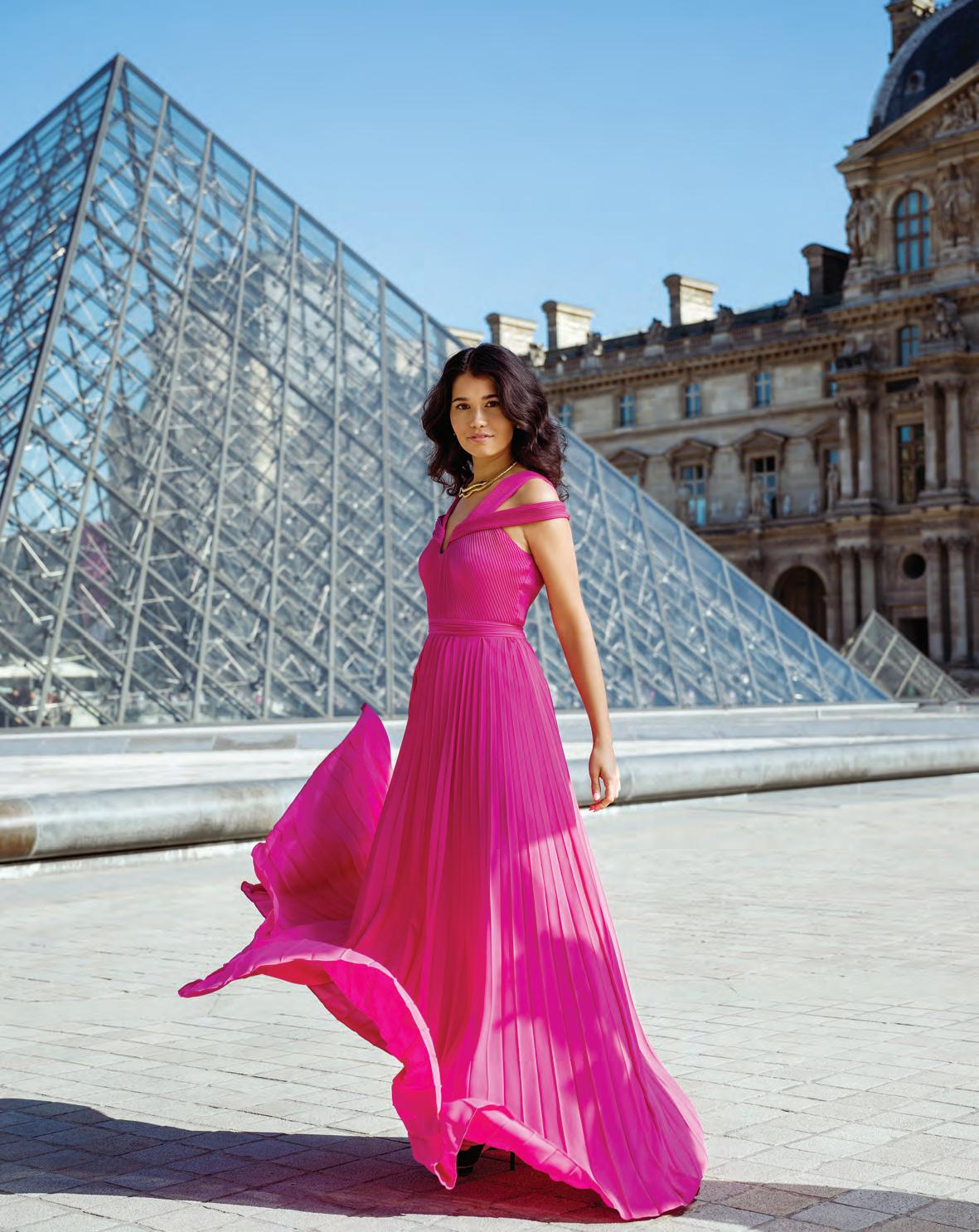
SEPTEMBER—OCTOBER 2022 | AVENUE MAGAZINE 63
All these personal struggles are conveyed by Anna without self-pity, and with humility—she’s the first person to admit she comes from privi lege—and you can see how they shaped her into someone with an even richer inner life. “Since my grandfather’s passing, I think I have been looking for myself in many ways,” she mused at one point in ourGraduatingconversation.from
Barnard was timed with a different world event: the pandemic. She spent it away from her parents, living in an apartment on Crosby Street, wondering what kind of world she was entering into. “I was like, I just spent four years studying art history and the art market just crashed. Your parents don’t know how to navigate a time when everyone is dying and unemploy ment is at its highest.”
Her apartment became a gathering place for friends, carefully getting together. “Anna’s home was the destination,” says one of her closest pals, William Corman, also 24. “She would host brunches, soaking challah toast overnight in
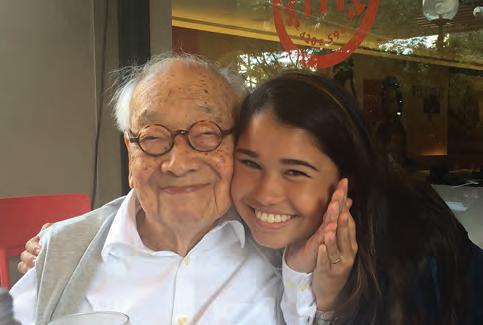
cinnamon and buttermilk. It was the best French toast to ever touch my lips. She would cook for all of us. She would not stop cooking.”
For many of Anna’s age, the pandemic became a kind of enforced gap year, time to recalibrate, step back. Just what Covid’s effect is on the city will be discussed for years to come—but one tiny silver lining could be how young people like Pei had a moment to find purpose before hurling themselves into the workforce.
“I know Anna has this crazy social prowess. That’s something one learns growing up in New York,” say Corman. “But post-Covid, Anna is a bit of a different person. She began to home in on her work.” For someone who holds culture in such high regard—not just her grandfather’s but culture as a whole—Ode feels like exactly the right pursuit for this young woman with clear ideals.
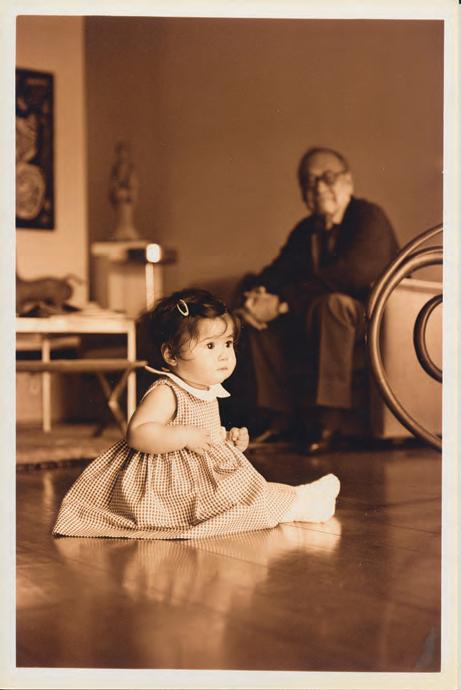
That day we spoke was the day of the Supreme Court’s Dobbs decision. I told her I was feeling despair. “This is not the first time we’ve been hit with something tremendously destructive for
society,” she said. “I have faith. We have a strong society.”Thesedays, Corman says they spend a lot of time at openings, friends’ apartments, and restau rants, with Anna always in full form. “We went to Lucien recently and I watched her bouncing around from table to table saying ‘hi’ for 45 min utes before sitting down.”
Forty-five minutes, it seems, is barely enough time to chat with her. You leave wanting more. As emotionally honest and genuinely curious as Anna is, conversations quickly ascend to big themes, sparkling perspectives, grounded in a steel-beamed sense of optimism, as solid as a New York skyscraper.
PHOTOGRAPHY ASSISTANT: ARIELLE CAPPELLA
STYLING: ISABELLE KONIKOFF
MAKEUP ARTIST: BENOIT CLAVERIE
HAIR STYLIST: MELINDA BOUAMAMA
FASHION: UNGARO FALL/WINTER 2022
JEWELRY: AURÉLIE BIDERMANN
ALL INTERIOR SHOTS TAKEN AT THE UNGARO SHOWROOM IN PARIS
ODE TO ANNA Above: a six-monthold Anna and her grandfather at his home at 11 Sutton Place. Right: Anna and I.M. Pei in New York in the summer of 2016. Opposite: Anna wears a Daniella sweater with ostrich feathers and Kendall polka dot mesh skirt by Ungaro and a Miki long necklace by Aurélie Bidermann.
“MY LIKEANDGRANDFATHERIHADABONDNOOTHER.”
64 AVENUE MAGAZINE | SEPTEMBER—OCTOBER 2022
PEIANNACOURTESY


THE YOVANOVITCHPIERREVAILLANCOURT/COURTESYJEAN-PIERRE
ConceptualistsThe
Miles Redd ↑
It hardly needs to be said that Miles Redd, of Redd Kaihoi Design, has never met a color he didn’t like. Yet that also goes for a very major, “very no-color” apartment that he’s finishing for a client this fall. “It’s a departure for me, quite modernist,” he says. As far as he’s concerned, “post-Covid, I see interiors continuing to be especially important in people’s lives as they start to host again—how fun that we can all finally be together.” What’s at the top of Redd’s hosting list? “A stiff drink as soon as you come in the door. I come back to gin and tonics all year round.”
As for color: that means “there’s a bowl of limes on the bar at all times.” reddkaihoi.com
Danielle Colding
Since launching her eponymous design firm over a decade ago, the Stanford alum and winner of HGTV’s Design Star season seven has become a darling of the design world, highly sought after for her elegant yet eclectic interiors, a mixture of high and low, custom and vintage she sums up as “cozy cool.”

A recipient of numerous accolades, she was included in this year’s Black Interior Designers Network (BIDN) Top Ten African American Interior Designers, whose judges included industry heavy-hitters Amy Astley of Architectural Digest and Asad Syrkett of Elle Decor dcdny.com
Celerie Kemble ↓ “What we’re known for,” says Celerie Kemble of Kemble Interiors, the firm originally founded by her mother, Mimi Maddock McMakin, in Palm Beach in 1982, “is making things more themselves, giving a project more of its personality, and bringing out a sense of place.” That seems to be everywhere for the sparkly, Harvard-educated Kemble this year, from an Upper East Side townhouse “with a fabulous secret swimming pool,” to new launches with Schumacher that run to tortoiseshell, birch bark and embellished sisal. Then there’s someplace truly personal—the house she found in Murray Hill “after I got divorced a few years ago,” from Eagle Capital Management’s Ravenel Boykin “Boykin” Curry IV. She’s just moving in now, and the staid neighborhood off lower Park Avenue will never be the same. kembleinteriors.com

Avenue rounds up 50 of the most influential players in New York’s adrenaline-filled world of design
SEPTEMBER—OCTOBER 2022 | AVENUE MAGAZINE 67 MASTERS OF THE INTERIORSUPERIOR
KEMBLECELERIEFRANZEN/COURTESYNICOLEREDD;MILESACEVEDO/COURTESYMELANIE
Chris Benz ↓
Chris Benz is so busy he “can’t tell what day of the week it is.”
The fashion designer-turnedinteriors guru launched his own design firm, Cult Projects, two years ago after multiple friends reached out to him during the pandemic. “They were already familiar with my taste level and sensibility. I hit the ground running.” Designing interiors is
not so different from designing clothes, the former creative director of Bill Blass and head of women’s design at J.Crew tells Avenue. “It’s still about color, proportion, texture, silhouette, working with scale.” Benz is now in high demand for his relaxed, timeworn aesthetic and irreverent eye for color—“I’m a frustrated maximalist,” he laughs. chrisbenz.com
Ariel Ashe & Reinaldo Leandro
Despite being founded back in 2008, the team of interior designer Ariel Ashe and architect Reinaldo Leandro has seemingly gone from nowhere to everywhere in the last few years. Now with high-profile commissions for their highly livable take on luxury interiors, including from Gwyneth Paltrow and Ashe’s brother-in-law, Seth Meyers, the duo continues to blur the
boundaries between their formerly discrete disciplines. Their highly textural designs can be seen in a coming monograph published by Rizzoli. asheleandro.com
Nathan Turner
“Growing up on my family’s cattle ranch in Northern California taught me how to do things in a relaxed, inviting but stylish way,” says the author, chef, interior designer, and fourth generation Californian, Nathan Turner. His cookbook, I Love California (Abrams, 2018), is filled with photos of his friends and the famous dinner parties he throws, while his monograph Nathan Turner’s American Style (Abrams, 2012) points to his all-American, classic approach to interiors. “For me, it’s all about the well-lived life. What good is a beautiful home if it isn’t filled with friends, family and, of course, pets?” With projects in Sydney, Australia, Turks and Caicos, and Kansas, Turner, who divides his time between New York and Los Angeles, is in high demand while his wallpaper and murals can be found on Wallshoppe, of which he is partner and co-creative director. nathanturner.com
Corey Damen Jenkins
Corey Damen Jenkins is on a tear; after winning the prestigious Stars on the Rise award from the D&D Building’s annual event in 2019, he went on to publish his monograph, Design Remix: A New Spin on Traditional Rooms (Rizzoli, 2021), move his eponymous design firm full-time from Detroit to New York, and debut on the 2021 AD100 designer list. Known for his exuberant yet elegant spaces, his aim, he has said, is to ensure that his clients’ homes are always “classic, livable, and without an expiration date.” coreydamenjenkins.com
Asia Baker Stokes
In 2012, Vogue alumni Asia Baker Stokes opened her firm A.A. Baker Design in New York. One of her first big projects was her own house, a 1930s stable in Long Island which she shares with her husband and two young daughters. Baker’s projects feel comfortable, casual, and preppy in the most elevated, sophisticated manner.
“It’s important for your spaces not to feel like a showroom,” she says. aabakerdesign.com

68 AVENUE MAGAZINE | SEPTEMBER—OCTOBER 2022
BENZCHRISCOURTESY
Russell Piccione
Erudite and eclectic, designer Russell Piccione is currently “making a little bit more Candela than Candela” a grand apartment in perhaps the most exclusive Candela building on Park Avenue, to house what many consider the country’s best private collection of African and Oceanic art. In addition to a complex lighting scheme for the many sculptural objects, Piccione has gone to such lengths as importing a French 18th-century paneled room for the library, where books on the subject of connoisseurship can be consulted in the style to which they are accustomed. russellpiccione.com
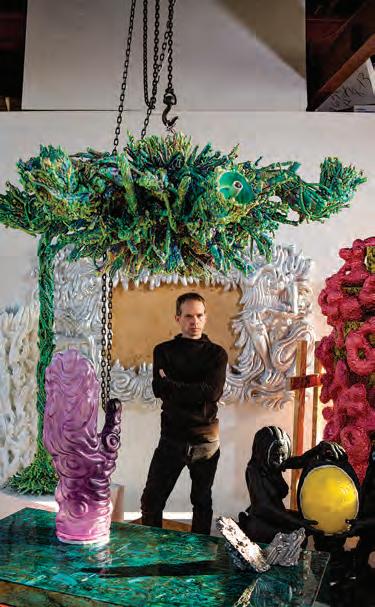
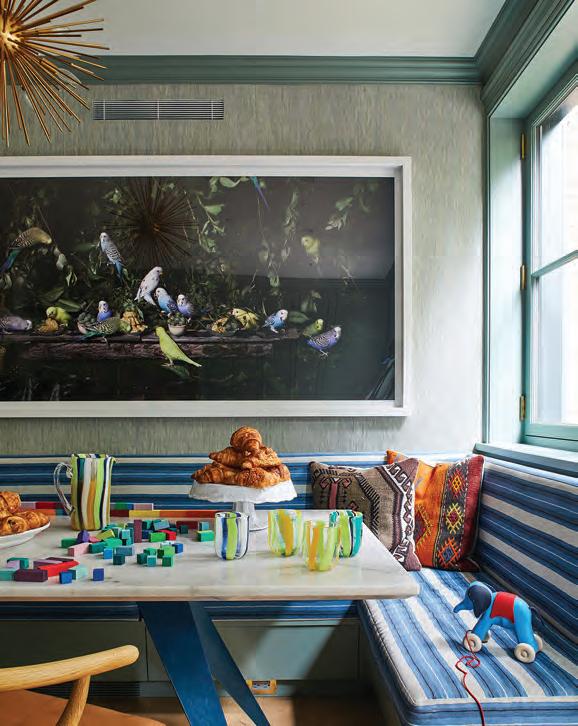
Alyssa Kapito
The Charlotte is one of the first new residential buildings to be constructed in the Central Park Historic District in several decades, and the first green condo in the city’s history. Alyssa Kapito is meeting the challenge of accommodating sustainable design while remaining true to her high chic quotient by placing a little Prouvé here, a little Perriand there as a nod to French modernism and its machine-for-living style that the interiors designer has long embraced as her own. alyssakapito.com
CreatorsThe
GAME CHANGERS IN BETWEENEVERYTHINGLIGHTING,FURNITURE,ANDIN
Chris Schanck ↑
Jesse Carrier & Mara Miller ↑ Anna Wintour doesn’t mess around when it comes to knowing what she likes, and for her own homes—and the Vogue offices—she is more than partial to the husband-and-wife team of Mara Miller and Jesse Carrier of Carrier and Company Interiors. “Throughout all our work, we gravitate toward clarity, negative space and simplicity,” Miller says, “layered with antiques” and pieces of their own design. If it’s good enough for Anna, it must be very, very good. carrierandcompany.com
Lindsey Adelman
“I have long been obsessed with illumination in all its forms,” says maverick New York lighting designer Lindsey Adelman, who tells Avenue that her work has been inspired by such diverse sources as Eva Hesse’s Rope sculptures; the pattern, colors, and bodily ornamentation of the Maasai of Kenya; and even the films of David Lynch. Since the 2006 debut of her “Branching Bubble” chandelier, the first product to roll out of her NoHo studio, the Rhode Island School of Design-minted designer has strived to “transform the ephemeral nature of light into something not merely tangible but enduring.” lindseyadelman.com
“My works exist on a spectrum. On the one end they are practical and functional, and on the other they are aspirational and speculative—the ultimate blend of reality and fantasy,” says Detroit-based designer Chris Schanck, who has gained quite a following for his otherworldly fusion of sculpture and furniture. The strange, unfamiliar forms of Schanck’s chairs, sofas, lighting, mirrors, and more suggest coral reefs, extraterrestrial worlds, and artifacts from ancient civilizations. An exhibition of his oeuvre, currently on view at the Museum of Arts and Design, runs through January 8, 2023. He is represented by Friedman Benda. friedmanbenda.com
Rick Owens & Michèle Lamy
In the decade since West Coast fashion bad-boy Rick Owens and his Parisian muse Michèle Lamy began custom designing furniture, their austere Brutalist sculpted creations have found a following among the fashionable in art and entertainment. An A-List designer’s favorite: the leather cushion covered “Double Bubble” recamier, available in poured concrete, plywood, and alabaster. They are represented by Carpenters Workshop in New York. carpentersworkshopgallery.com
SEPTEMBER—OCTOBER 2022 | AVENUE MAGAZINE 69 BENDAFRIEDMANSCOTT/COURTESYJOSHMILLER;MARA&CARRIERJESSEFROST/COURTESYSAM
PierreAdamsonYovanovitch
↓ After the success of his furniture pieces for the R & Company gallery (his coveted Mama Bear Chair, inspired by the Goldilocks fairy-tale, was recently acquired by the Musée des Arts Décoratifs), the acclaimed Paris and New York–based French designer launched his own brand last year, Pierre Yovanovitch Mobilier. Highlights of the 45-piece collection of refined lighting, seating, and accessories is the Hopper armchair, with its bronze frame, and the Quinn coffee table, with its rose-tinted glass top and oxidized metal base inspired by the shape of langues de chat cookies. pierreyovanovitch.com

Anna Karlin ↓
At once luxurious, sensuous, and austere, Anna Karlin’s lightworks and furniture pieces are elemental, tactile meditations on form that draw the viewer in—look here, rest here. “When it comes to lighting,” says critic Glenn Adamson, “the young London-born, New York–based designer’s work bridges that of notables Michael Anastassiades and Lindsey Adelman, Karlin’s luminous objects being quasiautonomous sculptures with extraordinary craft integrity.” annakarlin.com
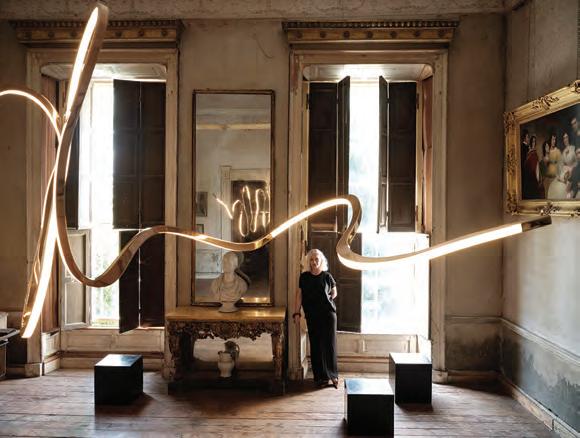
Asad Syrkett
A former editor at Curbed and writer and brand consultant who ran the New York operations for the Swedish brand Hem, Syrkett was hired as editor-in-chief of Elle Decor in September 2020. Since his first official issue as editor of the industry standard bearer in March 2021, Syrkett has given new life to established franchises such as the A-List, and introduced a new project devoted to sustainability, as well as being part of a committee to give out grants for the #BlackVisionairies collaboration between Instagram and the Brooklyn Museum.

Juan & Paloma Garrido Madrid-based siblings Juan and Paloma Garrido, who trained under the watchful eye of their silversmith father, have made waves in the design world with their statement pieces, ranging from candlesticks to coffee tables. Signature offerings include geometric masses of highly polished metal topped with glass, such as the “Aristas” table from 2019. They are represented in New York by Benoist Drut of Maison Gerard. maisongerard.com
Niamh Barry ↓ A self-confessed pyromaniac who picked up her first welding torch in 1991, Dublin-based lighting designer Niamh Barry has been charged with creating ethereal LED-powered bronze fixtures for residential and commercial spaces alike. Her personal goal: “To create pieces that emit a primal light that draws one in.” Given the shear physicality of welding, annealing, quenching, and hammering, Barry’s luminous output is but three dozen pieces a year. She is represented in New York by Benoist Drut of Maison Gerard. niamhbarry.com
“Anna Karlin’s luminous objects [are] sculpturesquasi-autonomouswithextraordinarycraft integrity.”
Glenn
70 AVENUE MAGAZINE | SEPTEMBER—OCTOBER 2022 SIRIANOCHRISTIANKERENS/COURTESYSARABRITTAIN;BECFLOWERS/COURTESYCHARLOT/PUTNAMHERVEBARRY;NIAMHSWANN/COURTESYNIGELKARLIN;ANNAWHITE/COURTESYCHRISYOVANOVITCH;PIERREVAILLANCOURT/COURTESYJEAN-PIERRE
Bec Brittain →
A protégé of one of the materfamilias of American lightning design, Lindsey Adelman, Brittain has been making a name for herself since launching her conscionable namesake brand in 2011. Her dramatic lighting fixtures, including the reconfigurable, award-winning SHY light, and site-specific installations at Patrick Parrish Gallery and The Future Perfect, among others, are all exclusively made in New York, while a healthy percentage of the company’s annual profits goes to support worthwhile initiatives such as National Bail Out. becbrittain.com
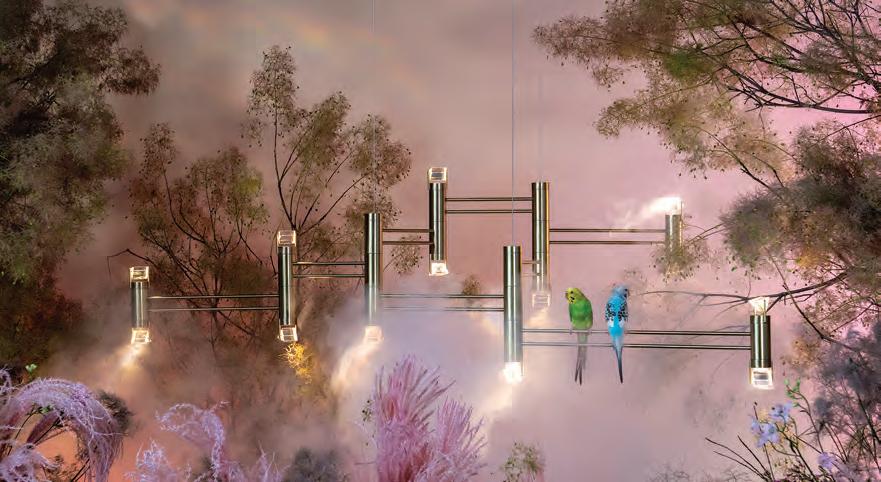 Christian Siriano
Christian Siriano
Christian Siriano ← Fashion favorite Christian Siriano grew up going to furniture showrooms with his mother. “I fell in love with the lines and architecture of furniture design,” he says. “I think a perfectly cut leg of a table or chair is a lot like a beautifully cut dress—it can be so sexy, chic and functional.” Siriano’s sculptural, modern furniture collection, which he launched last year, are definitely statement pieces. “They are not really something you are lounging on, watching TV,” he admits. The fashion world darling, who has dressed everyone from Jennifer Lopez to First Lady Michelle Obama, also runs Siriano Interiors, his design firm that has eight residential projects in the works and just completed the 15-room Inn of Chagrin in Chagrin Falls, Ohio. “I get sick of looking at clothes,” he says. “It’s nice to have another outlet to explore my ideas and design a fabulous chair or beautiful room.” christiansiriano.com, sirianointeriors.com
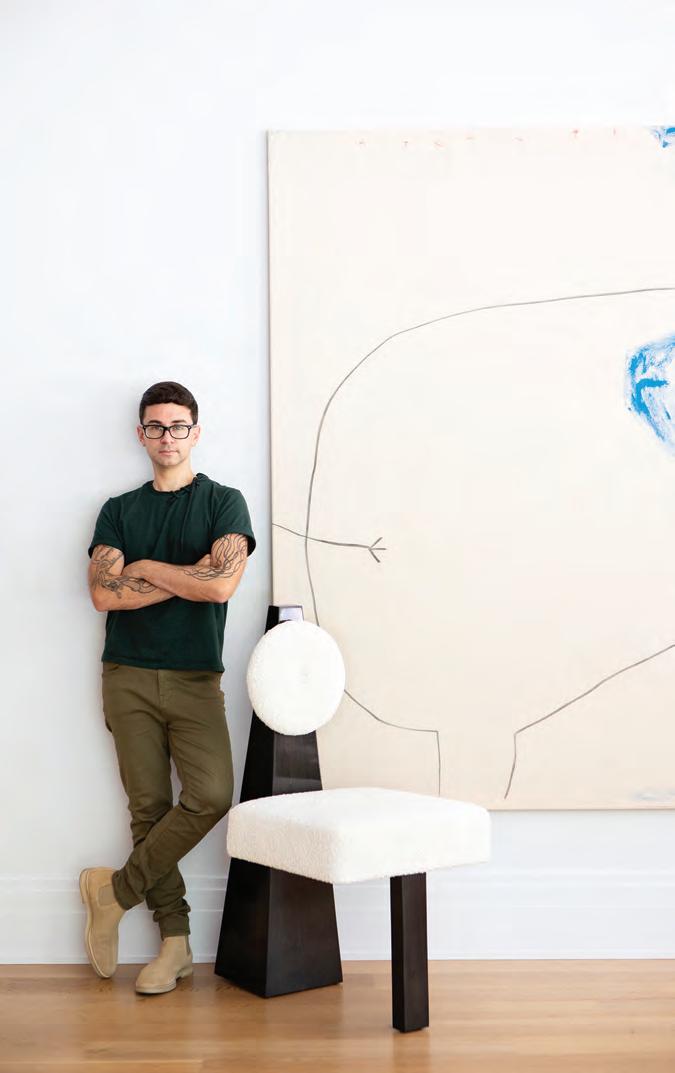
“I think a perfectly cut leg of a table or chair is a lot like a beautifully cut dress–it can be so sexy, chic and functional.”
SEPTEMBER—OCTOBER 2022 | AVENUE MAGAZINE 71
Tom Dixon

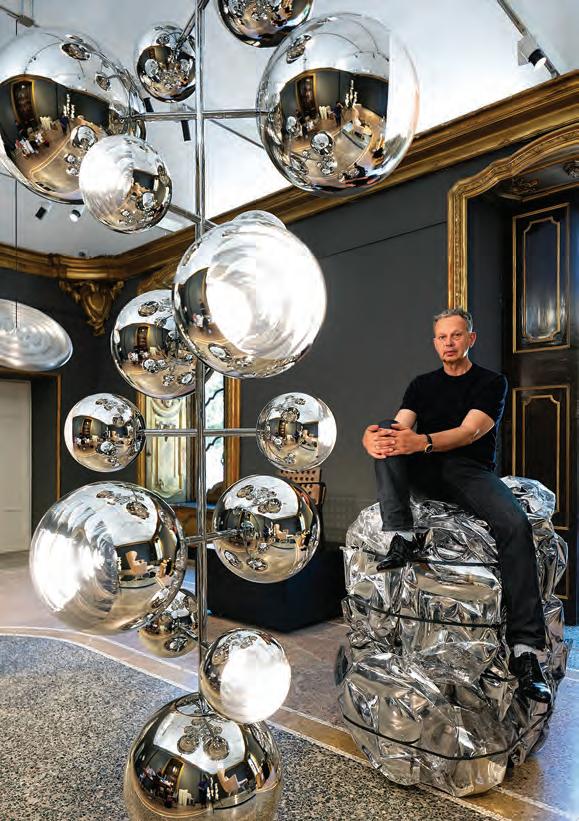
Tom Dixon ↓ “It is all about ‘future-proofing’ our product line,” says vaunted British designer Tom Dixon, who is currently celebrating his 20th year in the business. To mark the occasion, Dixon has released a host of new covetables crafted with the future in mind—towering turmeric-scented room-diffusers made of mycelium; generously scaled cork dining ensembles; and luminous bubbled chandeliers for which he is known, reimagined out of recycled materials. The collection, which was unveiled this June at the Salone del Mobile in Milan, will make its North American debut this coming November, just in time for New York’s Salon of Art + Design fair. Reflecting on his two decades of output, Dixon tells Avenue, “It’s about longevity and living in the future— exploring new materialities as we continue to make the very things that got us to where we are now.” In terms of his interiors projects, next on the drawing board is the design of a “collector-car-garage-meets-gentlemen’sclub” in Japan. tomdixon.net
Thomas O’Brien ↑ Thomas O’Brien is unabashed about “looking for beauty,” as he puts it, wherever he can find it, whether in his finely calibrated past-meets-present interiors for such clients as Giorgio Armani, Donna Karan, and his old boss, Ralph Lauren, or the destination shop Aero, which recently moved from SoHo to the New York Design Center. “I want to create a shop within the shop there,” the interiors and furnishings designer reports. “I have so much I’ve collected for years, beautiful things no matter what they are, and this is a way to share them.” aerostudios.com
Colin King
As handsome as he is talented, the former classically trained dancer and social media adept King is enjoying a tireless pas de deux with the design world, a stylist for brands such as West Elm, Anthropologie, and Roman and Williams Guild, and celebrated in publications such as Architectural Digest and T Magazine. In addition, the 34-year-old Columbus, Ohio native has a number of product lines including for Beni Rugs, of which he is artistic director-atlarge, as well as accessories for MENU. colinking.com
Thomas O’Brien
John Robshaw
John Robshaw got his start in textile design as a smuggler, he jokes. “I had a teacher at Pratt who did sequined dresses hand-loomed in India for all the big runway shows. He used to fly students over with the patterns, and when the dresses were done, we smuggled them back.” India is, of course, where Robshaw learned about block printing, a tradition manifest in every line of casually luxe bedding, pillows, and furnishings he introduces, including, this year, little pavilions inspired by Indian wedding and riding tents. johnrobshaw.com
“It’s about longevity and living in the future–exploring new materialities as we continue to make the very things that got us to where we are now.”
“I have so much I’ve collected for years, beautiful things no matter what they are, and this is a way to share them.”
O’BRIENTHOMASLAGNESE/COURTESYFRANCESCODIXON;TOMCOURTESY
ArtistsThe
PUTTINGVISIONARIESTHE ART INTO OBJETS
Daniel Arsham ↑
With a design practice that exists at the intersection of art, architecture, and performance, Daniel Arsham’s work reflects his varied life experience since graduating from Cooper Union nearly two decades ago. After designing sets for the Merce Cunningham Dance Company, he went on to launch the pioneering New York–based architecture firm, Snarkitecture, in 2007 with partner Alex Mustonen. Arsham has collaborated on a suite of high-profile projects with music producer Pharrell Williams and designer Hedi Slimane, as well as luxury brands Dior, Porsche, and Rimowa. His editioned lighting fixtures, fractured tables, and “rubble” couches, available through Friedman Benda, reflect Arsham’s fascination with archaeology, poetically combining a sense of the past, present, and future. friedmanbenda.com
Gabriel Hendifar
Though he split at the end of 2020 with his business and romantic partner Jeremy Anderson, who is now turning his hand to sculpture and ceramics, Apparatus cofounder and creative director Hendifar remains a name to watch and drop in chic lighting and design circles. His heady mix of intellectualism and sexy, retroinflected aesthetic that owes as much to Cardin and Halston as it does to the Wiener Werkstätte, was on full display at the May unveiling of his latest 1960s-inspired collection, “Act Four.” We eagerly await the next installment. apparatusstudio.com
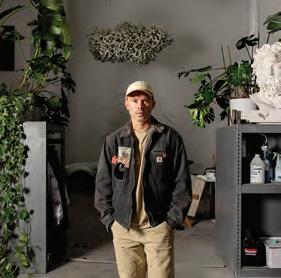
Chiara de Rege & Costanza Theodoli-Braschi ↓
“Neither of us wanted to put out another wallpaper line with the expected motifs,” says interior designer Chiara de Rege of Maison C, the decorative wallpaper firm she founded with fine artist Costanza Theodoli-Braschi. “We wanted something mural-like with depth. Ultimately we hope the paper feels like it’s always been there, as if painted onto the walls.” Theodoli-Braschi’s drawings are all meticulously drawn by hand riffing on myths, nature, fantasy and folklore such as a coven of naked women frolicking and a girl named “Parachute Pip” floating amongst the stars. “I use wallpaper for color and pattern in a room,” de Rege explains. “But it can also serve as a backdrop in a room, like art does.” Next up for Maison C: their dreamlike patterns will appear on textiles this fall. maisonc.com
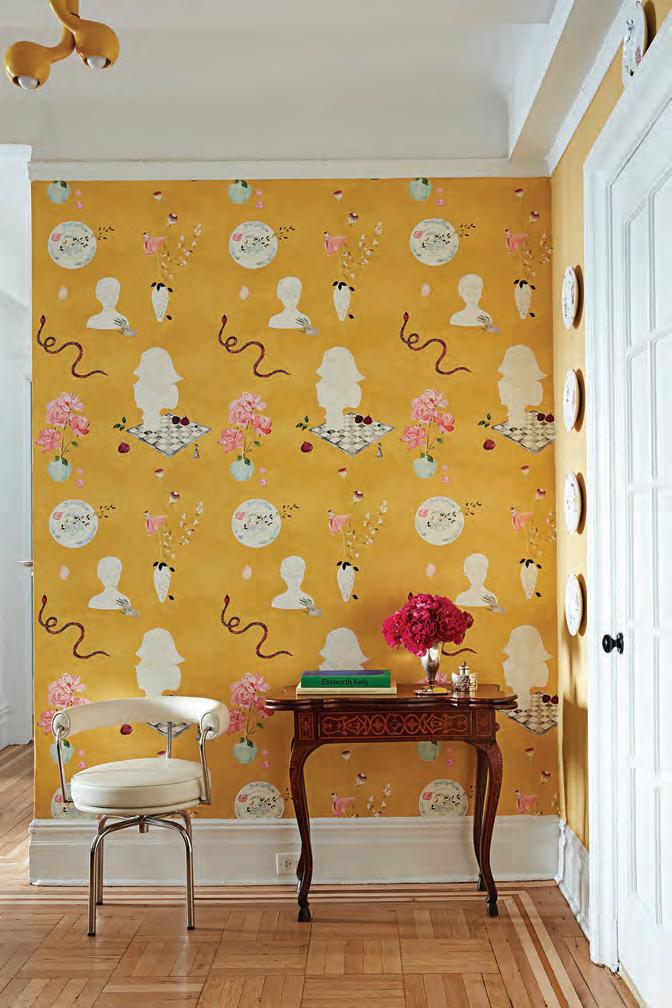
“Ultimately we hope the paper feels like it’s always been there, as if painted on to the walls.”
SEPTEMBER—OCTOBER 2022 | AVENUE MAGAZINE 73 THEODOLI-BRASCHICOSTANZA®EDECHIARAANTOLA/COURTESYJESSICAARSHAM;DANIELZICCARELLI/COURTESYGUILLAUME
Chiara de Rege
A graduate of the Rhode Island School of Design, and later the real-world school of Lindsey Adelman in New York, where he worked as design director of the Lafayette Street studio, Vermontraised freelance designer Zahn is a gun for hire for companies such as Artecnica and Teroforma. In addition, the Brooklyn-based designer has a line of hard-edged and beautifully crafted modern pendants, sconces, and floor lamps (to say nothing of furniture) sold through Roll & Hill, the Mercer Street showroom that, much like Flos and Artemide in Europe, collaborates with exciting local talents. karlzahn.com
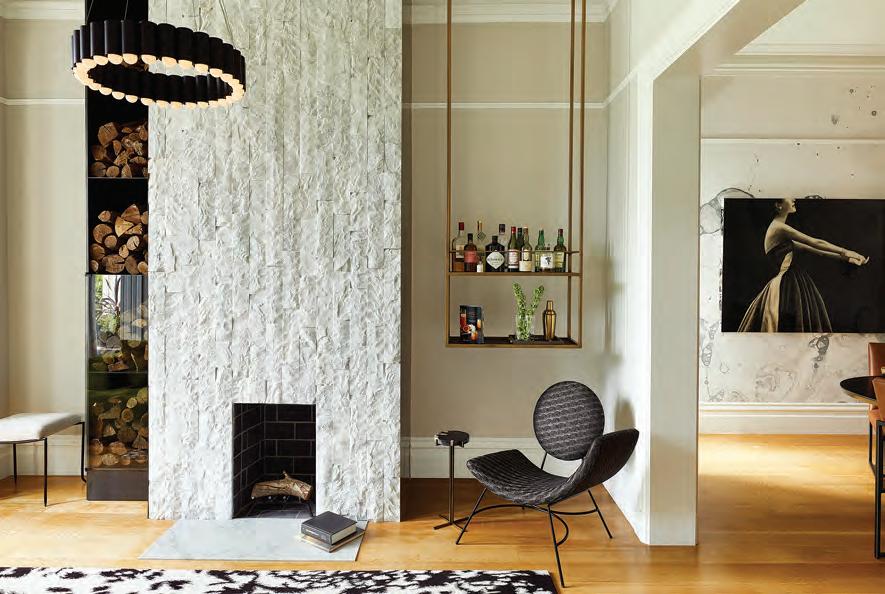
Liz Collins ↓
“Much like the tapestry artists of the Renaissance, Liz Collins has pushed fabric into the realm of contemporary art, on par with painting and sculpture,” says curator and critic Glenn Adamson of the Brooklyn–based, RISDtrained textile designer who first made a name for herself in knitwear. Collins has collaborated on home furnishings with brands such as Ligne Roset, Flavor Paper, and Harry Allan, and has just executed a major commission for Meta, which graces its new 700,000-square-foot office space in the Moynihan Train Station. lizcollins.com
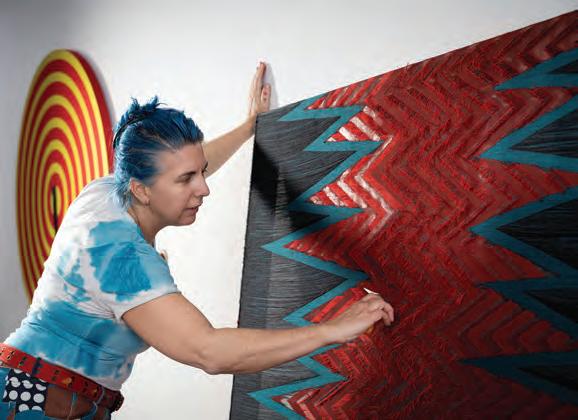
Jay Johnson
Jed Johnson Home, the luxury textile collection, is an outgrowth of the interior design firm Jed Johnson Associates and was started by Jed Johnson (who tragically died in the TWA flight 800 crash in 1996) and carried on by his twin brother, Jay, in 2006 to honor his legacy. Jed and Jay were habitués of Andy Warhol’s Factory, but JJA textiles are decidedly elegant and restrained, with nary a soup can or Marilyn Monroe face to be found. jedjohnson.com
Nicholas & Rachel Cope ↑ Wallpaper is never just wallpaper when it comes to Calico, the bespoke paper making studio founded nearly a decade ago by Rachel and Nicholas Cope. Instead, it is an immersive space of hypnotic cloud formations, or an ethereal night sky, or a tranquil panorama of trees, as with their “Forest of Reflection” wallpaper unveiled this June at the Salone del Mobile in Milan and part of their new Tableau collection. “It gives this feeling of the seasons changing,” Nicholas Cope says of the non-repeating pattern based on photographs taken in woodland in Karuizawa, Japan. Since creating their inaugural “Wabi” wallpaper in 2012, the couple and their New York–based team of 23 have collaborated with artists such as Faye Toogood and Lindsey Adelman. Their latest collection is “Scenic,” created in partnership with the architect-academic Elizabeth Roberts, who was inspired by 19th-century landscape murals and the Frederick Law Olmsted–designed Prospect Park. calicowallpaper.com
Tom Sachs
Art world star Tom Sachs, famous for his NASA, Hello Kitty, and Chanel guillotine bricolage sculptures, has always designed furniture, but now in a Warholian manner, he is bringing his DIY pieces to the masses. Made with his New York studio team (which he likens to a “teaching hospital or cult that worships plywood and an ethos of transparency”), Sachs’s pieces made out of plywood, resin, steel, and ceramic, feel purposely handmade and utilitarian, like the Crate Table, which is made with orange and white ConEd barriers. tomsachsfurniture.com
Flavor Paper
Brooklyn-based Flavor Paper creates wallpaper that flips the design world upside down. Think: Day-Glo and invisible inks, holographic patterns, and scratchand-sniff scented designs straight out of Willy Wonka’s Chocolate Factory. At their headquarters, known as the Flavor Lair, the collective produces wallpaper by hand-screened and digital printing, using water-based inks to be as green as possible. In 2013, Flavor Paper was granted the exclusive rights to Warhol’s masterpieces, which they bring to life in wallpaper. flavorpaper.com
Karl Zahn
“Liz Collins has pushed fabric into the realm of contemporary art, on par with painting and sculpture.”
Glenn Adamson
74 AVENUE MAGAZINE | SEPTEMBER—OCTOBER 2022 COLLINSLIZKRAMM/COURTESYJOEWALLPAPER;CALICOOFPICK/COURTESYAUBRIE
LegendsThe
DESIGNOFLUMINARIESARTAND
David Kleinberg
David Kleinberg Design Associates employs 20 full-time employees, all of whom are needed to tackle a heavy work load of projects around the globe. Kleinberg spent 16 years working for the venerable ParishHadley Associates before going out on his own in 1997, and is a decorator in the old-school mold, mixing the classic and the modern to create rooms that are both elegant and comfortable. “If I had to describe my rooms and compare them to people, they wouldn’t be the loudest ones you might first see when entering a crowded cocktail party,” Kleinberg says. “But they’d hopefully be the ones with whom you’d want to spend the most time.” dkda.com
Robert Couturier ↓
The Paris-born, New York–based designer and architect—whose meteoric career was launched in 1987 (when he was but 32) with an over-the-top commission from the late British financier Sir James Goldsmith—continues to make the world all the more fabulous for his A-List clients. Couturier is known for his uncanny ability to marry freshness and whimsy with a deep understanding of connoisseurship and tradition. He contends that first and foremost, a house must be a home for all who live within it.
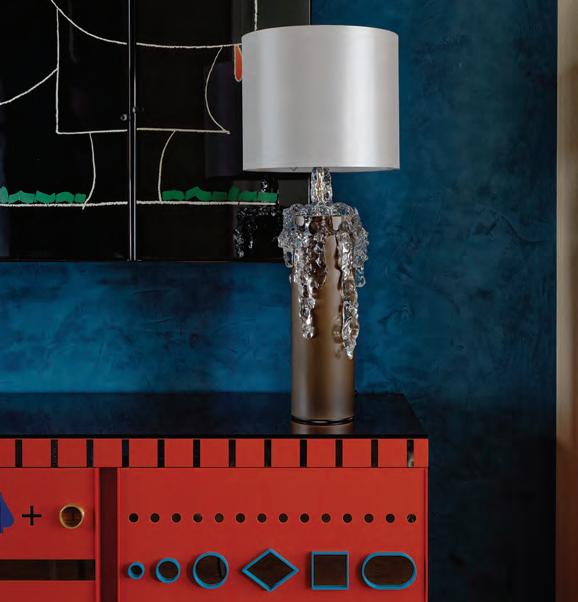
In his case: this includes husband Jeffrey Morgan and five spoiled Shih Tzus who consider every sitting surface to be their own, and have a new French château to call home. robertcouturier.com
David Kleinberg
Markham Roberts ↑ Interior master Markham Roberts sees American style as mixing periods and patterns to create the perfect room. After apprenticing with the late Mark Hampton, Roberts’s first commission on opening his own firm in 1997 was a big one: Charlotte Ford’s triplex apartment in a Candela building. “It was an enormous privilege to work on. Charlotte showed me what real generosity looks like, not just in philanthropy but in kindness to others.” His latest project is the gut renovation of a historic house in London’s Eaton Square. “The interiors will have the scale of a miniature palace,” Roberts reports, “and stylistically run from a modernist spa to a 1970s-inspired cinema bar. There will be a traditional and modern mix in the historically protected rooms where we have retained all the original boiserie.” markhamroberts.com
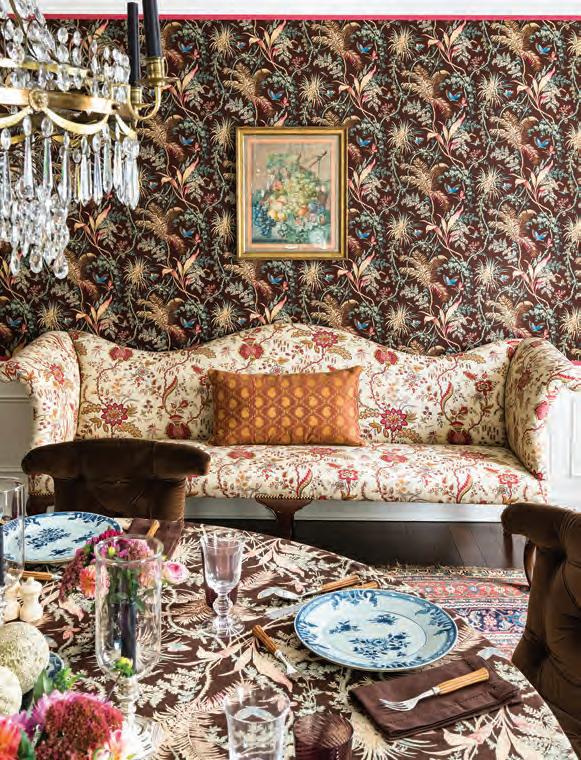
“If I had to compare my rooms to people, they wouldn’t be the loudest ones . . . But they’d hopefully be the ones with whom you’d want to spend the most time.”
SEPTEMBER—OCTOBER 2022 | AVENUE MAGAZINE 75 ROBERTSMARKHAMHANCOCK/COURTESYNELSONCOUTURIER;ROBERTHAMMOND/COURTESYFRANCIS
Alexa Hampton ↑ Since taking over her late father Mark Hampton’s design business in 1998, Alexa Hampton has become a force of her own in the interiors world, winning awards and working on projects around the globe. The author of two books, The Language of Interior Design (Potter Style, 2010) and Decorating in Detail (Potter Style, 2013), Hampton also has numerous product collaborations such as furniture for Theodore Alexander, fabrics and trims for Kravat, and hardware for SA Baxter, to name a few. alexahampton.com
“The current movement to classic decorating with good bones and great quality is a timely trend that will stay with us for many years,” says Jeffrey Bilhuber, who founded his design firm in 1984 and has done homes for countless boldface clients including Anna Wintour, Iman and David Bowie, Elsa Peretti, and Mariska Hargitay. Bilhuber offers a few design tips: “Never overbuild, always overdecorate. Great style, compelling art and comfortable furniture are portable and will invariably fit into the next place one calls home,” he opines. “Marble floors and heavy moldings are fixed and usually end up in the next owner’s dumpster.” jeffreybilhuberllc.com

Suzanne Rheinstein ↓ Los Angeles–based interior designer and author Suzanne Rheinstein’s motto is “Have fewer things, but better things.” For decades, Rheinstein’s LA home shop Hollyhock was the go-to spot for furniture and objects that were decidedly un-California. “I love beautifully made furniture which isn’t necessarily grand, but slightly eccentric with legs perhaps a bit too skinny for Louis XVI or a bit out of proportion but still pleasing.”
Growing up in New Orleans, Rheinstein fell in love with the city’s unique architecture. “Everything I saw from the car window as a child, I loved.” Rheinstein’s style is timeless and elegant and never trendy. “I think you should slowly collect good pieces, perhaps one a year. If you do that, after ten years you can change from minimalism to chock full of furniture.” suzannerheinstein.com
Interior designer Tom Scheerer is known for transforming the Lyford Cay Club in the Bahamas into one of the chicest private clubs on the planet. The painted tall white palm trees on chocolate brown walls in the Club House drawing room became instantly iconic, not to say much copied, while the pink tented ceiling in the Cabana Bar beckons for a modern day Slim Aarons photo shoot. Scheerer started his architectural and design firm in Manhattan in 1985. tomscheerer.com
Steven Gambrel
S.R. Gambrel is Steven Gambrel’s sought-after design firm specializing in both residential and commercial projects on a grand scale. Gambrel also has a custom lighting line with Urban Electric Company, an accessories collection with the Lacquer Company, and in 2014, he launched a custom furniture website called Dering Hall. Gambrel has published two books: Time and Place (Abrams, 2012) and Perspective (Rizzoli, 2018). srgambrel.com
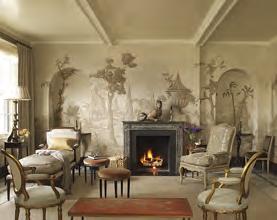 Jeffrey Bilhuber
Tom Scheerer
Jeffrey Bilhuber
Tom Scheerer
“Never overbuild, always overdecorate.”
Jeffrey Bilhuber
76 AVENUE MAGAZINE | SEPTEMBER—OCTOBER 2022 RHEINSTEINSUZANNEESTERSOHN/COURTESYPIETERHAMPTON;ALEXAKARLISCH/COURTESYSTEPHEN
Sheila Bridges ↑ Not every designer, no matter how celebrated, can lay claim to an iconic design. But Sheila Bridge’s “Harlem Toile de Jouy” became an instant classic when it first appeared in 2006, and it’s still fomenting a creative stir today. On top of her recent collaboration with the Met for its new Before Yesterday We Could Fly: An Afrofuturist Period Room, the decorated bone china line Bridges launched with Wedgwood is almost sold out and she is about to introduce another, a Jasperware nod to Harlem Toile. “People are looking at it as legacy china,” Bridges says proudly, “the way I look at the Limoges that belonged to my grandmother, and my parents’ more contemporary china that I grew up with.” sheilabridges.com
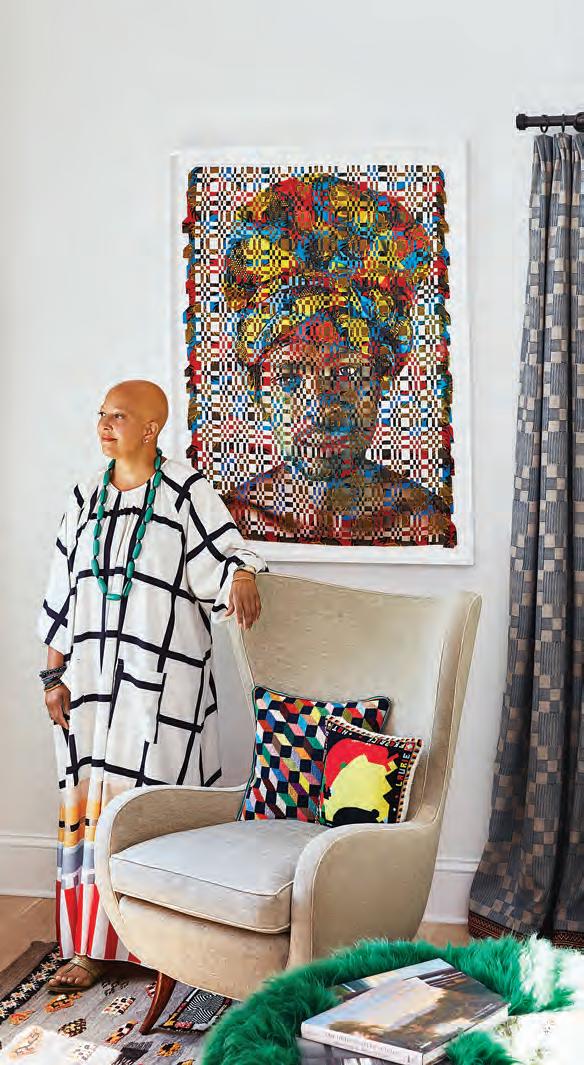 Sheila Bridges
Sheila Bridges
Ashley Whittaker ↓ “I feel like the city is really having a resurgence now,” says Ashley Whittaker of her forays down from her base in Millbrook. “For a long time it felt like families were leaving New York, and now they’re coming back and there’s tremendous apartment turnover—doing those apartments makes me very happy.” For the big New York comeback, Whittaker won’t let her clients look to her design past, either. “I’m trying to push everyone out of their comfort zone,” she explains. “I just told a client, ‘Rather than chinoiserie, let’s blow up the scale, and let’s look at a Japanese painting style that’s more modern, but rooted in history.’ We went for a metallic background.” If you think that’s radical, what about this? Whittaker is set to redesign Millbrook’s fraying Cottonwood Motel. “I don’t know what it’s going to be called,” she laughs. “But anything that’s not as quintessentially Schitt’s Creek as it is now.”
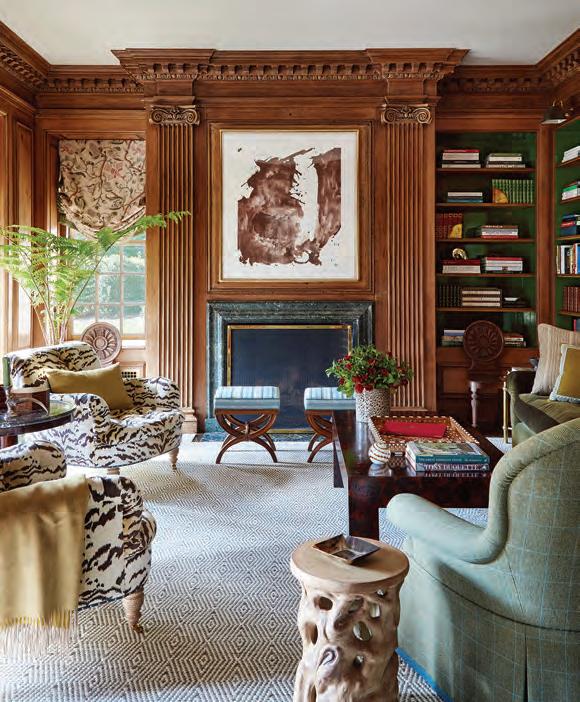
“Peopleashleywhittakerdesign.comarelooking
at my line as legacy china, the way I look at the Limoges that belonged to my grandmother.”
SEPTEMBER—OCTOBER 2022 | AVENUE MAGAZINE 77 WHITTAKERASHLEYLOOF/COURTESYTHOMASFRANCES/OTTO;FRANK
THE BRITISH MEN’S FOOTWEAR BRAND HARRYS LONDON HAS A NEW LOOK, A NEW FEEL, AND A NEW MAN AT THE HELM: GRAEME FIDLER. HE TALKS TO ARIA DARCELLA ABOUT HIS VISION FOR THE WELL-SHOD MODERN MAN
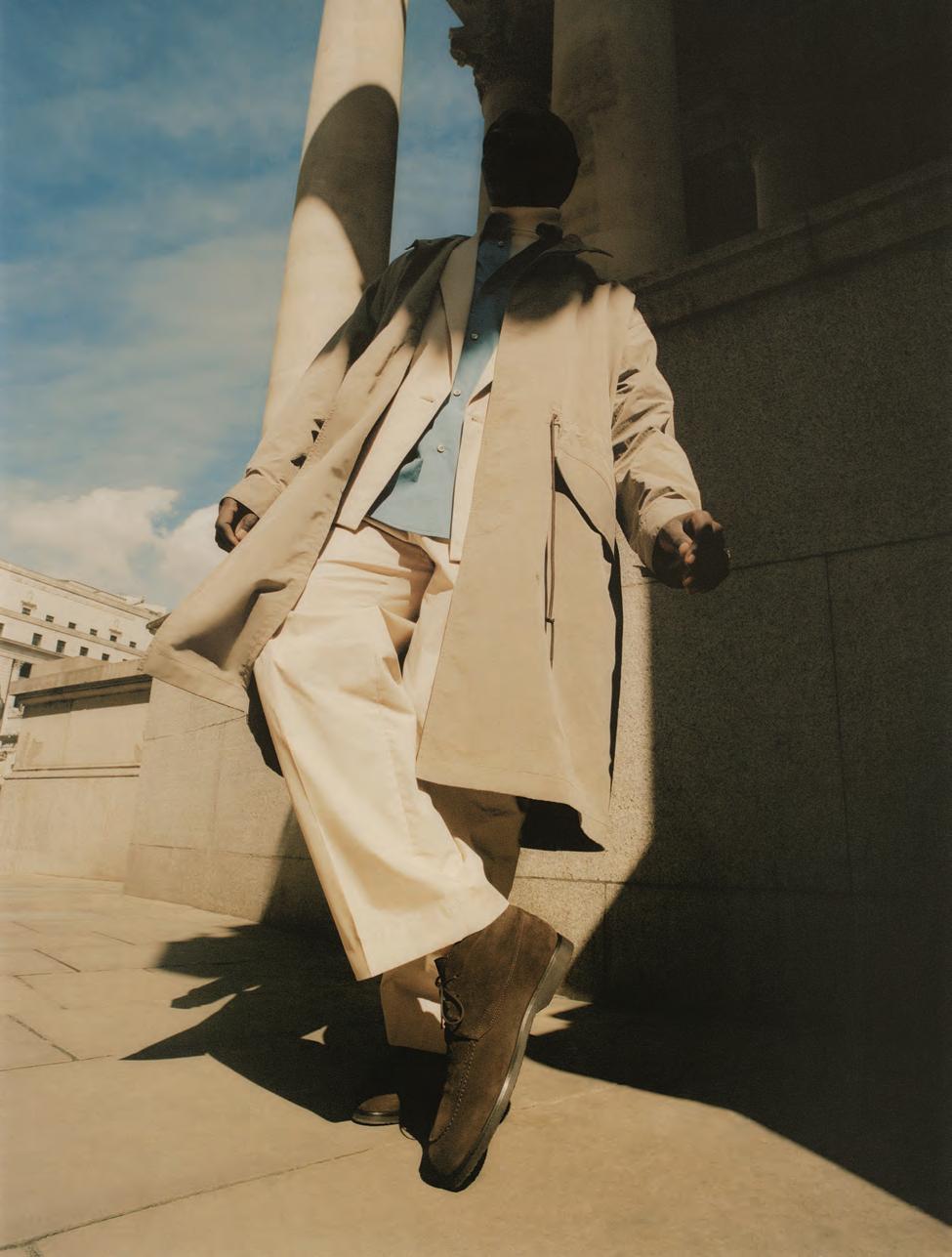
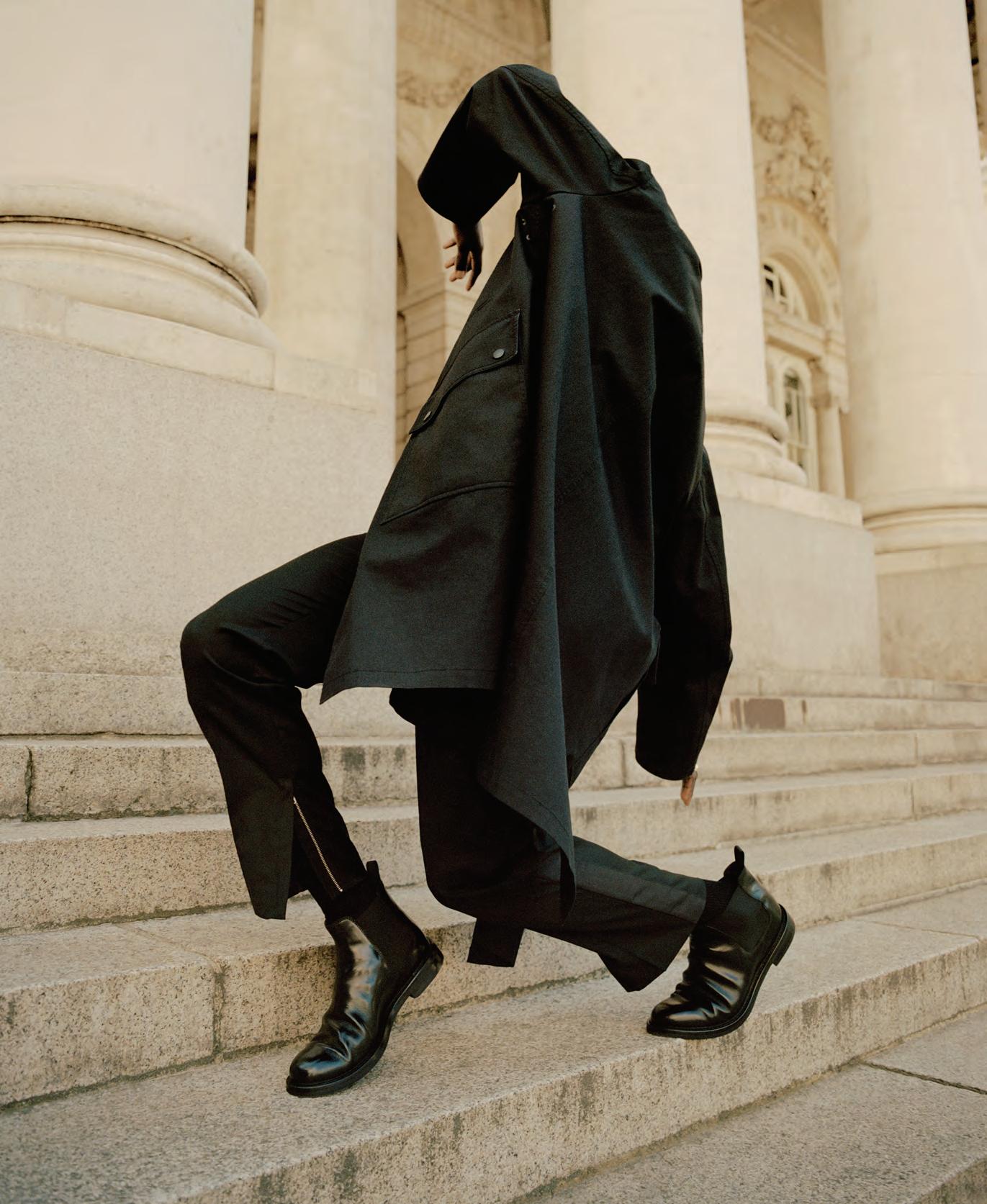 WELL-HEELED The Ridge, a chic Chelsea boot in calf leather. Facing page: the Warrick, a lace-up in an earthy suede.
WELL-HEELED The Ridge, a chic Chelsea boot in calf leather. Facing page: the Warrick, a lace-up in an earthy suede.
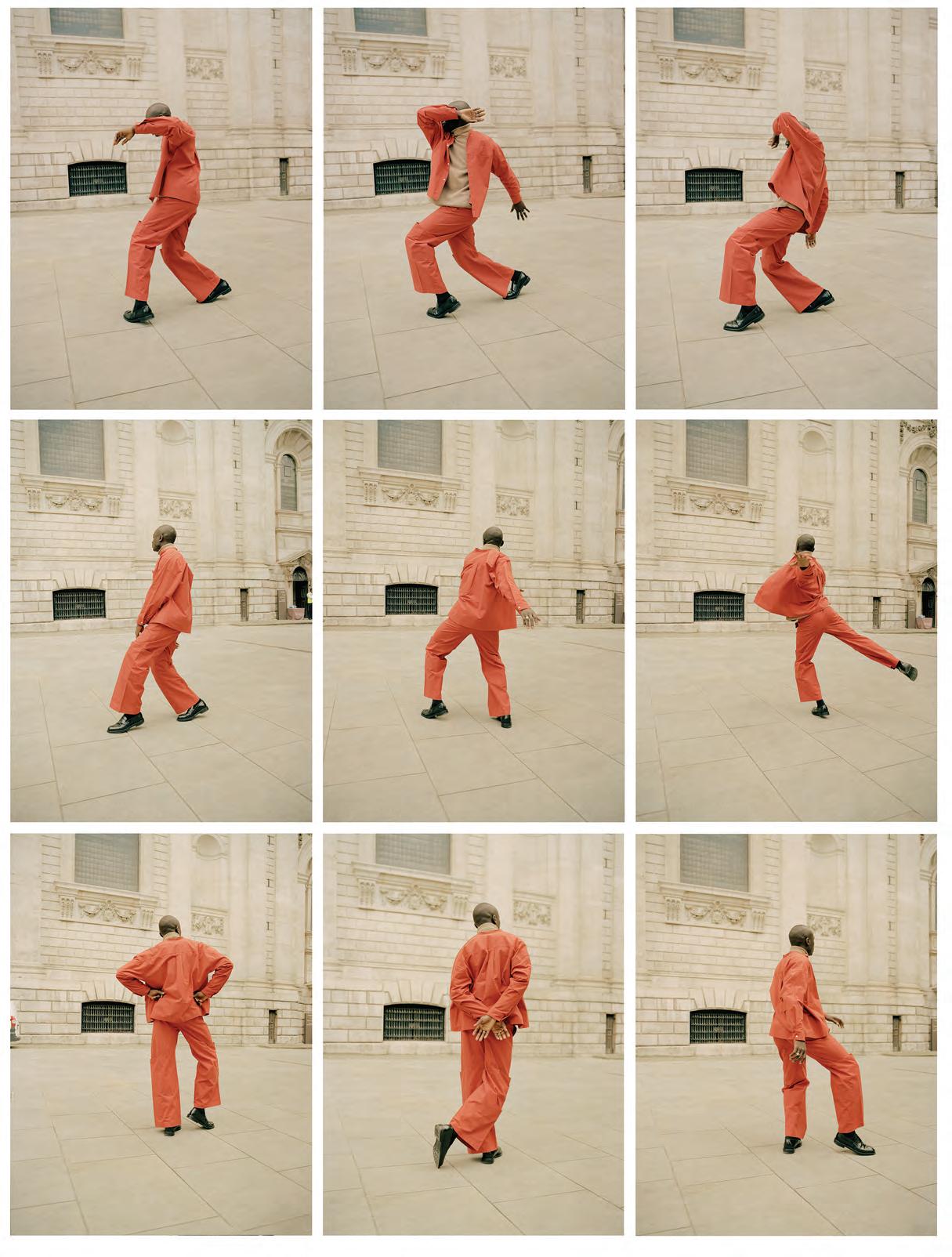
80 AVENUE MAGAZINE | SEPTEMBER—OCTOBER 2022 GEORGEBOOBYPHOTOGRAPHFIDLER:GRAEMESCHNEIDER;JORDANSTYLINGPICZO;BYPHOTOGRAPHYCAMPAIGN,AW22
Contrary to received wisdom, being fashionable and being practical are not mutually exclusive. It’s something Graeme Fidler, the new consulting creative director of Harrys London, has ad vocated for years.
The 48-year-old British designer—who has a personal archive of nearly 100 pieces of utili tarian fashion, ranging from military wear to fly fishing vests—almost decided against fashion school because he thought it would be at odds with his view of clothing. “Quite frankly, at the time when I applied [to Northumbria University], I did think it might be quite cool to be designing clothes that were more about function than fash ion,” says Fidler, on a Zoom call from his home studio in England. “Little did I know that in this world you can actually do both at once. You can actually make functional clothing and accessories that are Now,fashionable.”he’sbringing this design philosophy to Harrys London, in what can only be described as a stealth modernization of the luxury men’s foot wear and accessories company.
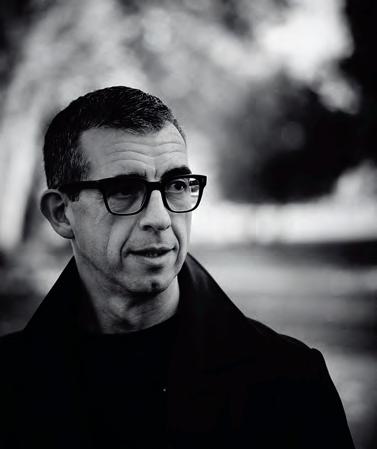
Harrys of London was founded in 2001 as a contemporary men’s shoe brand and quickly ap peared in major department stores across Britain and America. By 2008 it had its own stand-alone store in London, and in 2017 Charles S. Cohen, who also owns Avenue, purchased the label, fur ther expanding its reach. (A stand-alone New York location was opened at 463 Park Avenue.) He hired Fidler in late 2021, and the designer began con sulting with the brand almost immediately before

jumping full-time into his position, immediately rebranding it to Harrys London.
“It’s really important to me as a designer and as a creative director to ensure that whatever the values the business was developed on, those val ues are still very prominent,” he says, stressing his intention “isn’t a reinvention and a relaunch, [or] a complete overhaul. It’s quite the opposite: it’s an evolution.”Fidlerand his team identified Harrys’ hall marks—comfort, craftsmanship, and style—but quickly determined that the collection was too narrow. They expanded the accessories line and introduced new shoe styles, among them a hi-rise sneaker with a Primaloft interior for insulation,
HITTING PAVEMENT From top: the utilitarian-inspired Cliff boot in deerskin, and a leather tote bag; the man behind the drawing board, designer Graeme Fidler. Facing page: the Amble loafer in action.
“THIS ISN’T A REINVENTION, A RELAUNCH, [OR] A COMPLETE OVERHAUL. IT’S QUITE THE OPPOSITE: IT’S AN EVOLUTION.”
SEPTEMBER—OCTOBER 2022 | AVENUE MAGAZINE 81
and climbing sneakers outfitted with Vibram rubber soles. Fidler lights up when describing the clever ways in which he and his team have subtly worked performance gear into the refined prod ucts. The material has also been added to clas sic Harrys styles like Chelsea boots and Derbys, while the uppers of other sneaker styles have been crafted with merino cotton. Classic Harrys styles such as kudu loafers, and chukka boots also still have their place in the collection.
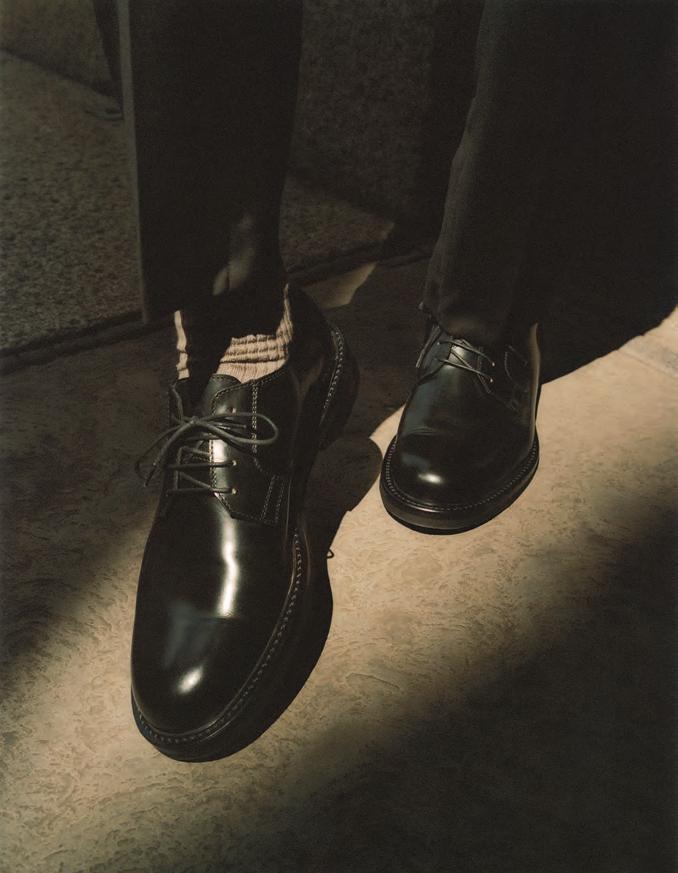
His approach so far has been to design with movement in mind—to create shoes for a cus tomer on the go, someone who isn’t necessarily confined to a desk. “I see responsible design being [about creating] a product that is durable, that is long-lasting, that can stand up to the elements,” he explains. “The engineered comfort, the craftsman ship follows. But [those elements] combined, you start to get a really quite interesting shoe. And if we don’t have all of those come together on any shoe we design, it’s not going to be in the collection.”
It’s worth noting that while Fidler has put an effort into retaining the brand’s legacy of comfort, he has put an equal emphasis on style. If anything, it’s an aspect he couldn’t possibly ignore, having been honing his sartorial eye since he was a teen ager. Living in Newcastle in the north of England, he would take the five-hour train ride down to London every weekend once his paycheck came in to hang out and party with friends. It was the early ’90s, and they found themselves at the cen ter of a global cultural hub, where music, art, and fashion
“Thecollided.partand parcel of that was we had to look the business,” he says. The focal point of London’s nightlife at the time was the burgeon ing rave scene, which played out across storied clubs like Bagley’s, Velvet Rooms, known for its legendary DJs, and The Cross, a venue for which entry would be granted or denied depending on your outfit. “You had to look cool,” Fidler recalls. “If we didn’t have the right clothes on then that was you rendered useless. My passion was this lifestyle, this culture. And consequently it meant that I knew that in my life I was going to be doing something in fashion, art, or music, because it was all one world for me.”
This merging of creative arenas has expanded how Fidler views the world. His design inspirations often come from people, places, or things others would normally overlook. “I might get my color palette just from walking around the Guggenheim for an hour. Not from the art! It might just be from kids that have come on a little reconnaissance with their school and their uniform colors are amazing,” he muses. “I go yes. I love that burgundy, that yel low, and then that turquoise together.” He contin ues, “That sort of stuff, the fashion relevance does come from anywhere.”
For the designer of a footwear brand, Fidler’s creative references are both esoteric and unex pected. The Autumn ’22 collection for Harrys was
informed by the word “climb”—as in, moving up ward, and rising out of Covid lockdowns, he ex plains—while the Spring/Summer ’23 collection was inspired by the lives and work of the Bauhaus educators and designers Anni and Josef Albers. For Autumn ’24, he took notes from the German industrial designer Dieter Rams.
“Every design is generally heavily influenced by something else, [but] not necessarily by the same [product category],” he says, holding up a Montblanc pen. “I doubt that pen was heavily in fluenced by another pen.
“We as designers and creatives must always be aware of our market,” he continues. “But never look at other shoes as forms of inspiration. Always look at other things…Always find your own angle of approach.”
So far, Fidler’s updates have been well re ceived by the fashion world. During the brand’s return to the annual Italian menswear trade show Pitti Uomo in Florence this past June (the first one since the Covid lockdowns), the brand gar nered praise from editors as well as the buyers for major department stores such as Bergdorf Good man, Selfridges, Harrods, and Nordstrom, among others. In fact, Harrys London hasn’t been this buzzy since it first launched. Fidler’s conviction that practical and fanciful can be one and the same is clearly succeeding.
HEART AND SOLE The Evans derby and the Amble loafer, both in calf leather.
82 AVENUE MAGAZINE | SEPTEMBER—OCTOBER 2022

GrahamCathyinFull
THE NEW YORK HOSTESS AND FLORAL DESIGNER FIND S INSPIRATION IN SOME UNLIKELY PLACES
ON THE EVE OF HER NEW BOOK, CELIA MCGEE FOLLOWS HER ON THE HUNT FOR FLOWERS AND FLOWING CONVERSATIONS


Don’t disparage dahlias around Cathy Graham. She’s so fond of the plump and spiky rounds of color that, on her last trip to the West Coast, the long-standing Upper East Sider gave some thought to moving to Seattle. “Most dahlias come from the Northwest,” she explains. Now that fall has arrived in New York, as a hostess and flower designer she plans to use their color wheel of shades throughout the arrangements she creates for the book parties, birthday celebrations, weddings, and intimate get-togethers of her many friends and family, and the elegant, conversation-filled dinner parties she throws at her William Hodgins–designed townhouse just off Fifth Avenue. You can be sure she’ll mix them not only with other flowers of the season but also its fruits and even vegetables—green figs split in half, say—along with wild grasses, seed pods, curled-up roots, lots of different herbs, and balletic branches. Anything might catch her fancy, she says, to “give things a twist.”
At least once a week Graham starts her day at 4:30 a.m., when she heads down to the Flower District to snare the best possible selections, bringing them home to condition hundreds at a sitting in a meticulous process that will keep them fresh and bright. Those are her working hours, when there’s no music, no podcasts, just a silence she likens to nearHermeditation.dinners,not so much. At several small tables, she regularly surrounds herself with gregarious company, including Lincoln Center Theater artistic director André Bishop, for mer Hearst chief content officer Joanna Coles, New York magazine design editor Wendy Goodman, New York Times style writer Guy Trebay, noted ceramicist Christopher Spitzmiller, and her best friend and mentor, Deeda Blair (herself no slouch at flower arranging).
Detailed in her new book, Full Bloom, out in November from Vendome Press, Graham’s flowery approach to style and entertaining has deep roots in history, art history, and her own life. “I’ve hung quince and lemons from the ceiling to imitate Dutch still-life painting,” says Graham, who graduated from the Rhode Island School of Design with a bachelor’s degree in fine art before going on to work with the legendary party planner Robert Isabell, and serves on several cultural boards. She has also shown herself under the influence of old black-and-white Hollywood screen gems—there was the time she drew fanciful little faces on paper and pasted them in the centers of zinnias—and she’s designed two lines of flower-sprinkled plates for Spitzmiller. His Clove Brook Farm, in Millbrook, “is another one of my great flower sources,” Graham says, “and I’m designing the flowers for his wedding this fall,” to Anthony Bellomo, owner of the town’s chic garden shop Orangerie.
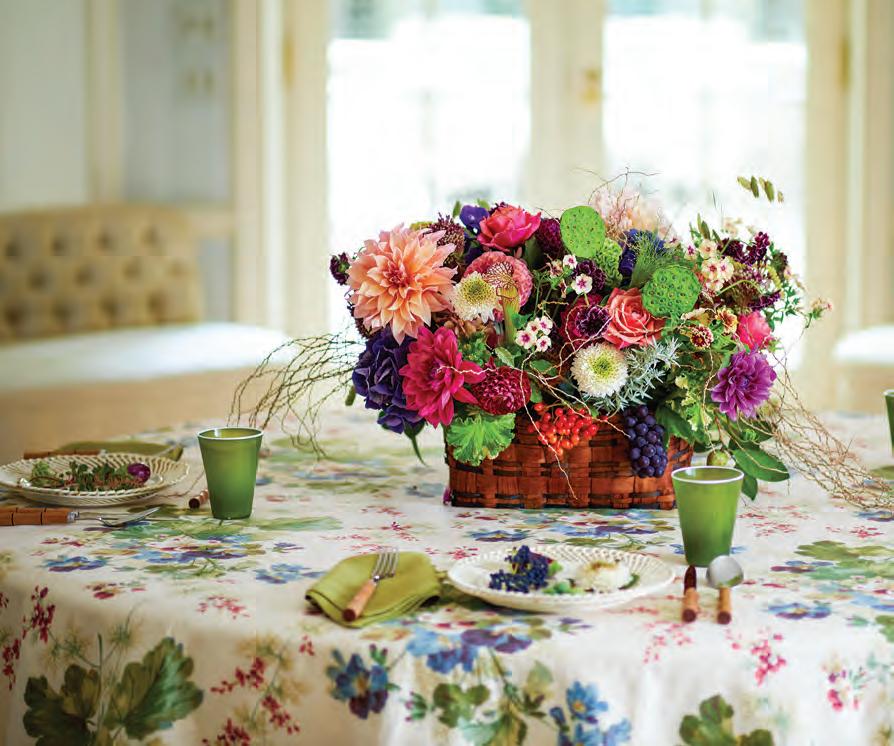
Graham’s flowery approach to style and entertaining has deep roots in history, art history and her own life.
86 AVENUE MAGAZINE | SEPTEMBER—OCTOBER 2022 LIVING
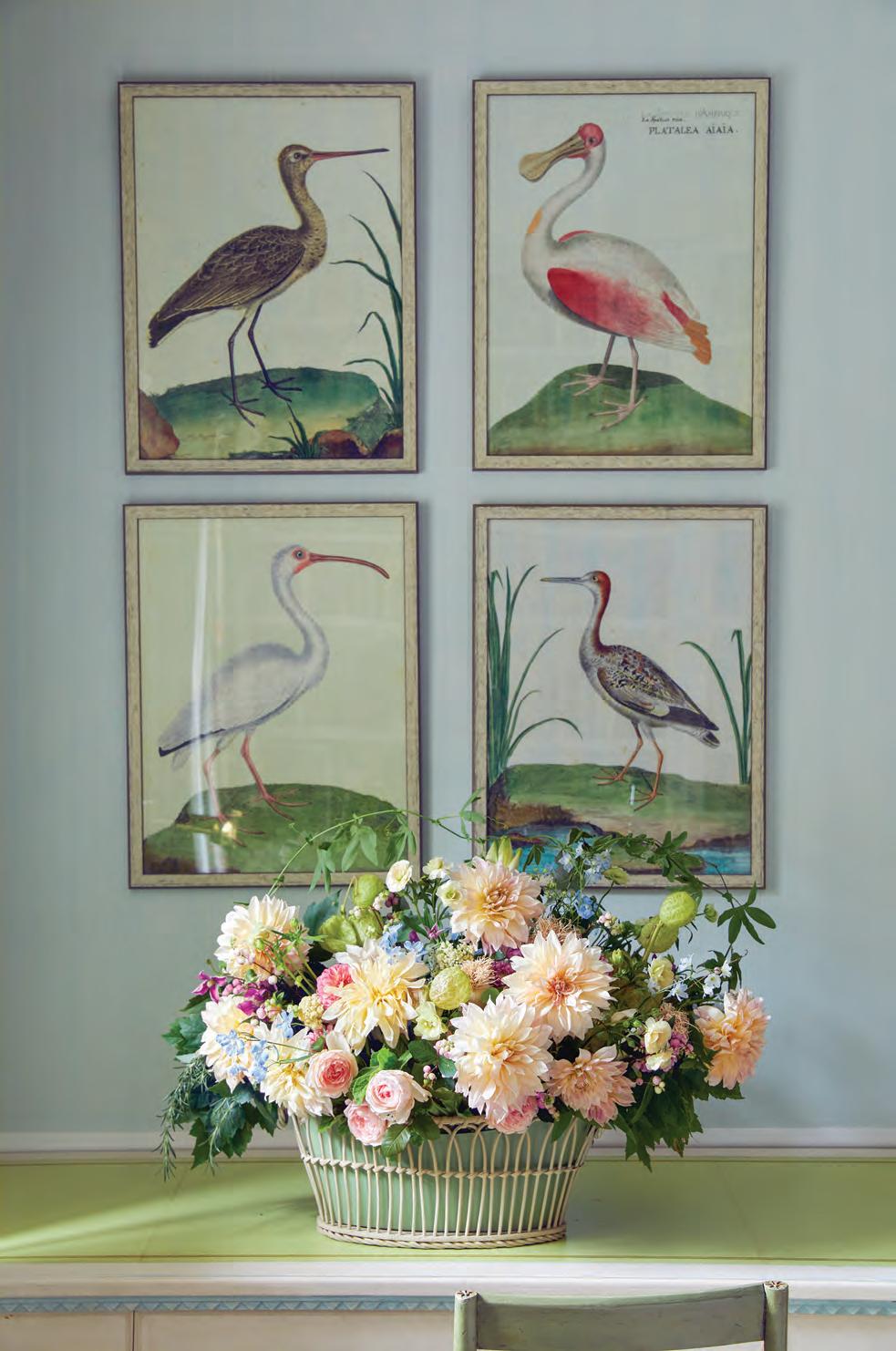
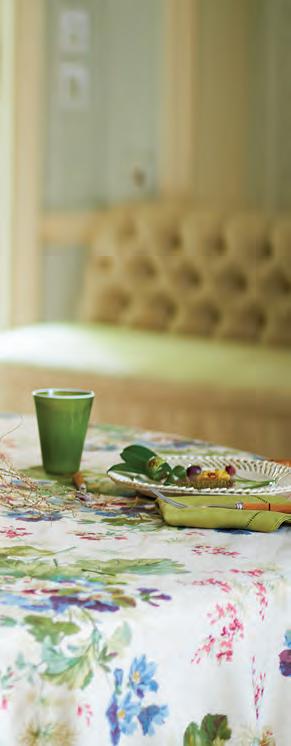
SEPTEMBER—OCTOBER 2022 | AVENUE MAGAZINE 87
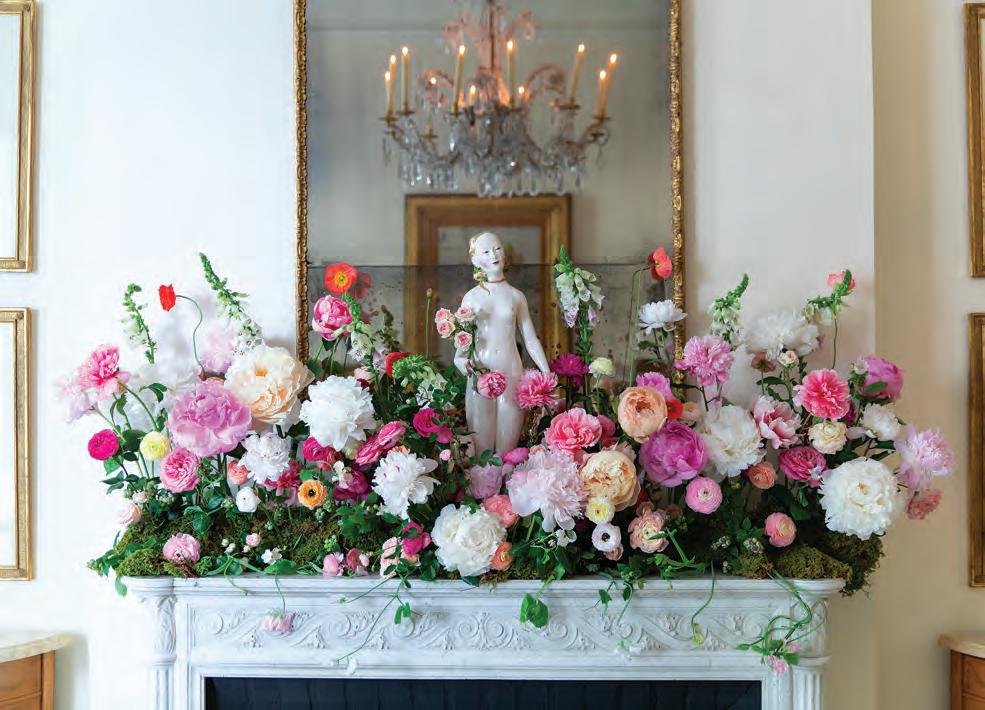

 HOME TURF: Graham’s townhouse just off Fifth Avenue is never without flowers.
HOME TURF: Graham’s townhouse just off Fifth Avenue is never without flowers.
88 AVENUE MAGAZINE | SEPTEMBER—OCTOBER 2022
LIVING ACEVEDOMELANIE
The inextricable connection between flowers and en tertaining for her, Graham says in all frankness, came with the unexpected end of her marriage in 2015. Since 2017, she’s been divorced from Stephen Graham, youngest son of the Washington Post’s Katharine Graham and a former the atrical producer currently on the literature faculty at Bard College. They have a daughter, Juliet, 25, an aspiring screen writer, and a son, Thomas, soon to graduate from Bard.
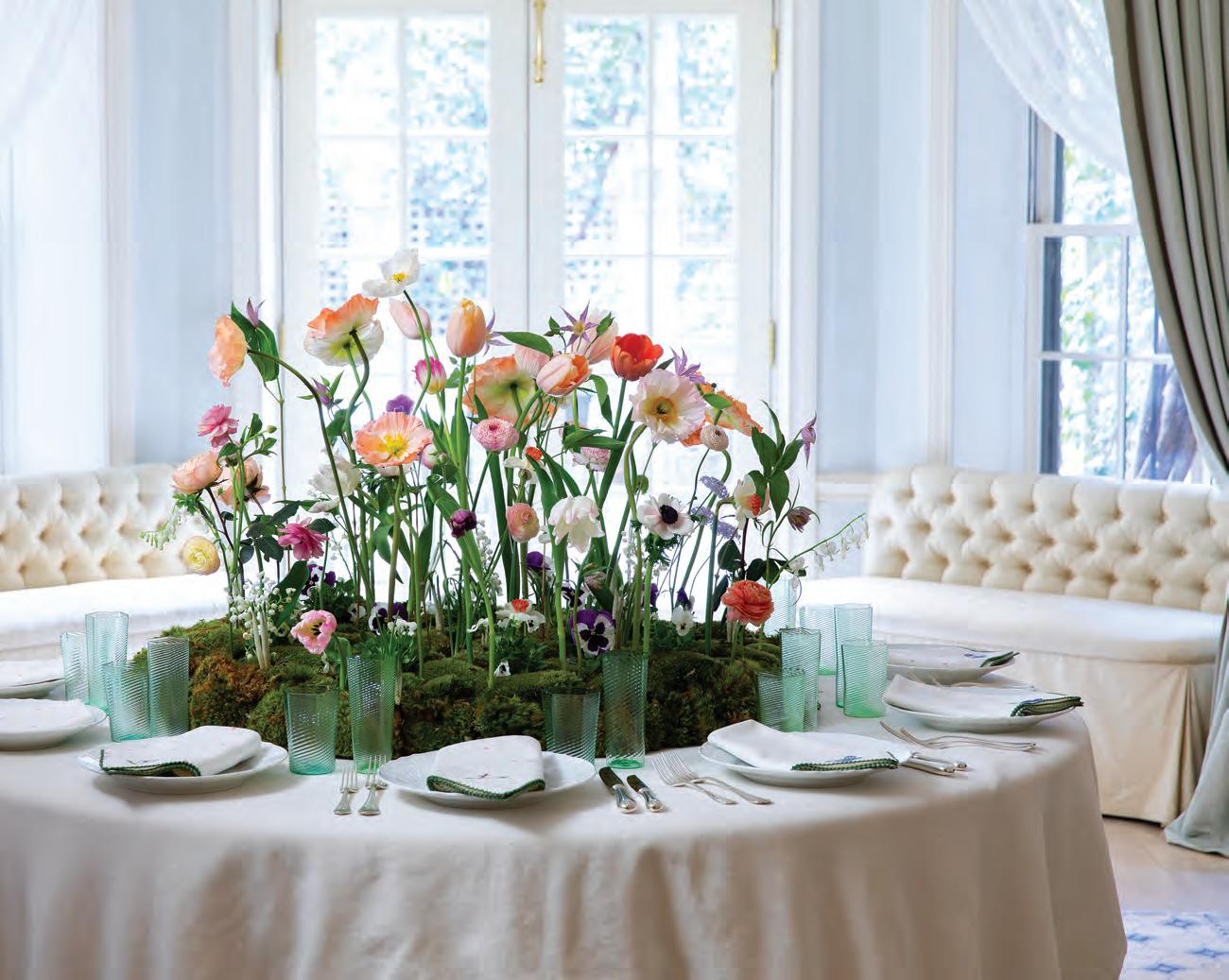
“Stephen suddenly just said it was over,” she says. “He never said why. It was a horrible shock, but two months later I had a book contract”—for her first book, Second Bloom—“and a new lease on life.” Nonetheless, “I realized that the divorcee isn’t exactly number one on anyone’s guest list,” she says. “So I decided to start throwing dinner parties myself. While Stephen and I were married, he was always the clever and amusing one, and I was happy to arrange my flowers and stay in the background. I was shy. I had to change all that.” But, she adds, “Stephen and I didn’t do that thing where you divide up your friends.”
As Full Bloom shows, the quick-witted and fun-loving Graham isn’t above dressing in a mossy, elfin at-home out fit that has her looking like one of Cicely Mary Barker’s 1920s Flower Fairies illustrations, or, entranced by two friends’ 20s movie-colony house in the Hollywood Hills, producing imag inative tablescapes for an al fresco luncheon. The hosts were CAA honcho Brian Siberell and his wife, Patty Dryden, an artist.
This fall, she is plotting another getaway to Los Angeles to visit Juliet, who recently moved to Santa Monica, and Graham thinks Thomas, who wants to become a film editor, isn’t far behind. “My favorite place to stay in Los Angeles is The Beverly Hills Hotel, in the Paul Revere Williams Suite.” Her father, a de veloper and architect, “always used to tell me about Williams,” the prolific Black architect who designed homes, set amidst sprawling grounds and gardens, for some of the biggest names of Hollywood’s golden era. Could it be that Graham has some California gardening in her sites? Remember the dahlias.
Photographs by Quentin Bacon from Cathy B. Graham: Full Bloom by Cathy B. Graham, published by Vendome, © 2022
SEPTEMBER—OCTOBER 2022 | AVENUE MAGAZINE 89
Todd Kingston Plummer recalls John Wojtowicz and the Brooklyn bank heist that inspired the film Dog Day Afternoon
r avesend, Brooklyn, August 22, 1972 . Around 3 p.m. on a quiet afternoon, at the peak of the midday heat, three men armed with shotguns walked into a Chase Manhattan Bank on Avenue P. The armed rob bery that transpired over the next 14 hours would go on to become the stuff of New York City leg end—and inspire the Sidney Lumet–directed Dog Day Afternoon, one of the great films of the ’70s and one of Al Pacino’s most iconic roles.

But before becoming known as one of the in famous bank robbers that day, John Wojtowicz’s
story began as most New York City stories do: humbly. The son of a Polish father and an Italian-American mother, Wojtowicz grew up in Brooklyn before serving in the U.S. Army during the Vietnam War. Upon returning to New York from Vietnam in 1967, Wojtowicz married a young woman from Brooklyn, Carmen Bifulco. They had two children before separating in 1969, which is when his story starts to become interesting.
At the turn of the ’70s, Wojtowicz began spending time in the gay bars of Greenwich Village, in spots such as Danny’s, the Stonewall Inn, and all the classic gay haunts along Christopher Street. This was New York before AIDS, a time when the city’s gay community first
 CRIME OF PASSION Above, from left: Penelope Allen and Al Pacino (playing John Wojtowicz) in Dog Day Afternoon; Wojtowicz leaves the F.B.I. building en route to his hearing in Brooklyn in August 1972; opposite page: Elizabeth Eden photographed in New York City in October 1974.
CRIME OF PASSION Above, from left: Penelope Allen and Al Pacino (playing John Wojtowicz) in Dog Day Afternoon; Wojtowicz leaves the F.B.I. building en route to his hearing in Brooklyn in August 1972; opposite page: Elizabeth Eden photographed in New York City in October 1974.
90 AVENUE MAGAZINE | SEPTEMBER—OCTOBER 2022 IMAGESARCHIVE/GETTYNEWSDAILYNYAGENTS:ANDWOJTOWICZJOHNIMAGES;BROS./GETTYWARNERSTILL:FILMG
NOTORIOUS NEW YORKERS
RomanceBad
began to flourish. During this period, he met and fell in love with the woman who would change the course of his life: Elizabeth Eden. The two met at the San Gennaro Festival in 1971, and a fast and furious romance ensued, with the pair holding a wedding ceremony within months.
A year later, Wojtowicz would rob the Chase Manhattan Bank in Gravesend. Clearly, all was not as it seemed. Because of the critical and commer cial success of Dog Day Afternoon on its release in 1975, the world saw Wojtowicz’s bank robbery as a delicious scandal. Fourteen hours! Armed with shotguns! Taking hostages! But what was his mo tivation? How did he go from Vietnam vet to bank robber in just a few short years?
In an interview conducted while in pris on some five and a half years after his arrest, Wojtowicz revealed that the bank robbery was motivated by his love for Eden. She, a transgender woman, needed funds for a gender confirmation surgery, and he, hopelessly in love, would do any thing to get the cash for her.
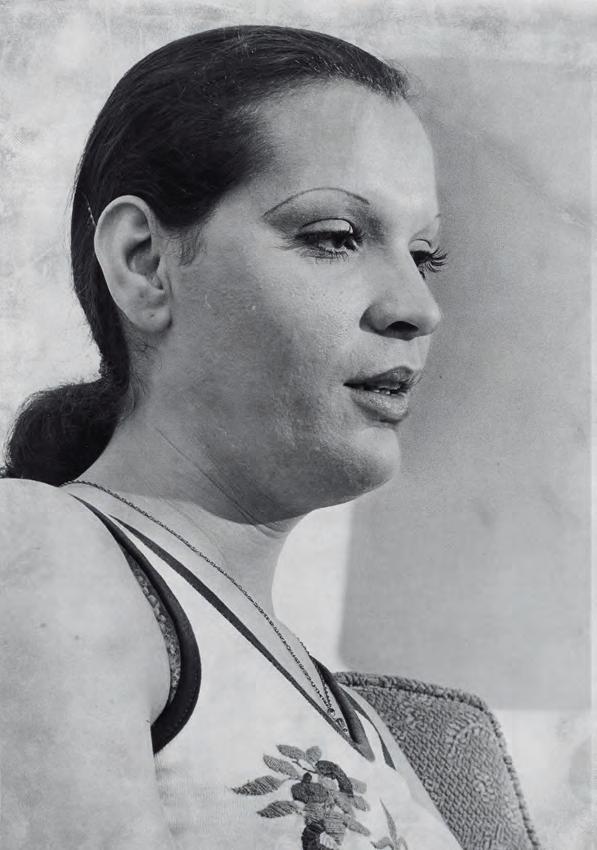
Watching the interview footage today, it’s problematic by many standards—Wojtowicz misgenders Eden’s pronouns, calls her by her pre-transition birth name, and says that af ter a failed suicide attempt she was “put in the nuthouse.” This is a salt of the earth guy from Brooklyn in the ’70s, in the earliest days of the gay liberation movement. Getting pronouns right wasn’t even part of the collective consciousness at that point.
But if you listen to Wojtowicz, it’s clear that the bank robbery was motivated by the purest, most tragic of emotions: love. “I loved him, and he kept trying to kill himself because he wasn’t happy be ing a man,” says Wojtowicz. “I tried to get him the money for his birthday on the 19th and I didn’t have the money, so the next day he took an over dose and he died a clinical death, then they put him in the nuthouse on Monday. I saw him in the nuthouse on Monday, and then Tuesday I went to rob the bank.”
The interviewer asks Wojtowicz about what it is about Eden that he finds so compelling, and he admits that Carmen, his first (and at the time, still legal) wife, would always ask him that question. “I say, I don’t know, because if I knew why I loved him then maybe I could stop loving him,” says Wojtowicz. “It’s just him.”
So, by the time Wojtowicz entered the Chase Manhattan Bank in Gravesend on August 22, guns blazing, he was ready to risk it all for the woman he loved. But in a Shakespearean twist of fate, he soon discovered that the armored truck that picked up the branch’s cash each day had arrived earlier, and there was only a scant $38,000 on hand—a mere fraction of the windfall with which he had hoped to make off that day.
Now, with seven bank employees held hostage and the building surrounded by police, Wojtowicz was running out of options. He submitted a list of demands to the police, one of which was that his beloved Eden would be released from Kings County Hospital and brought into the bank in exchange for one of the hostages. The police brought Eden from the hospital, but did not al low her close enough to kiss Wojtowicz. His grand
romantic plot was slipping through his fingers like a cigarette on Christopher Street. Wojtowicz ended up being arrested and serving five years in prison before slipping into obscurity. He eventu ally moved back into his mother’s home, ended up on welfare, and passed away from cancer in 2006 at the age of 60.
In a way, Wojtowicz is something of a tragic hero. He fought valiantly, although illegally, in the name of love, yet never got his happy ending. And despite all the buzz generated by Dog Day Afternoon , which went on to win an Academy Award for Best Original Screenplay, Wojtowicz would be slowly written out of history. But just as we can revisit his use of pronouns to refer to his transgender lover, and just as we can also think
critically about the use of terms like “nuthouse,” we can also recast his 1972 bank robbery in a new light as well: that of gay liberation. At a time when LGBTQ people lived on the fringes of New York society, just three years after the infamous Stonewall riots when the police raided a West Village gay bar, Wojtowicz performed a radical act in the name of queer love. Looking back, he was, in a way, ahead of his time.
“I consider myself a romantic,” said Wojtowicz in The Dog , a 2014 documentary directed by Allison Berg and Frank Keraudren that examined his life before, during, and after the robbery. “If I had a dream and in that dream I saw everything that happened, would I still go out and do it? You’re damn right I’d still go out and do it.”
IT’S CLEAR THAT THE BANK R OBBERY WAS MOTIVED BY THE PUREST, MOST TRAGIC OF EMOTIONS: LOVE.
SEPTEMBER—OCTOBER 2022 | AVENUE MAGAZINE 91 IMAGESKOENIGES/NEWSDAY/GETTYR.THOMAS
MAKE ’EM LAUGH
Chanel presented the Good+Foundation Night of Comedy at a private residence in East Hampton. The evening featured a seated dinner and stand-up performances.
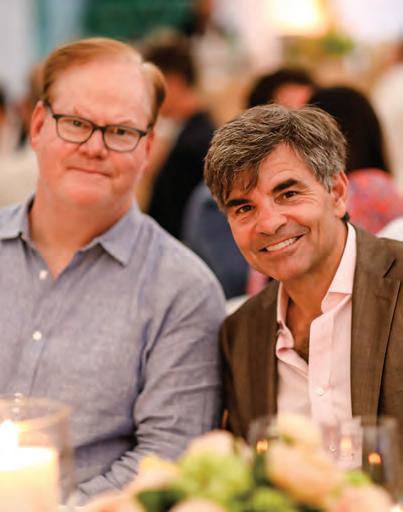
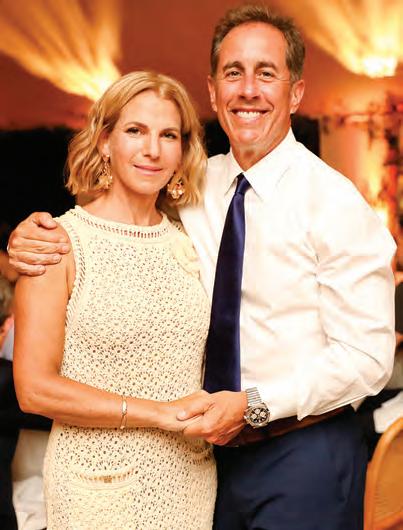
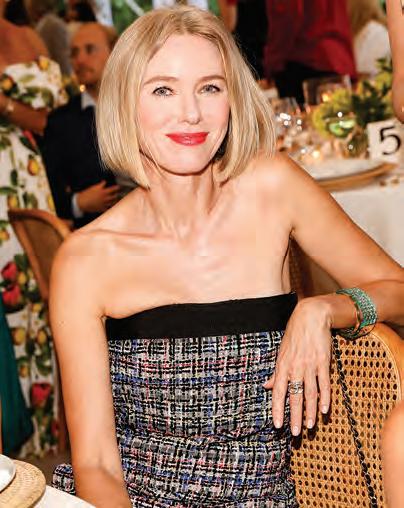
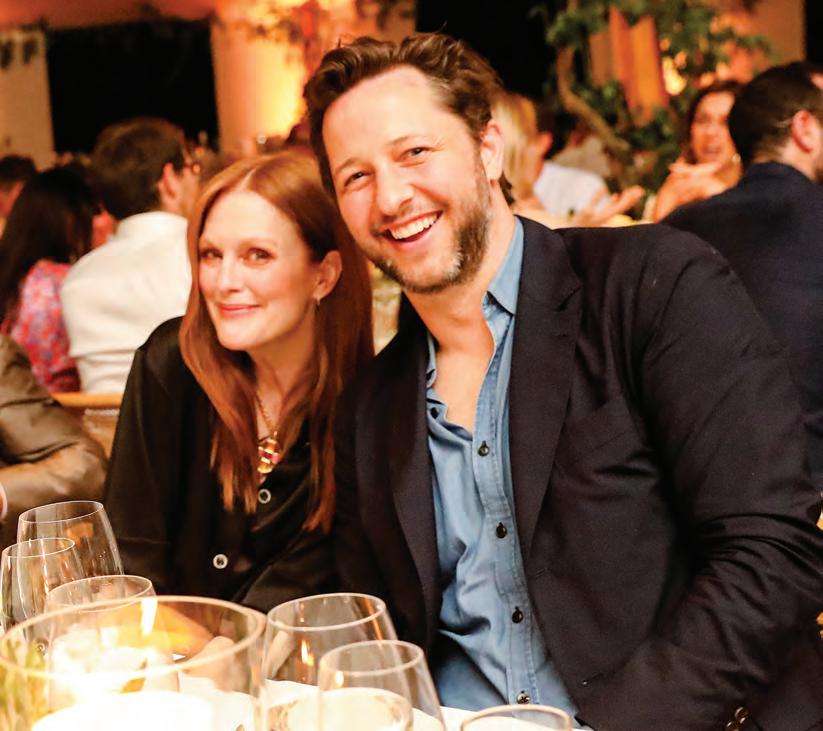 Julianne Moore and Derek Blasberg
Jessica and Jerry Seinfeld
Naomi Watts
Jim Gaffigan and George Stephanopoulos
Julianne Moore and Derek Blasberg
Jessica and Jerry Seinfeld
Naomi Watts
Jim Gaffigan and George Stephanopoulos
ON THE
BFABYPHOTOS
SITTING PRETTY
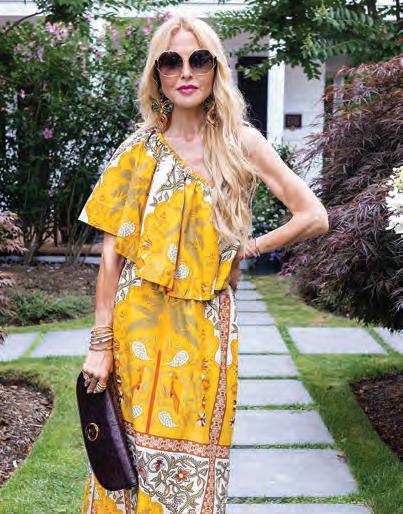

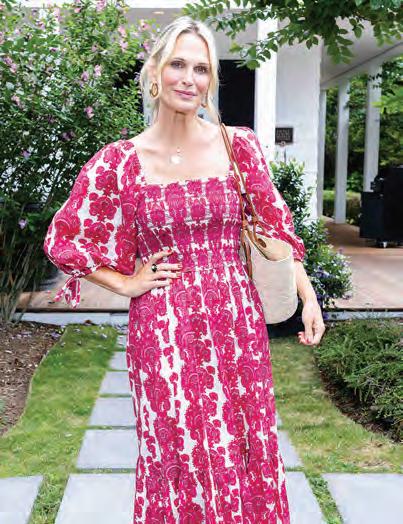

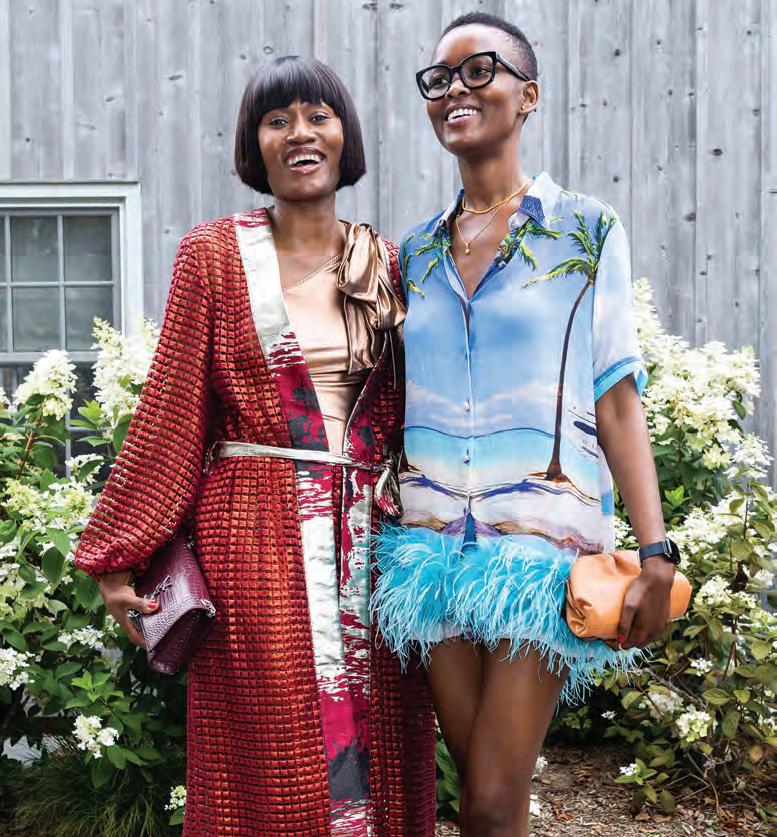
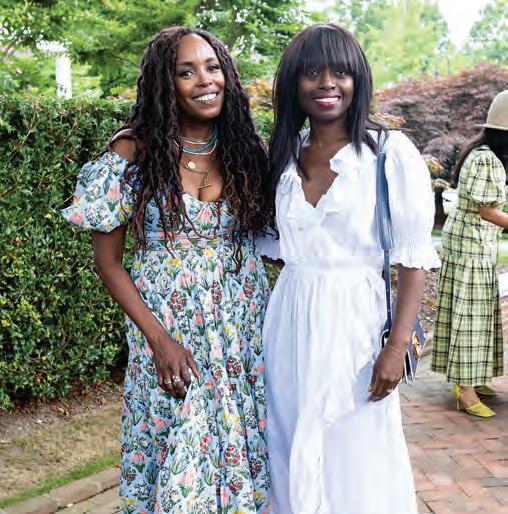 The e-commerce beauty platform Thirteen Lune held a lunch celebrating the beauty of inclusion at Topping Rose House in Bridgehampton.
Nyakio Grieco and Dee Poku
Rosemary Kokuhilwa and Flaviana Matata
Gucci Westman
Rachel Zoe
Blake Newby
Molly Sims
The e-commerce beauty platform Thirteen Lune held a lunch celebrating the beauty of inclusion at Topping Rose House in Bridgehampton.
Nyakio Grieco and Dee Poku
Rosemary Kokuhilwa and Flaviana Matata
Gucci Westman
Rachel Zoe
Blake Newby
Molly Sims
BFABYPHOTOS
PARTY STREAMERS


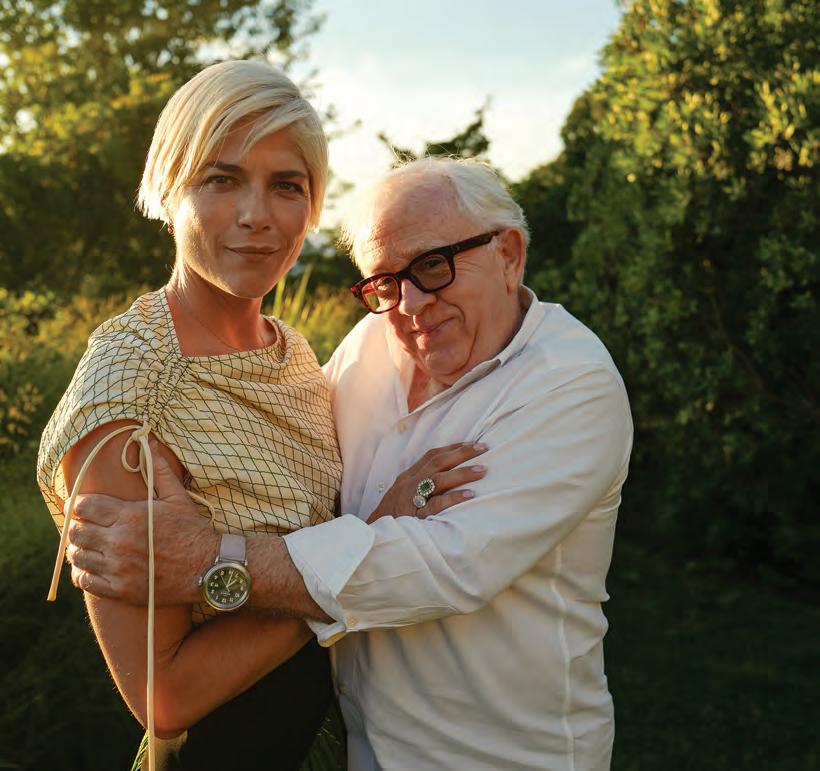
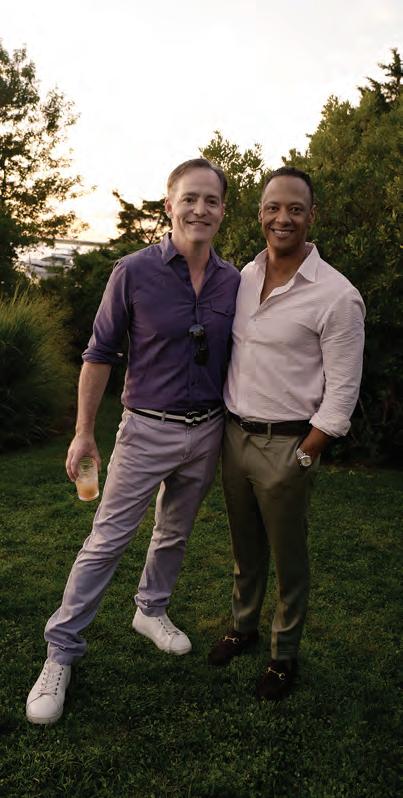
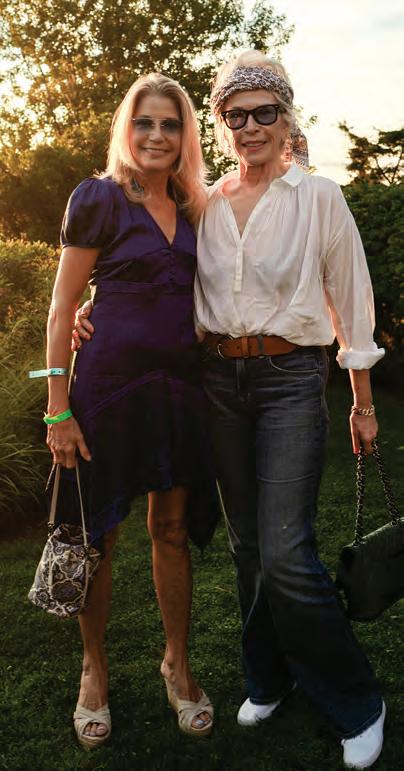 Netflix and The Cinema Society held a special screening of the show Uncoupled at a private residence in the Hamptons.
Candace Bushnell and Sara Colleton
Selma Blair and Leslie Jordan
John McGinn and Emerson Brooks
Serena and Shawn Levy
Jihae
Netflix and The Cinema Society held a special screening of the show Uncoupled at a private residence in the Hamptons.
Candace Bushnell and Sara Colleton
Selma Blair and Leslie Jordan
John McGinn and Emerson Brooks
Serena and Shawn Levy
Jihae
BFABYPHOTOS
PAGE TURNERS


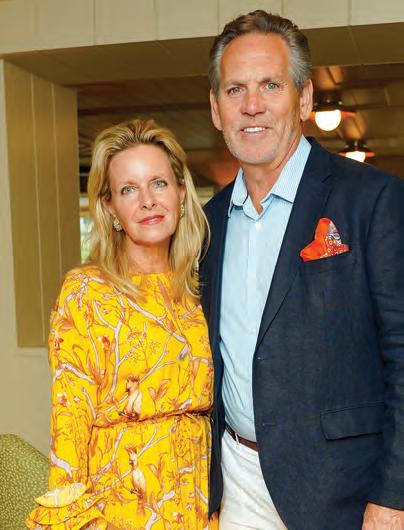

 James Reginato celebrated the launch of his book, Growing Up Getty: The Story of America’s Most Unconventional Dynasty (Simon & Schuster), with a cocktail party at Canoe Place Inn & Cottages, which was recently renovated by Gregg and Mitchell Rechler.
ZANNISEANBYPHOTOS
Scott Williams with Jamee and Peter Gregory
Lucy Sykes and Bob Morris
Susan and Richard Meier
Michael Staples, Anne White, and Jim Berkrot
Dr. Samantha Boardman, Aby
Rosen, and James Reginato
James Reginato celebrated the launch of his book, Growing Up Getty: The Story of America’s Most Unconventional Dynasty (Simon & Schuster), with a cocktail party at Canoe Place Inn & Cottages, which was recently renovated by Gregg and Mitchell Rechler.
ZANNISEANBYPHOTOS
Scott Williams with Jamee and Peter Gregory
Lucy Sykes and Bob Morris
Susan and Richard Meier
Michael Staples, Anne White, and Jim Berkrot
Dr. Samantha Boardman, Aby
Rosen, and James Reginato

“I think the Electric Chartreuse in Eggshell was a mistake.”
96 AVENUE MAGAZINE | SEPTEMBER—OCTOBER 2022 SOCIAL SKILLS ILLUSTRATION BY DONALD ROBERTSON
6 Acre Estate In Dering Harbor



Shelter Island. The charming seaside village of Dering Harbor is home to a new Shelter Island offering providing endless possibilities in an estate setting. An articulate collaboration between Barnes Coy Architects and Edmund D Hollander Landscape Design has resulted in Oriole Farm sprawling across more than 6 park-like acres. Once home to an arboretum owned by famed horticulturist Alice Fiske, the expansive property is anchored by an intriguing stucco and stone residence which incorporates over 7,500 square feet on three levels of finely articulated living space. The intimate entry ushers all over beautifully finished floors to include the living room under beamed ceilings with fireplace and intimate dining alcove, fully equipped kitchen, offering both center island seating and a breakfast table overlooking the grounds, opens to its own family room with fireplace. A paneled den with fireplace and private terrace awaits just outside the ground floor master suite offering large sleeping chamber, luxurious bath with steam shower, walk-in closet and access to the grounds. Four additional bedroom suites., including one with sleep porch and an office complete the second floor. The finished lower level offers media room with fireplace, gym/recreational area. wine cellar, laundry room and a full bath. Multiple covered patios adorn the outside of the house highlighted by a large covered porch with fireplace, all overlooking the manicured lawns and lush plantings, ringed by more than a quarter mile of century-old beech hedges., the 55-ft Gunite pool & spa with a pergola sitting next to an enchanting Lord & Burnham greenhouse often used as a pool cabana and a dining atrium A conservation easement ensures absolute privacy and offers ample room for a future tennis court while the detached 3-car garage has a second floor which could be finished. An ambitious new owner might inquire about the potential to own your own nearby deep-water dock and an additional 8 acres of contiguous property. This subline property is across the street form Gardiners Bay Country Club, near several beaches with easy access to both the North and South Forks as well as proximity to the shops and various restaurants that dot the 29 square mile island oasis Contact us today for full particulars.

Exclusive. $5.95M WEB# 892822

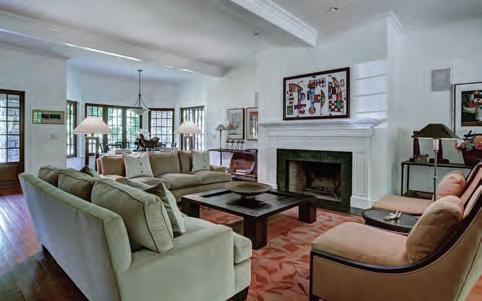


 SCAN FOR
FULL LISTING
SCAN FOR
FULL LISTING
Gary R. DePersia Licensed Associate Real Estate Broker m 516.380.0538 | gdp@corcoran.com Real estate agents affiliated with The Corcoran Group are independent contractors and are not employees of The Corcoran Group. Equal Housing Opportunity. The Corcoran Group is a licensed real estate broker located at 660 Madison Ave, NY, NY 10065. All listing phone numbers indicate listing agent direct line unless otherwise noted. All information furnished regarding property for sale or rent or regarding financing is from sources deemed reliable, but Corcoran makes no warranty or representation as to the accuracy thereof. All property information is presented subject to errors, omissions, price changes, changed property conditions, and withdrawal of the property from the market, without notice. All dimensions provided are approximate. To obtain exact dimensions, Corcoran advises you to hire a qualified architect or engineer.
Trust is a thingbeautiful

fiduciarytrust.com/avenue












